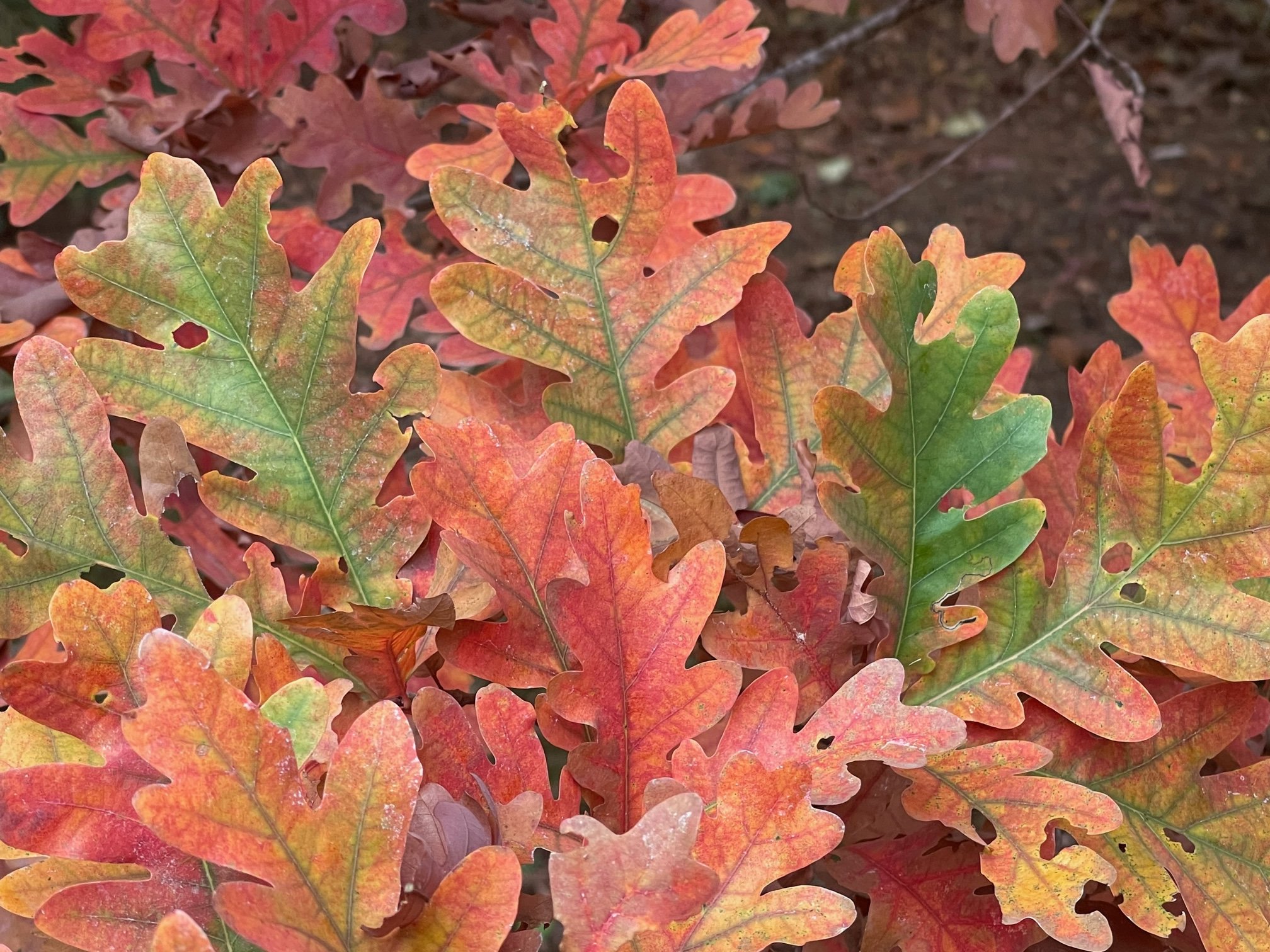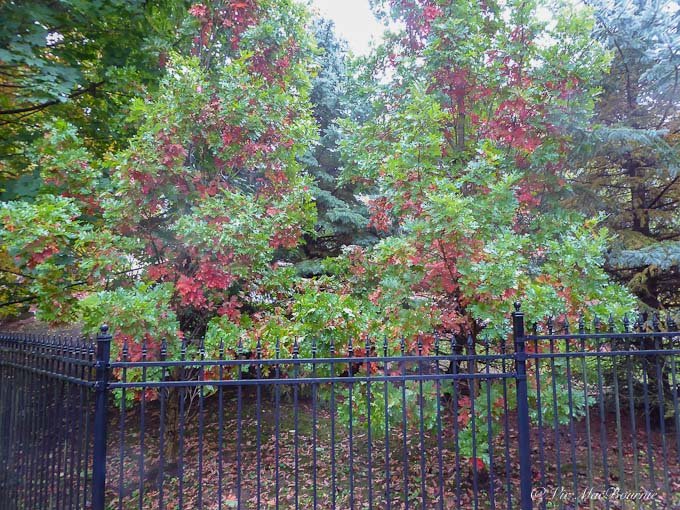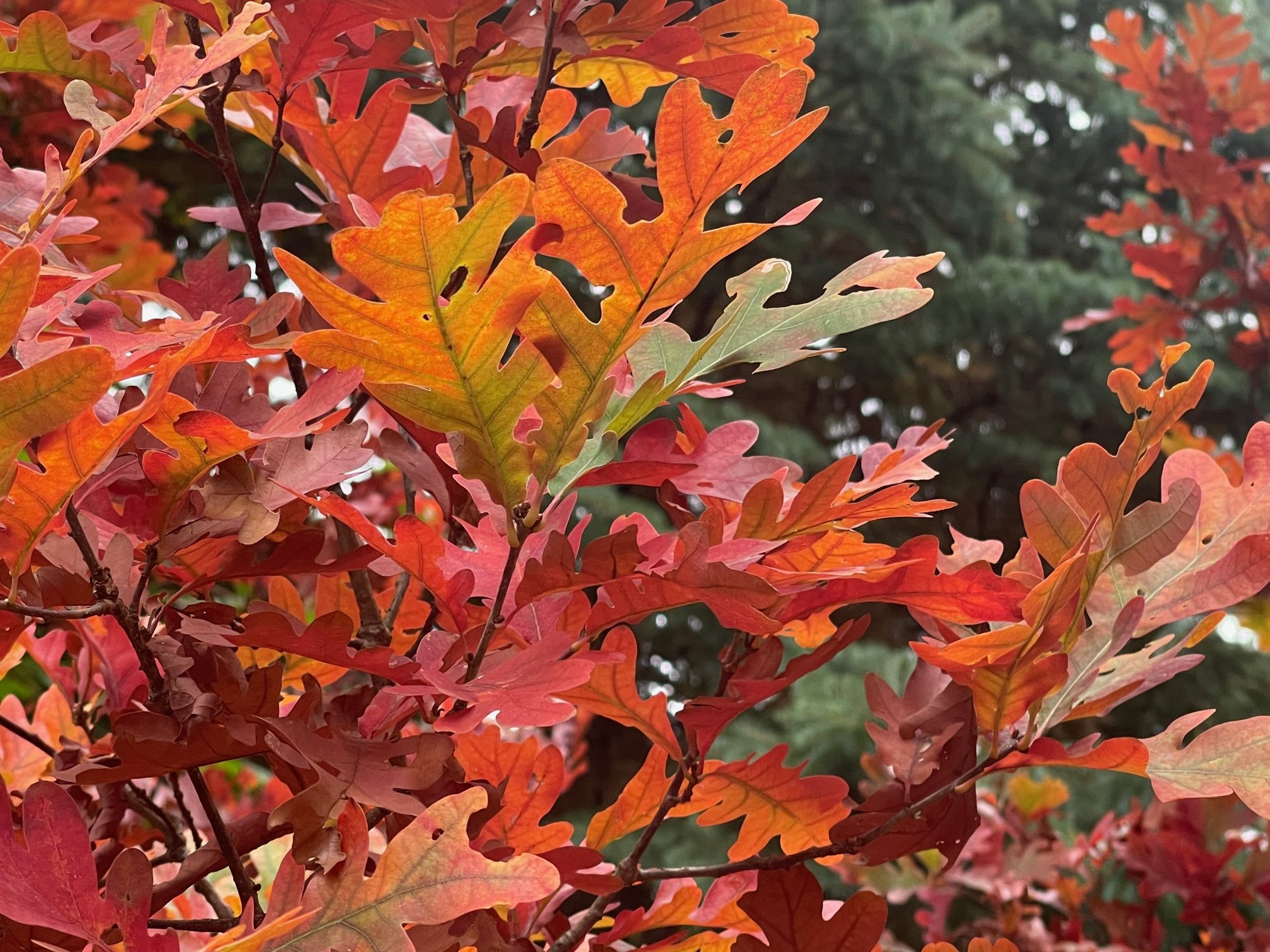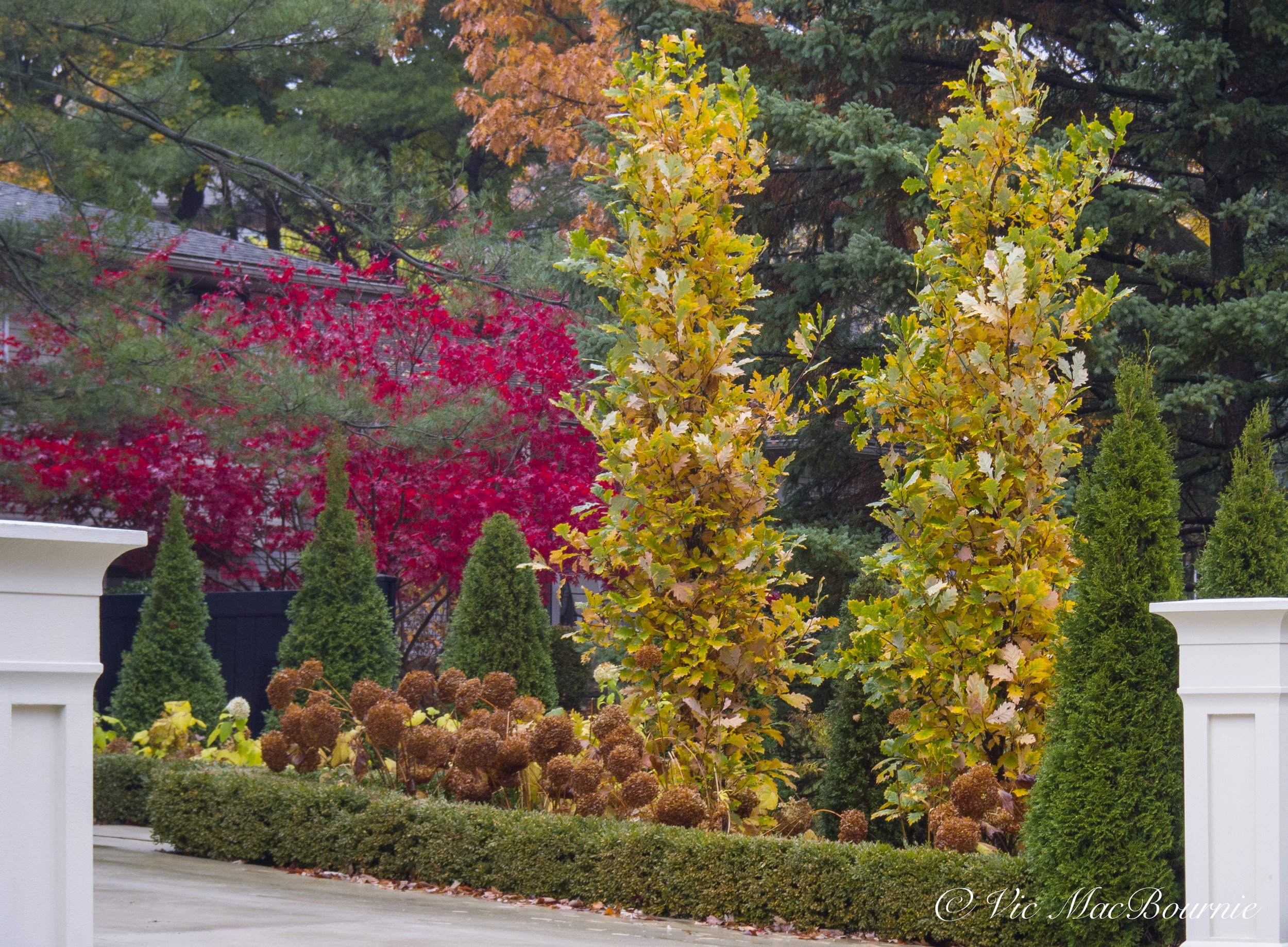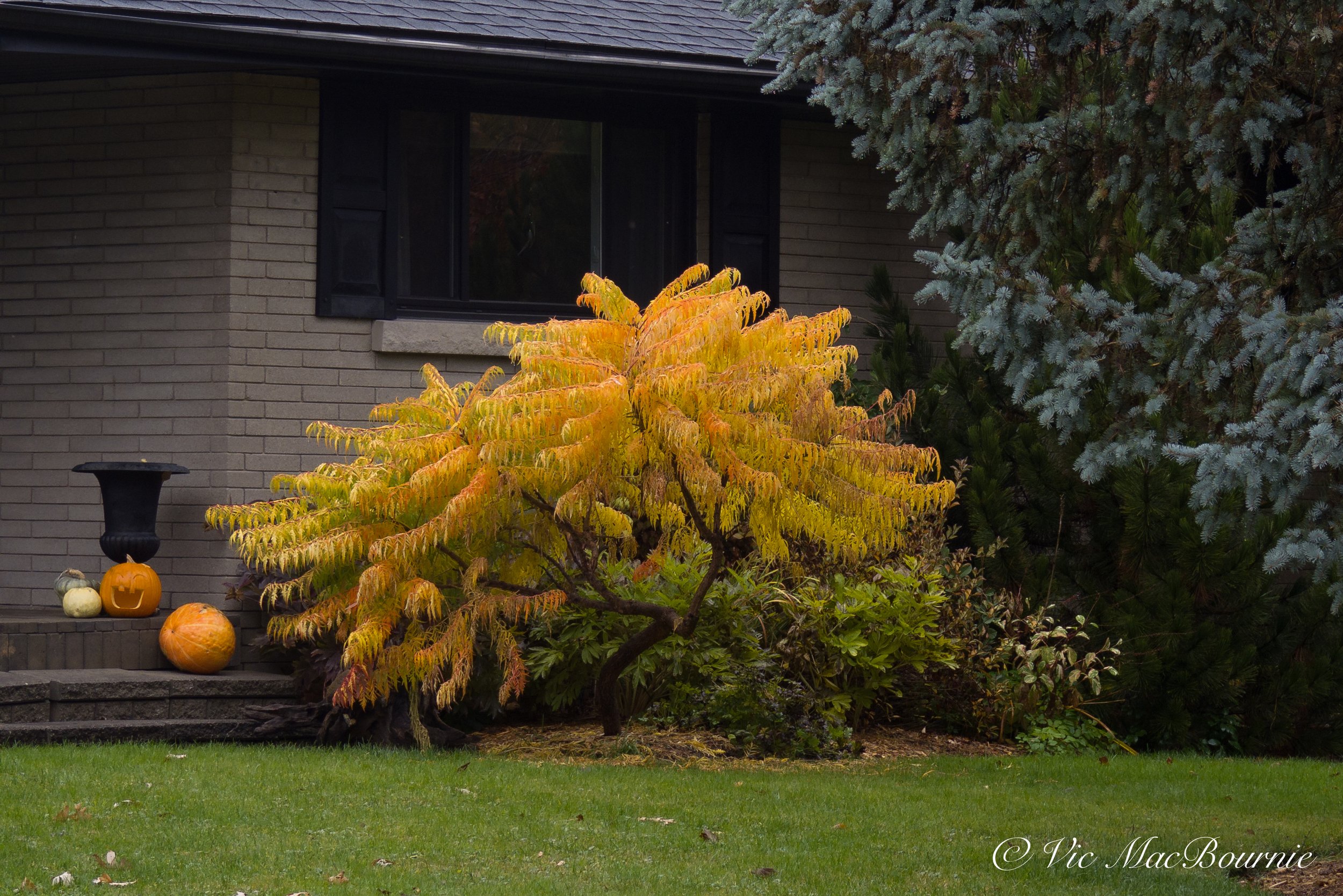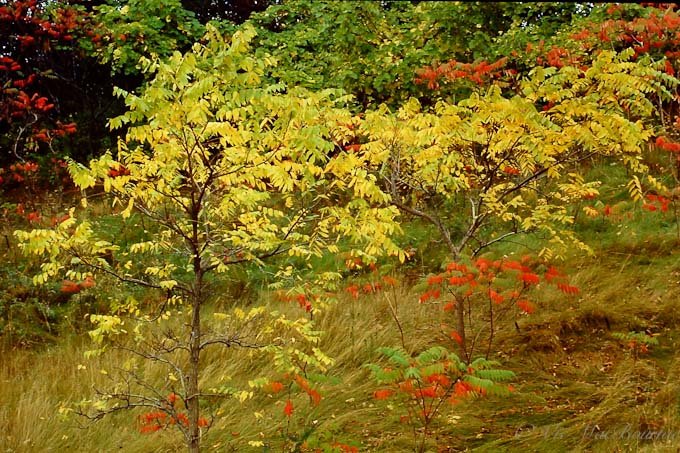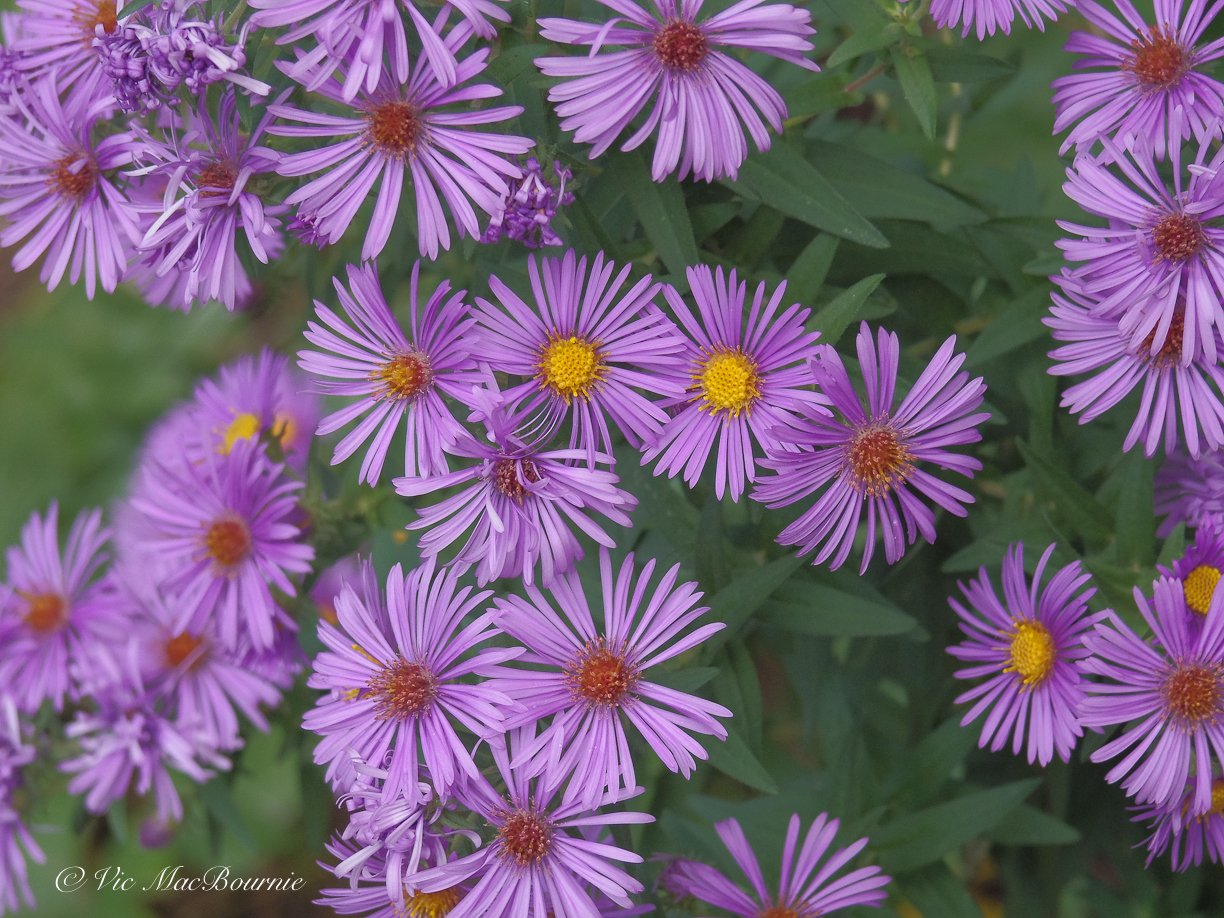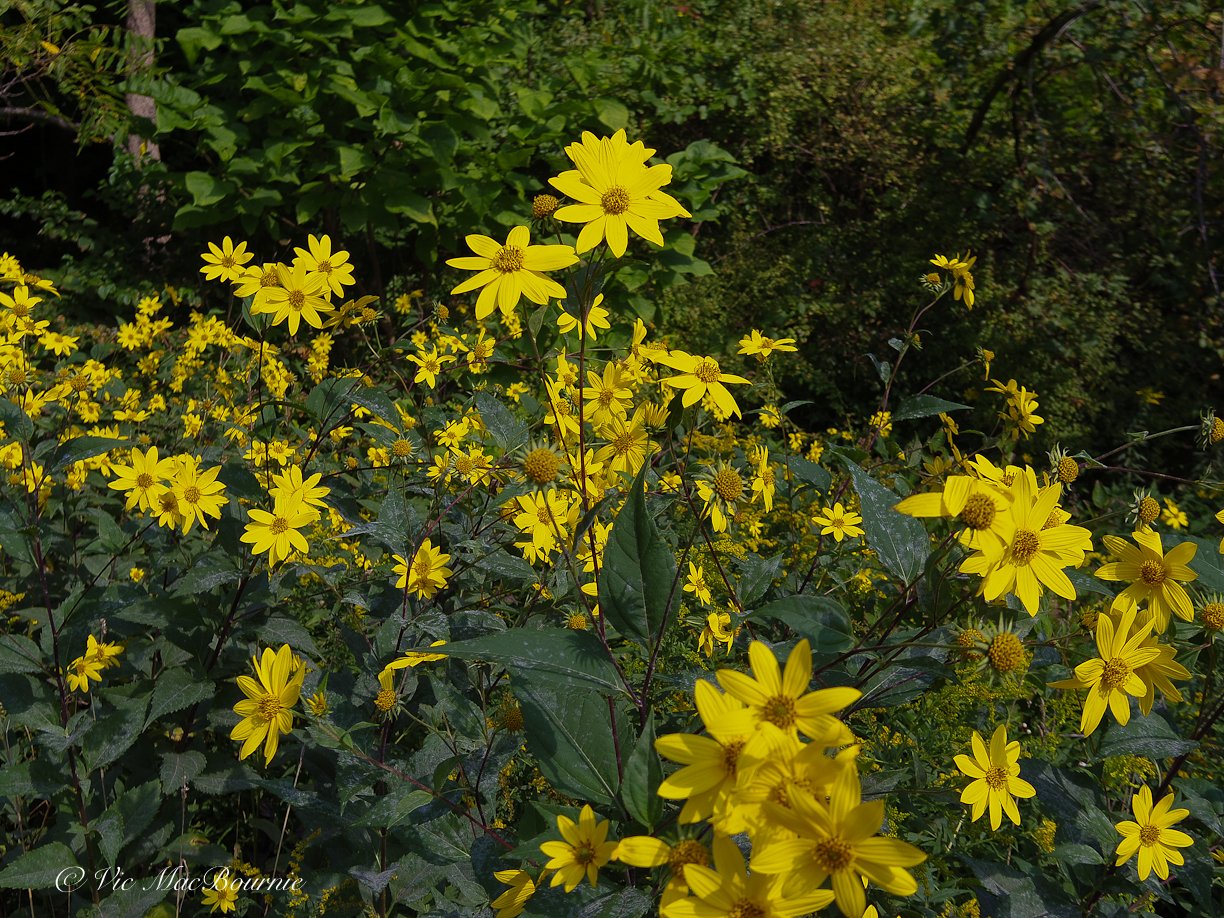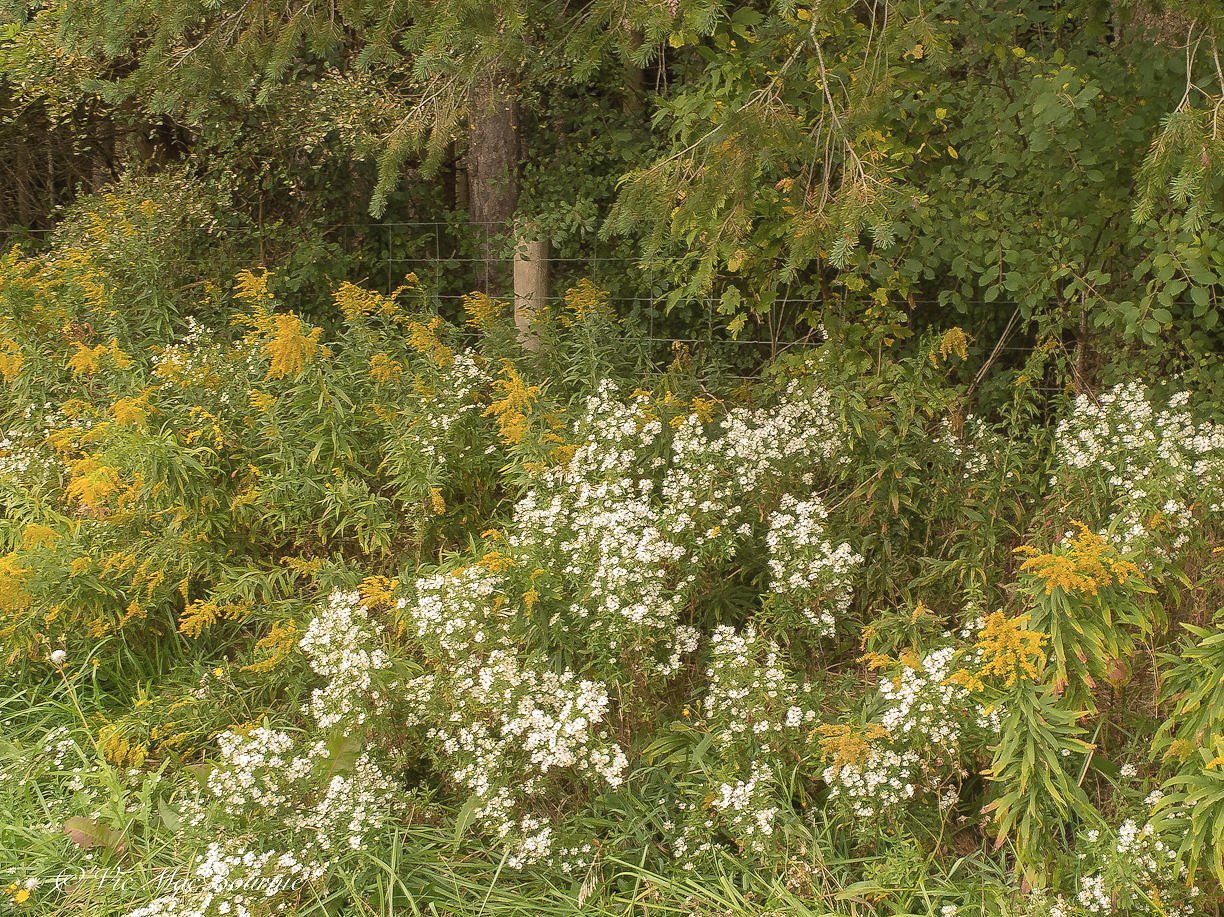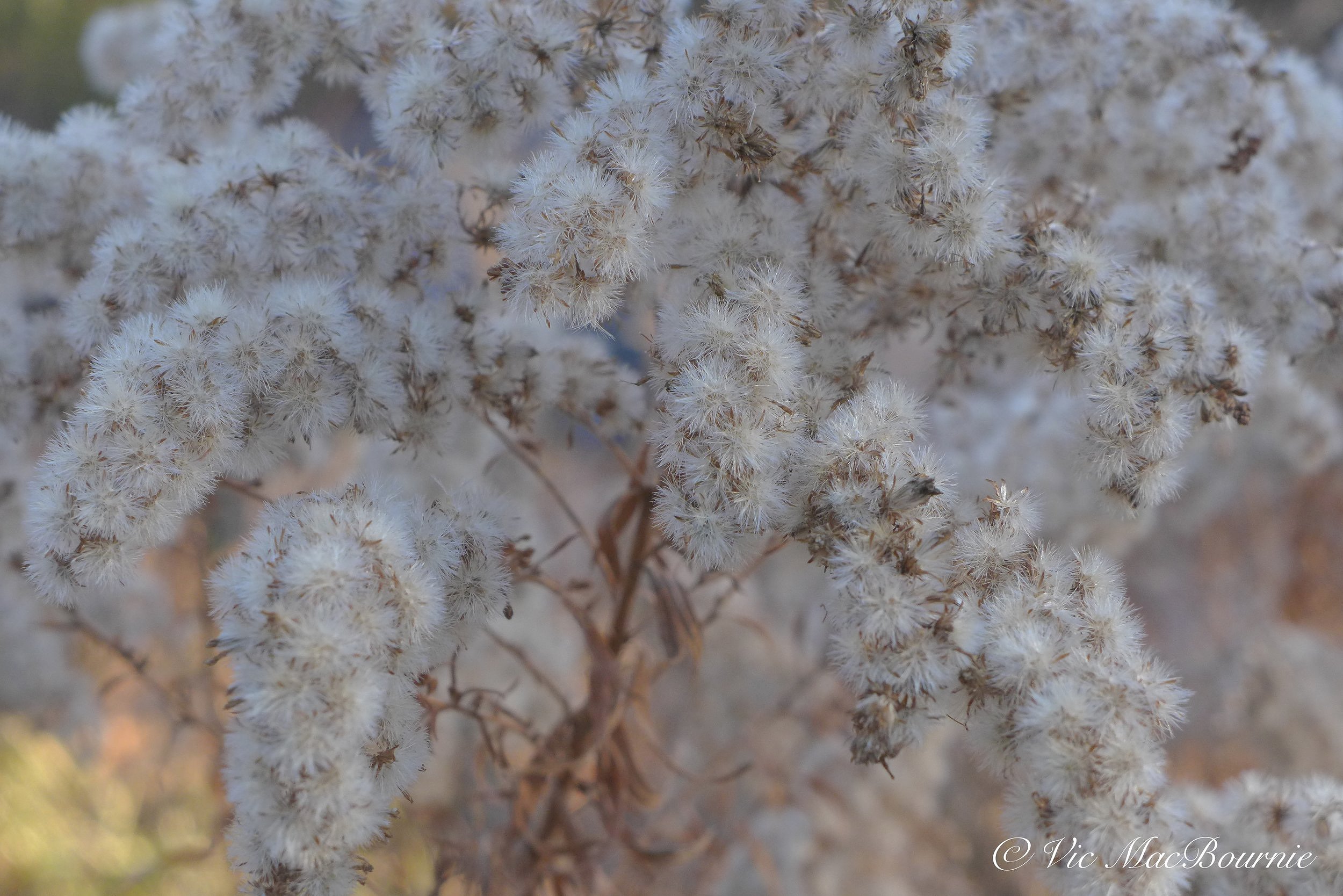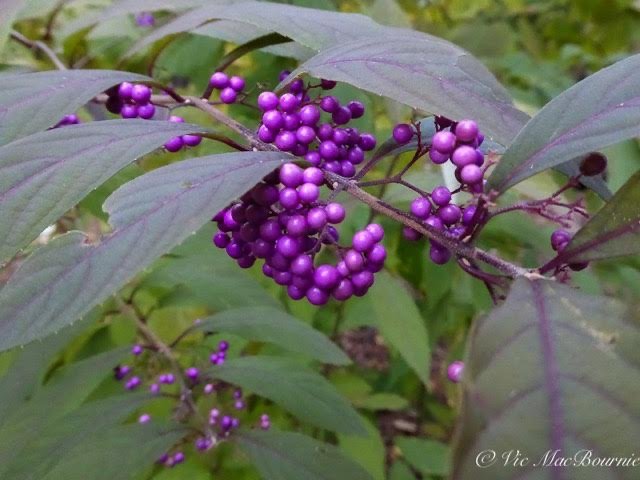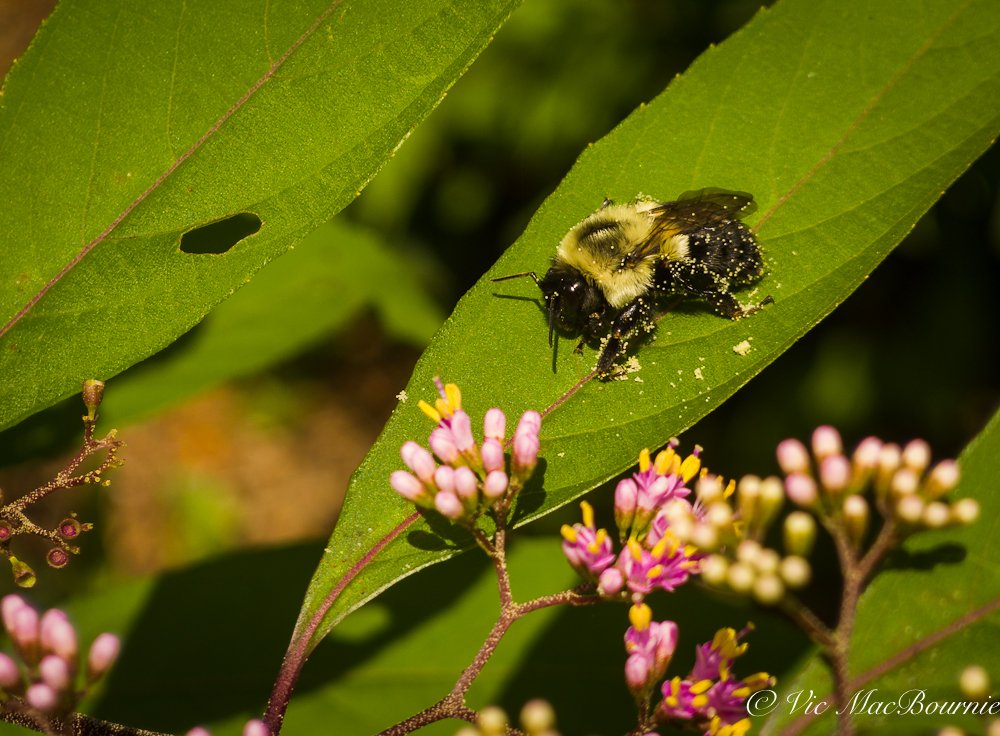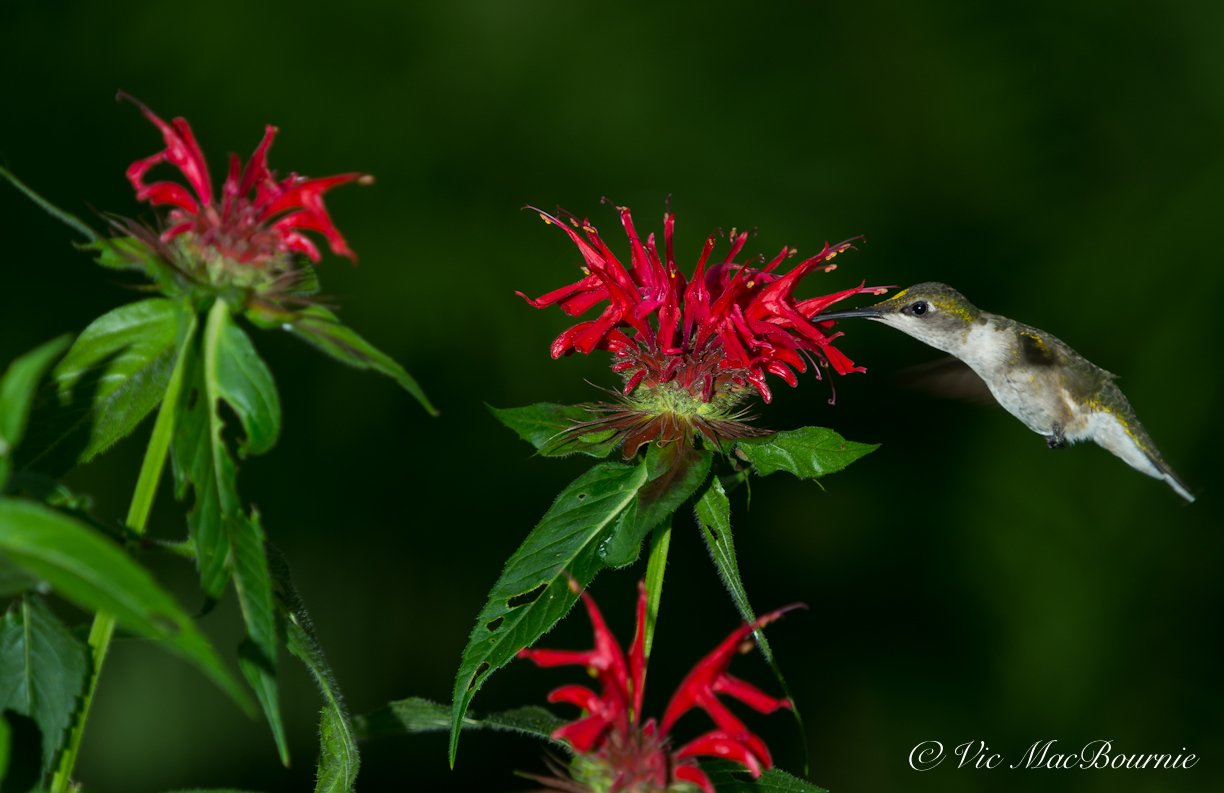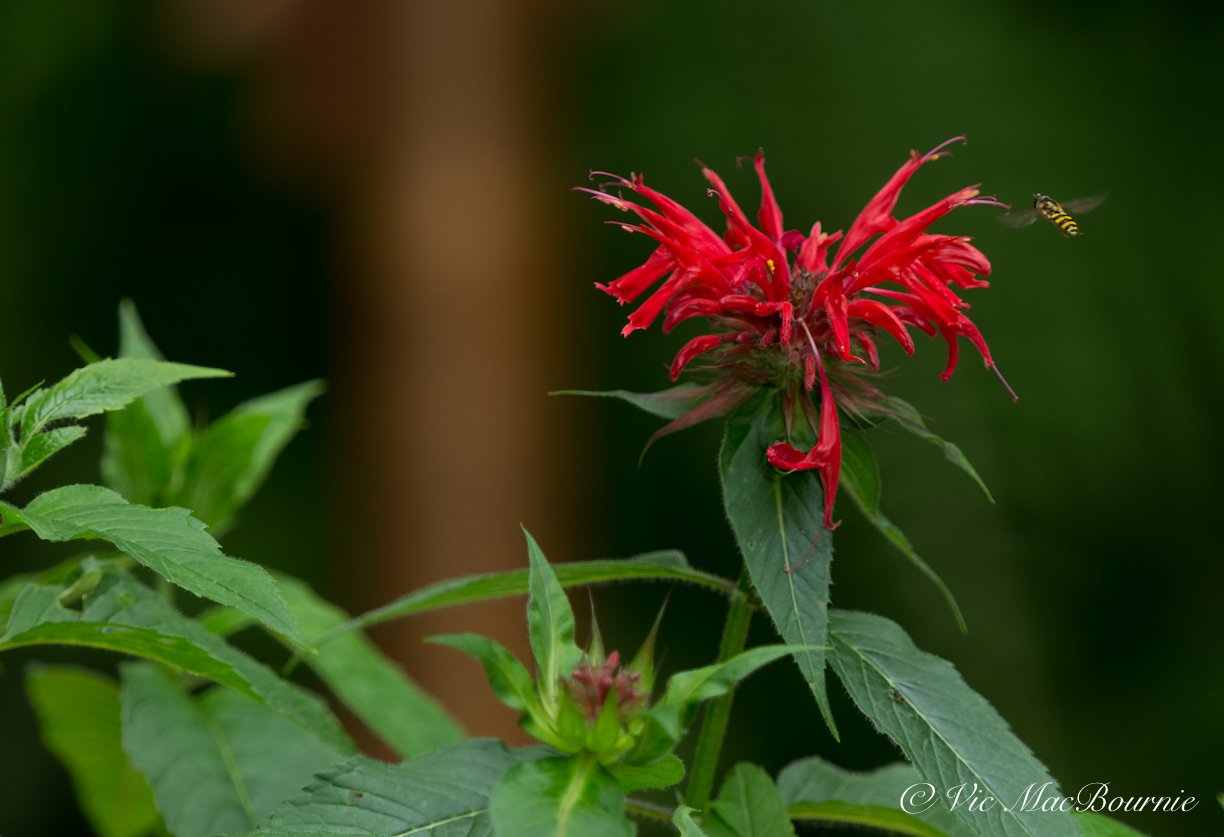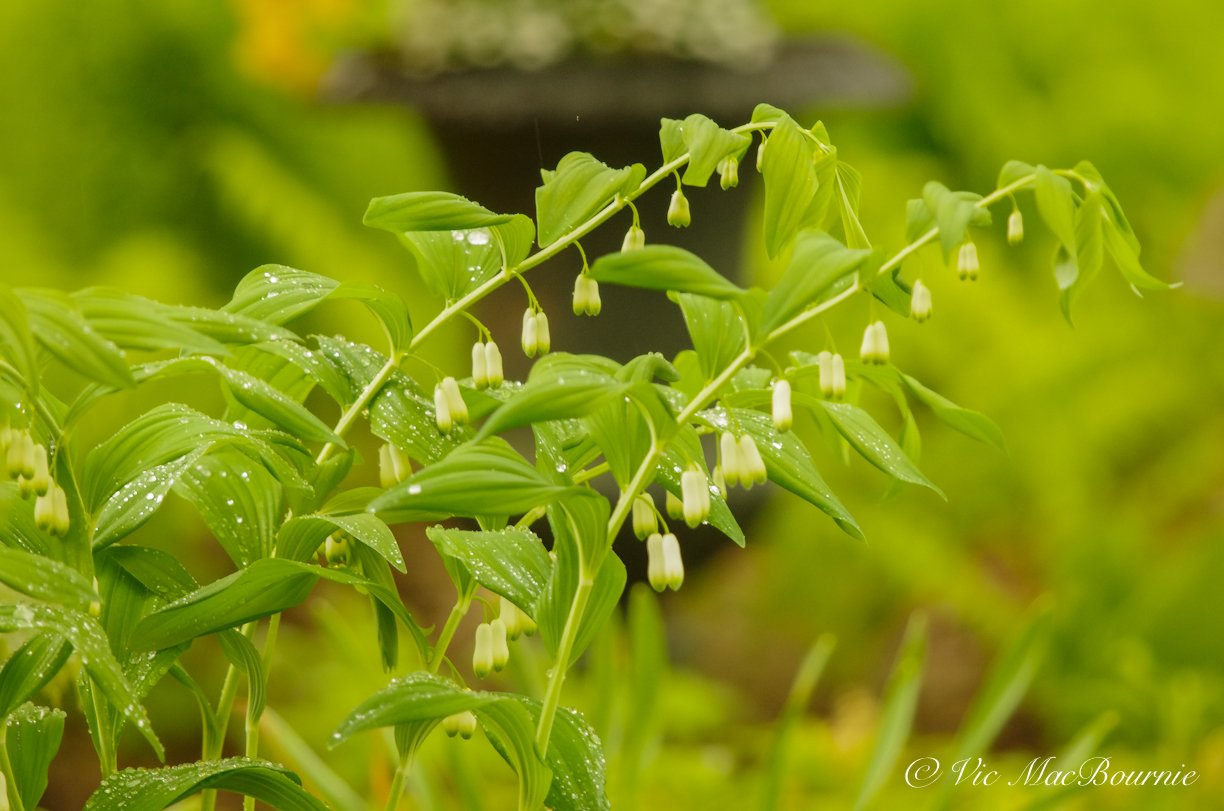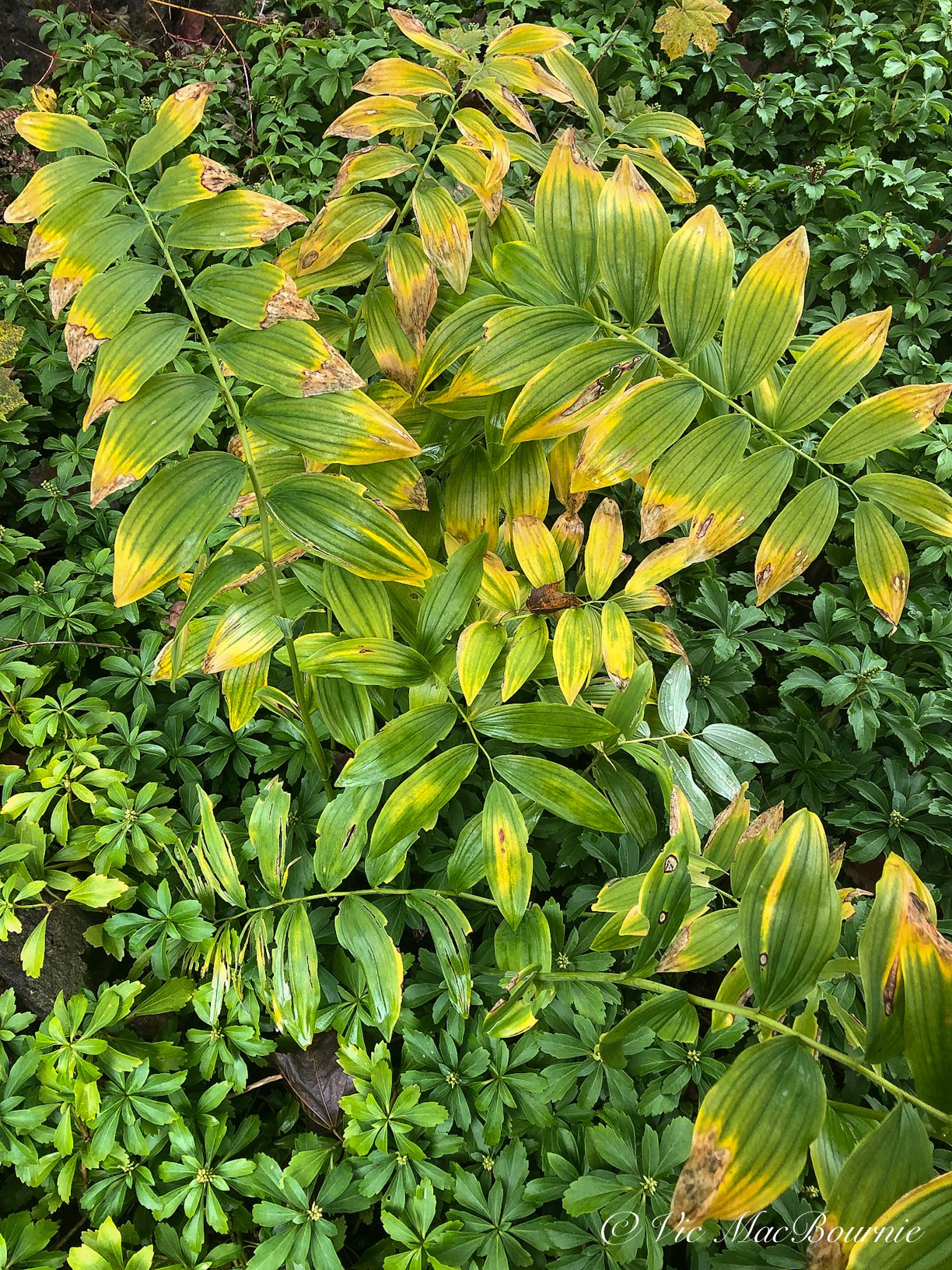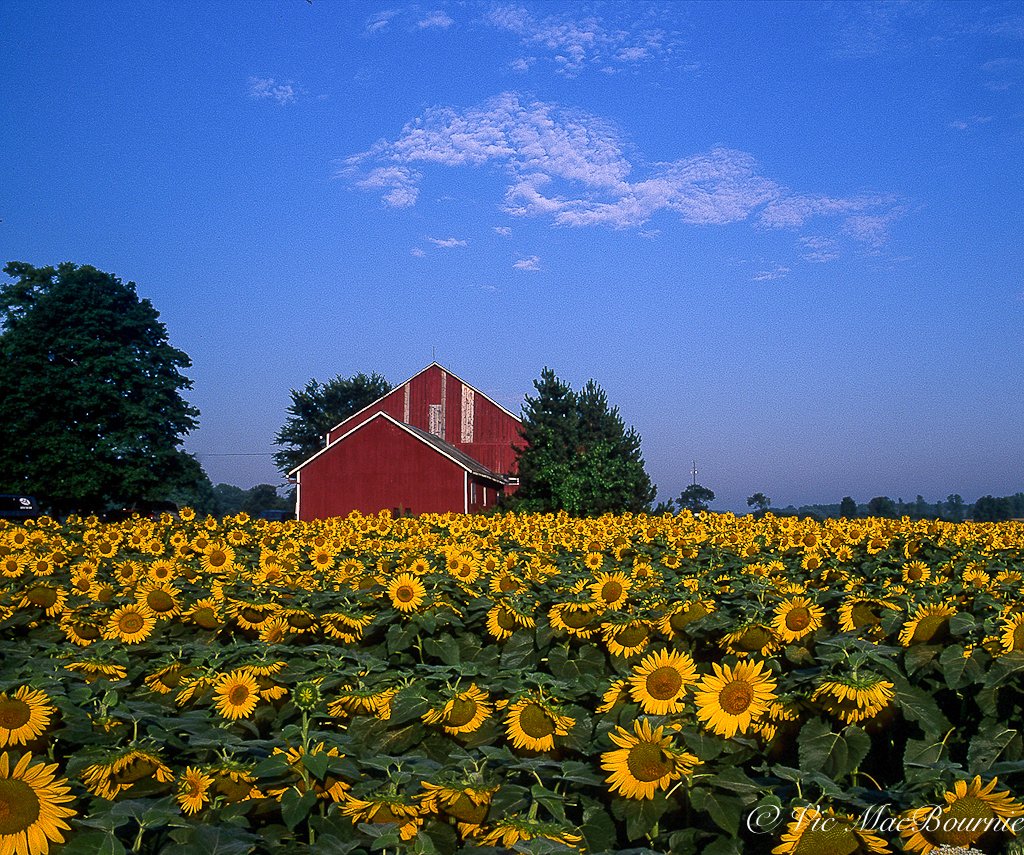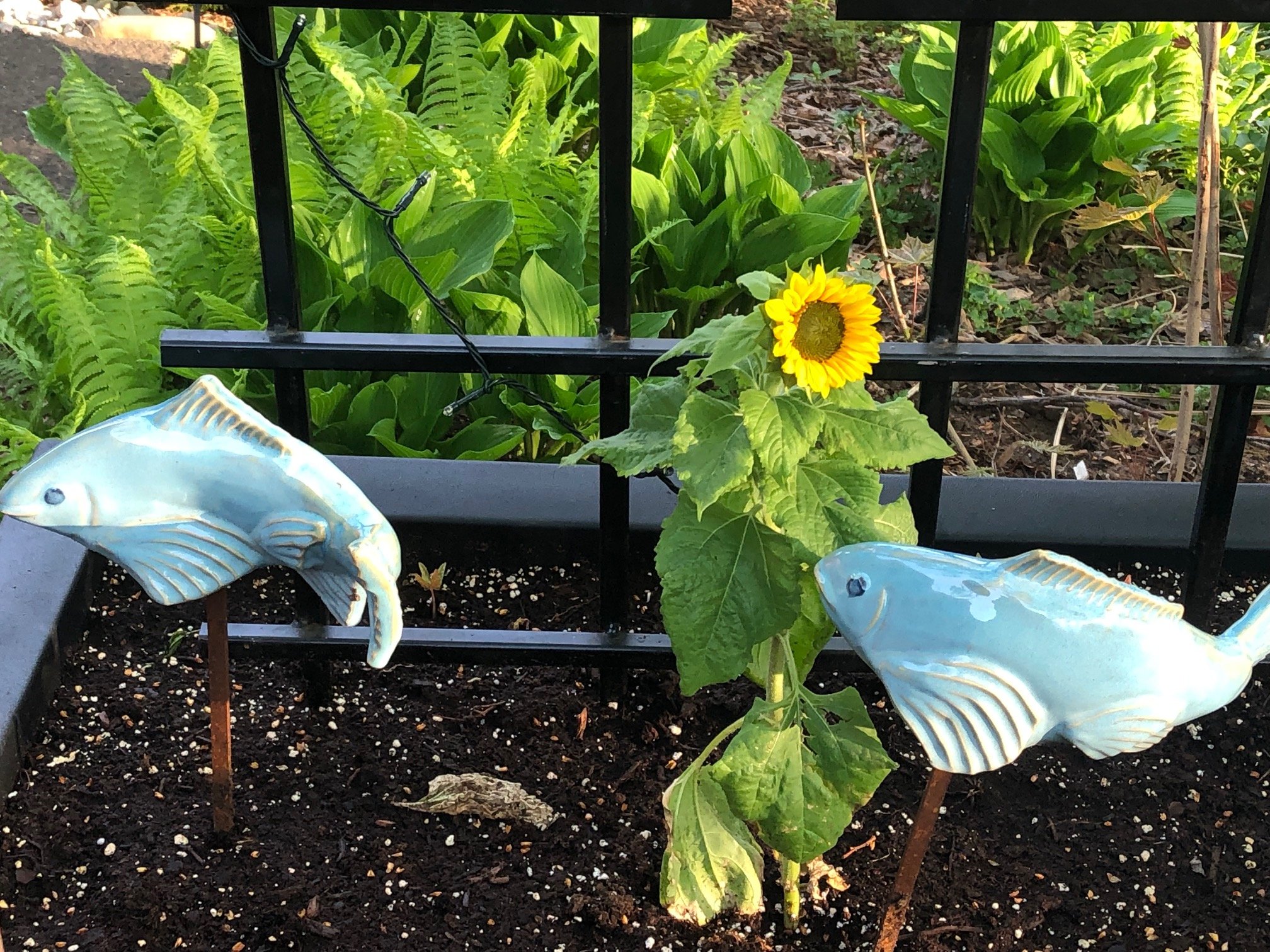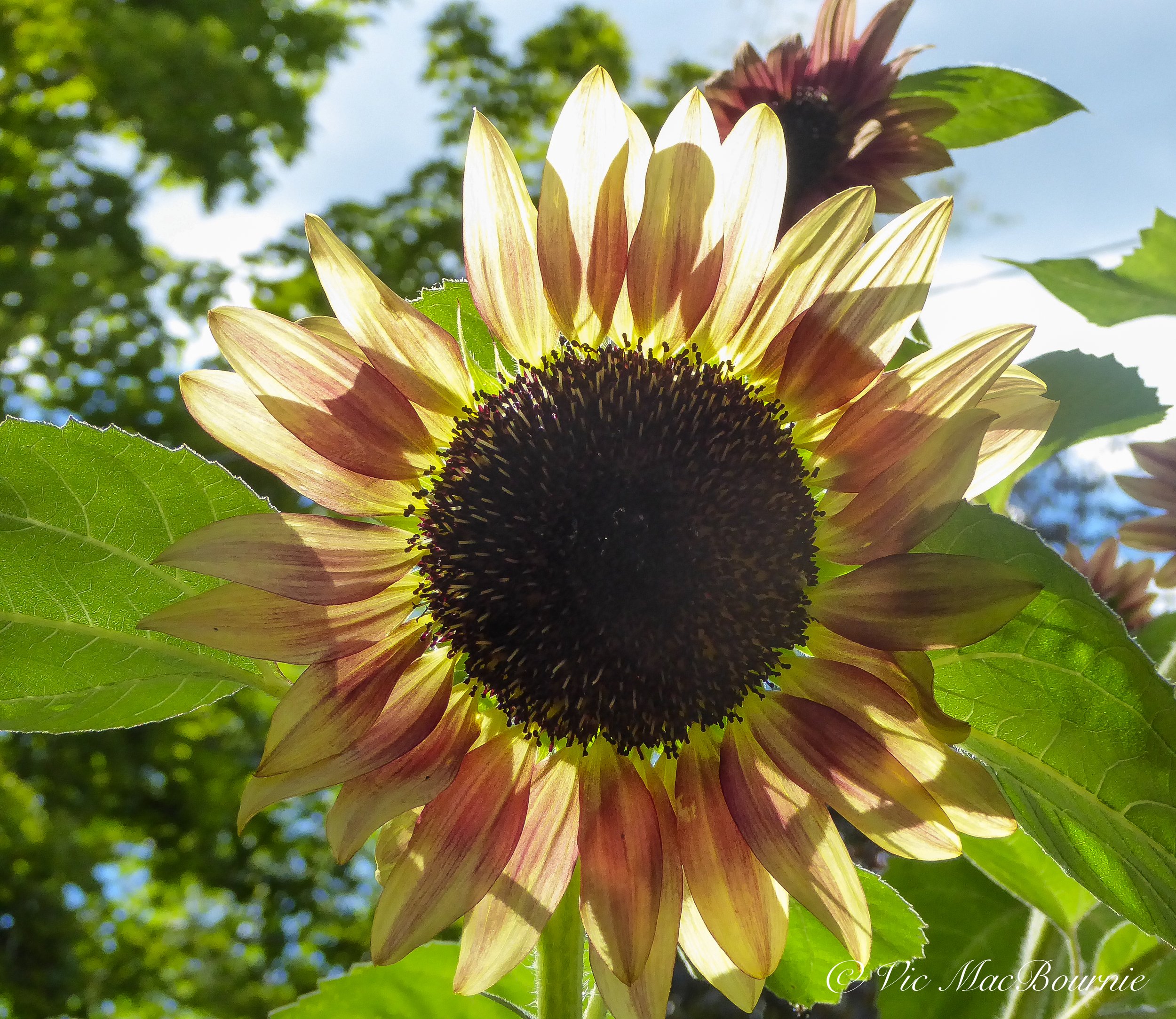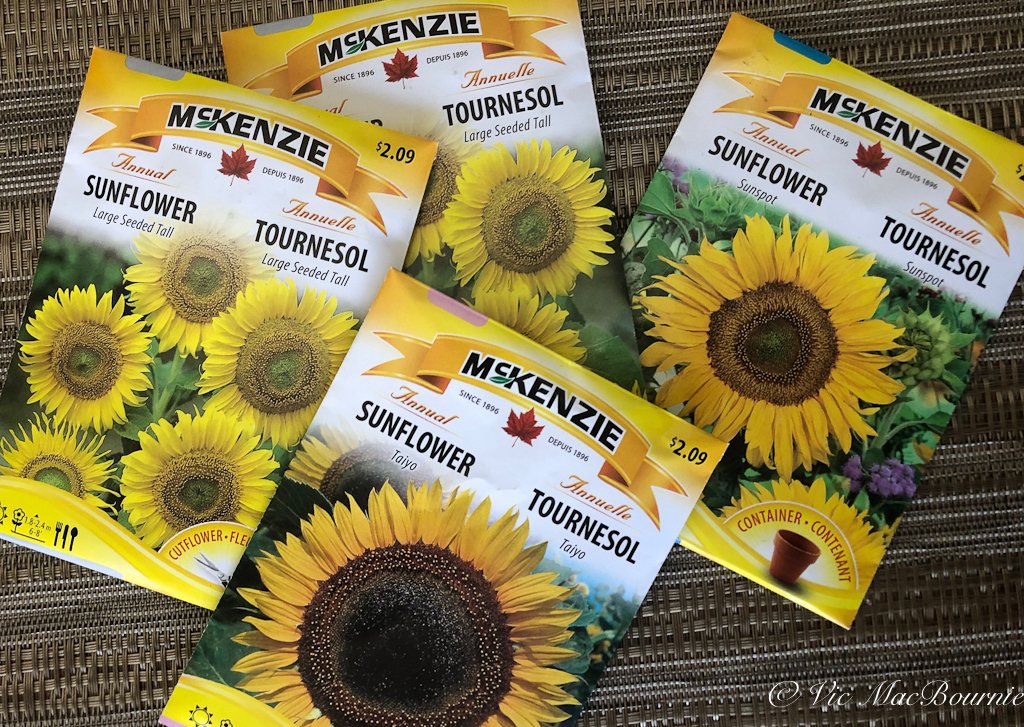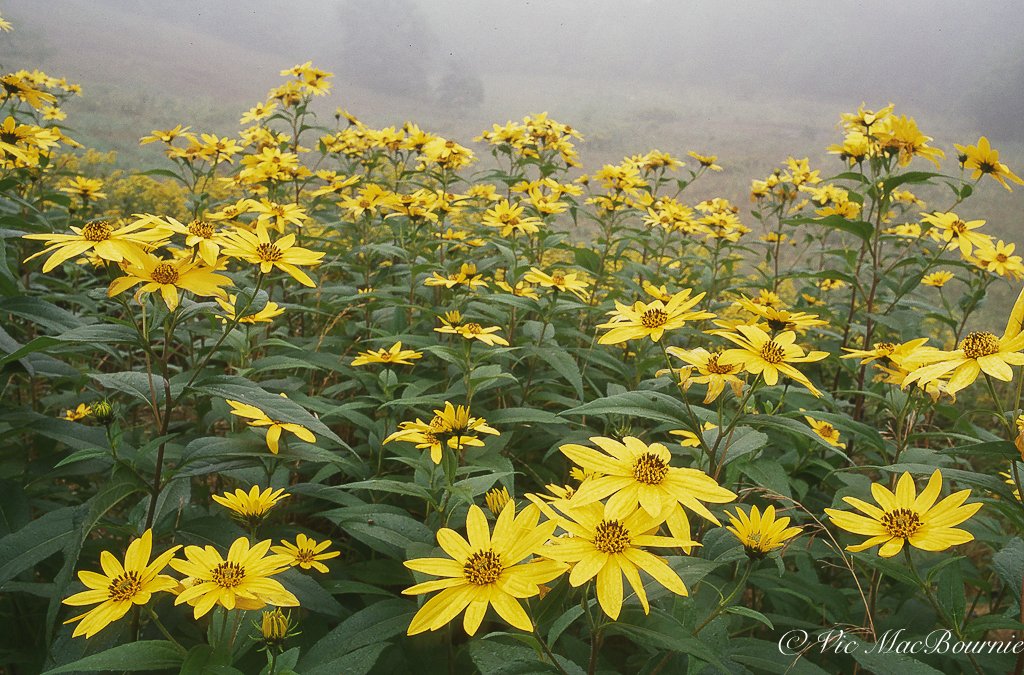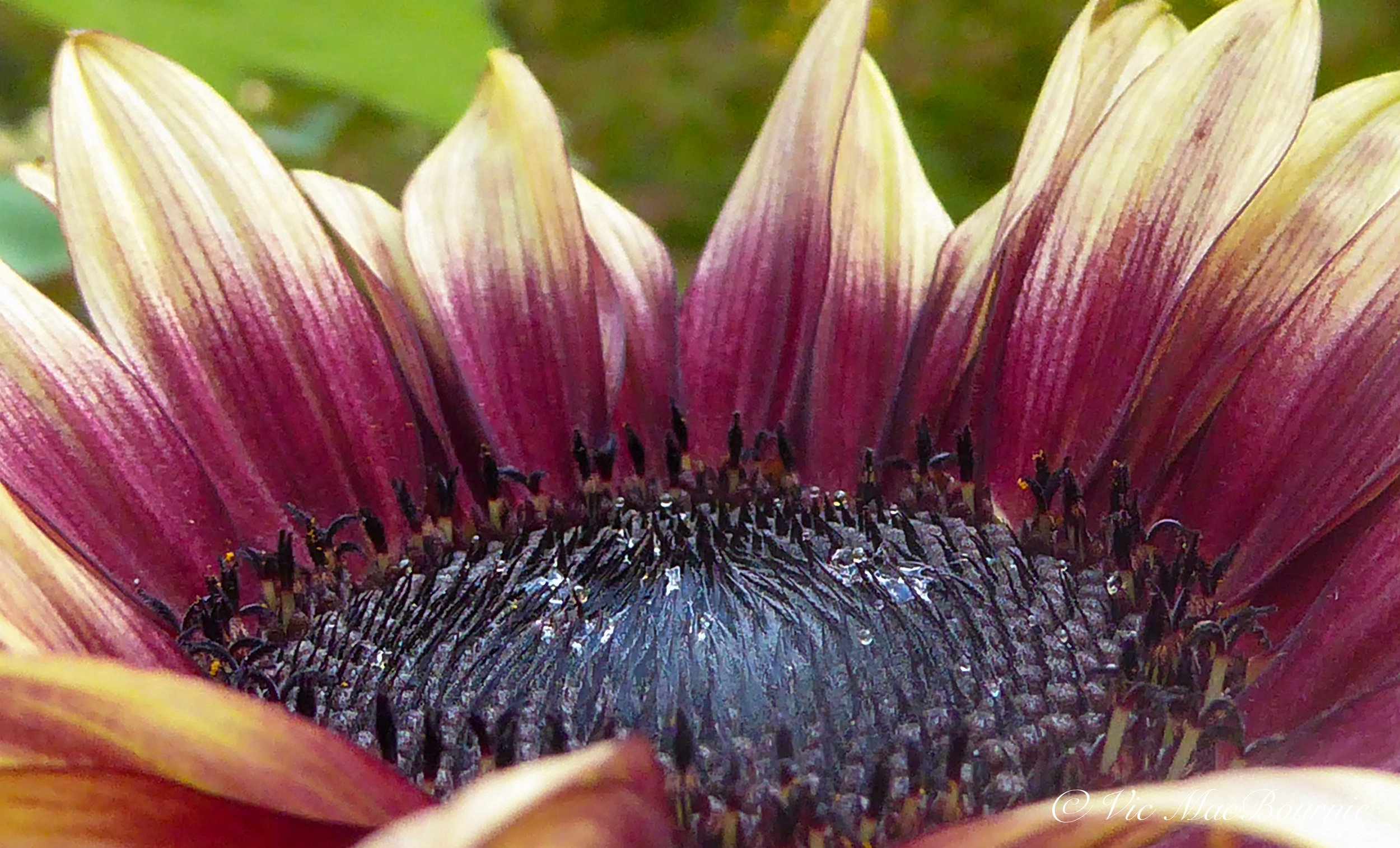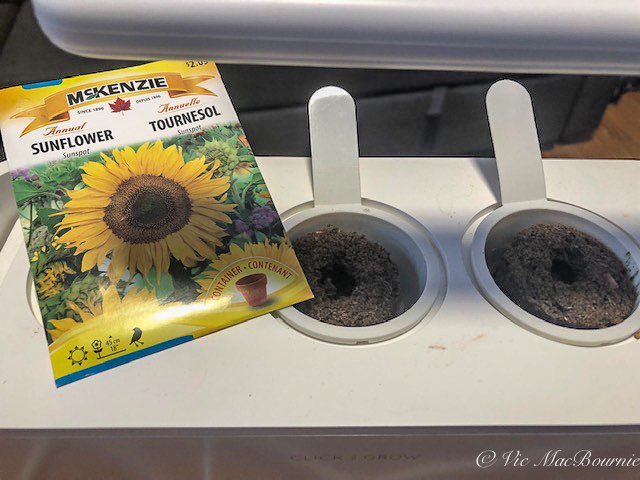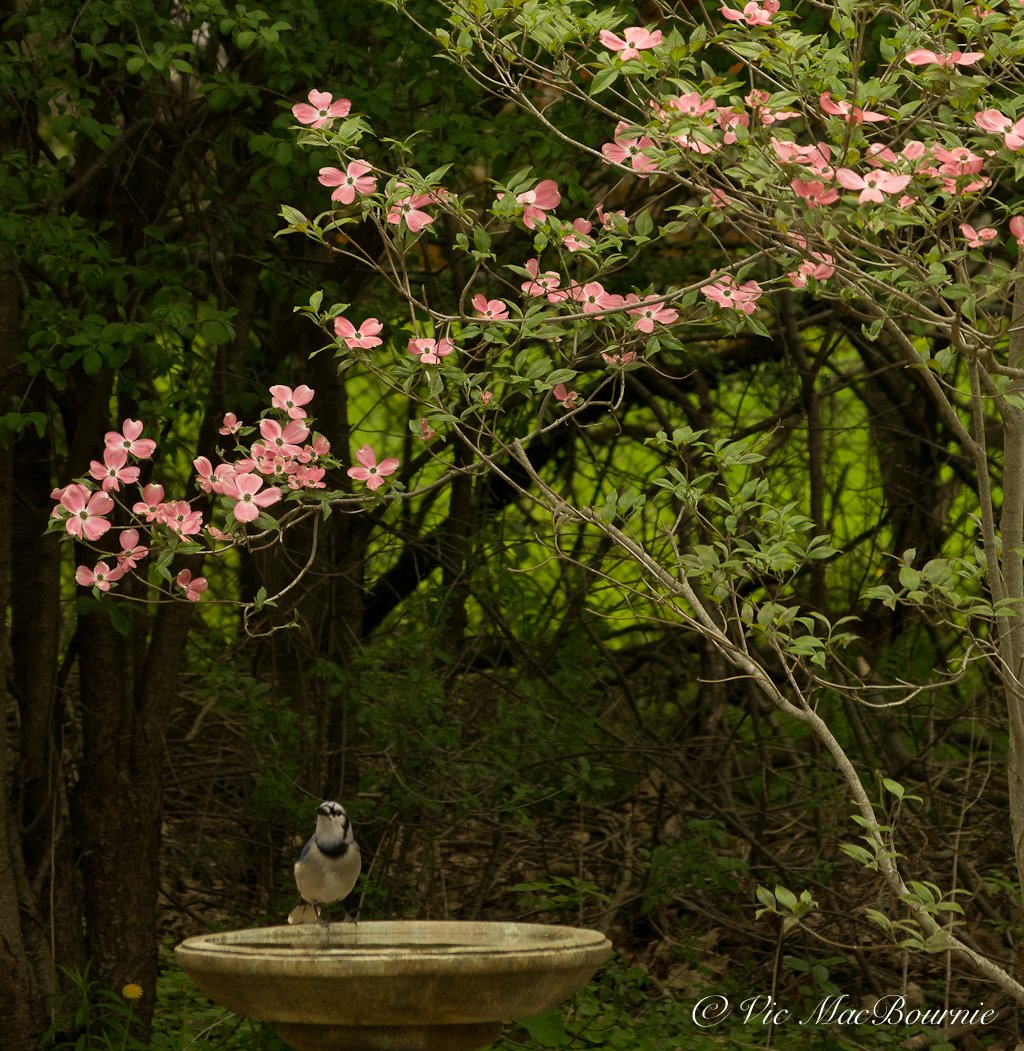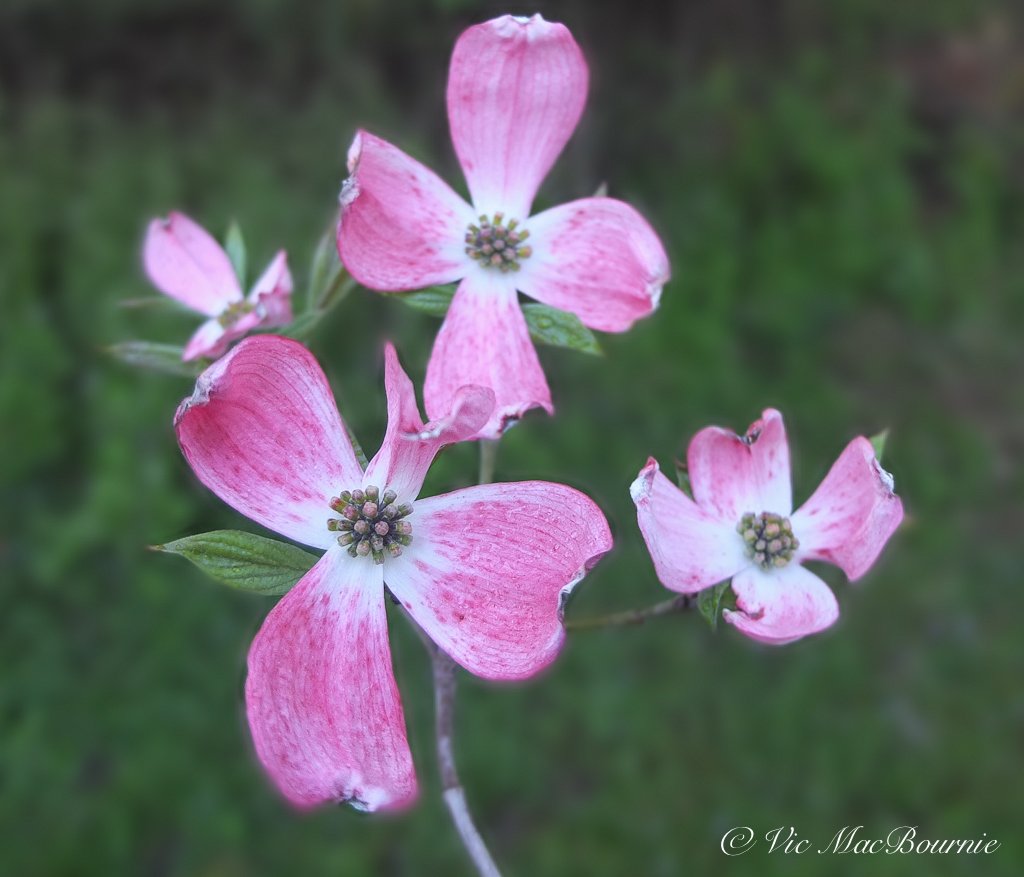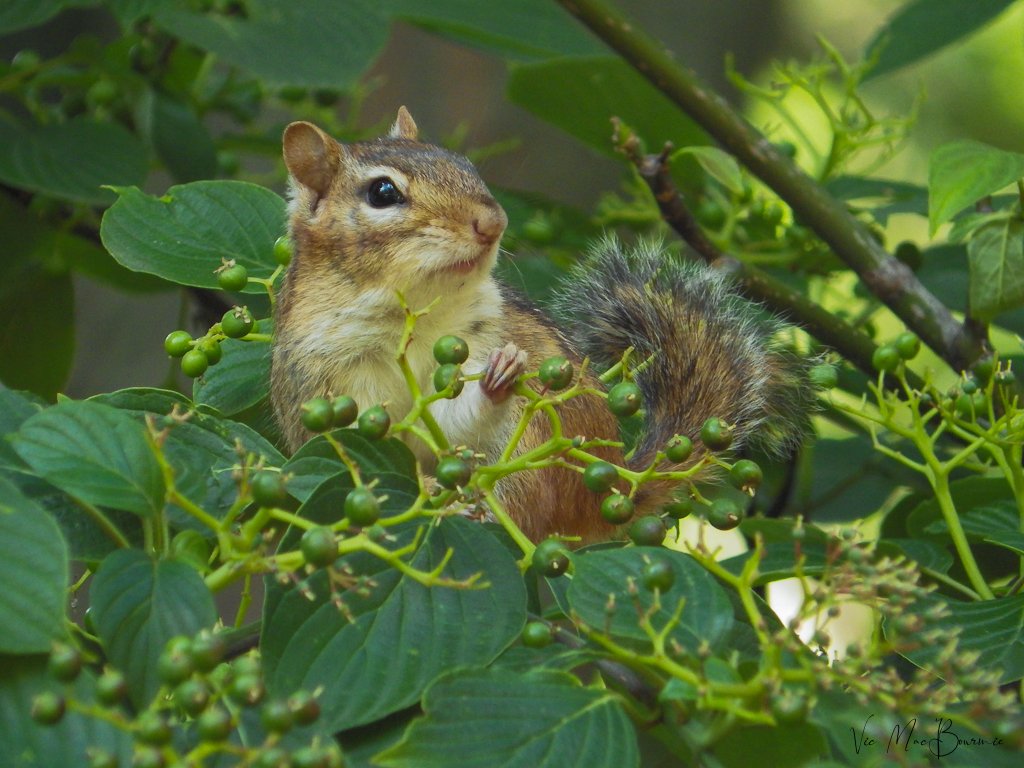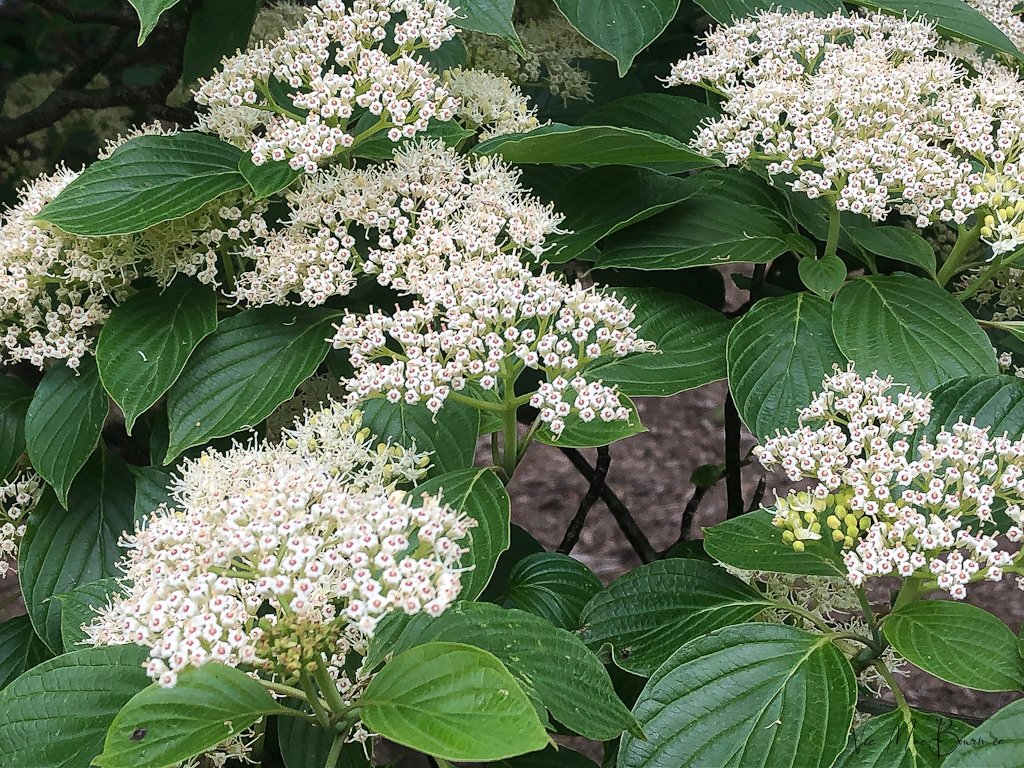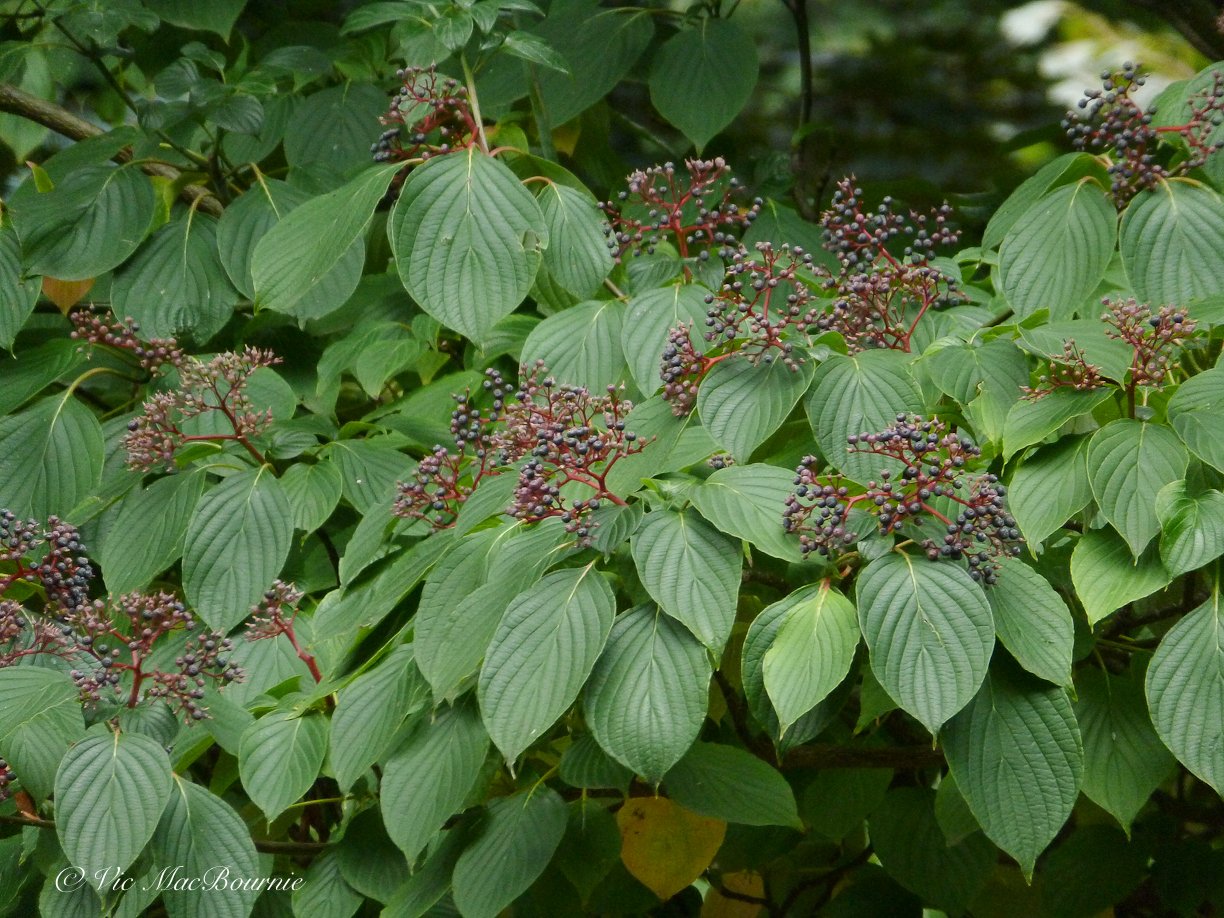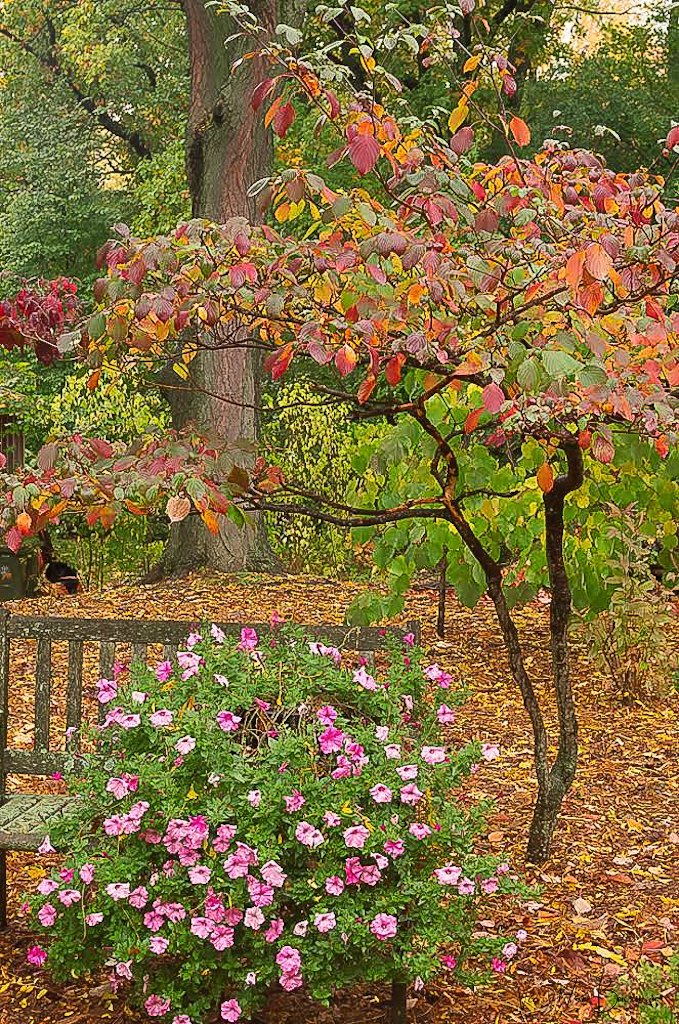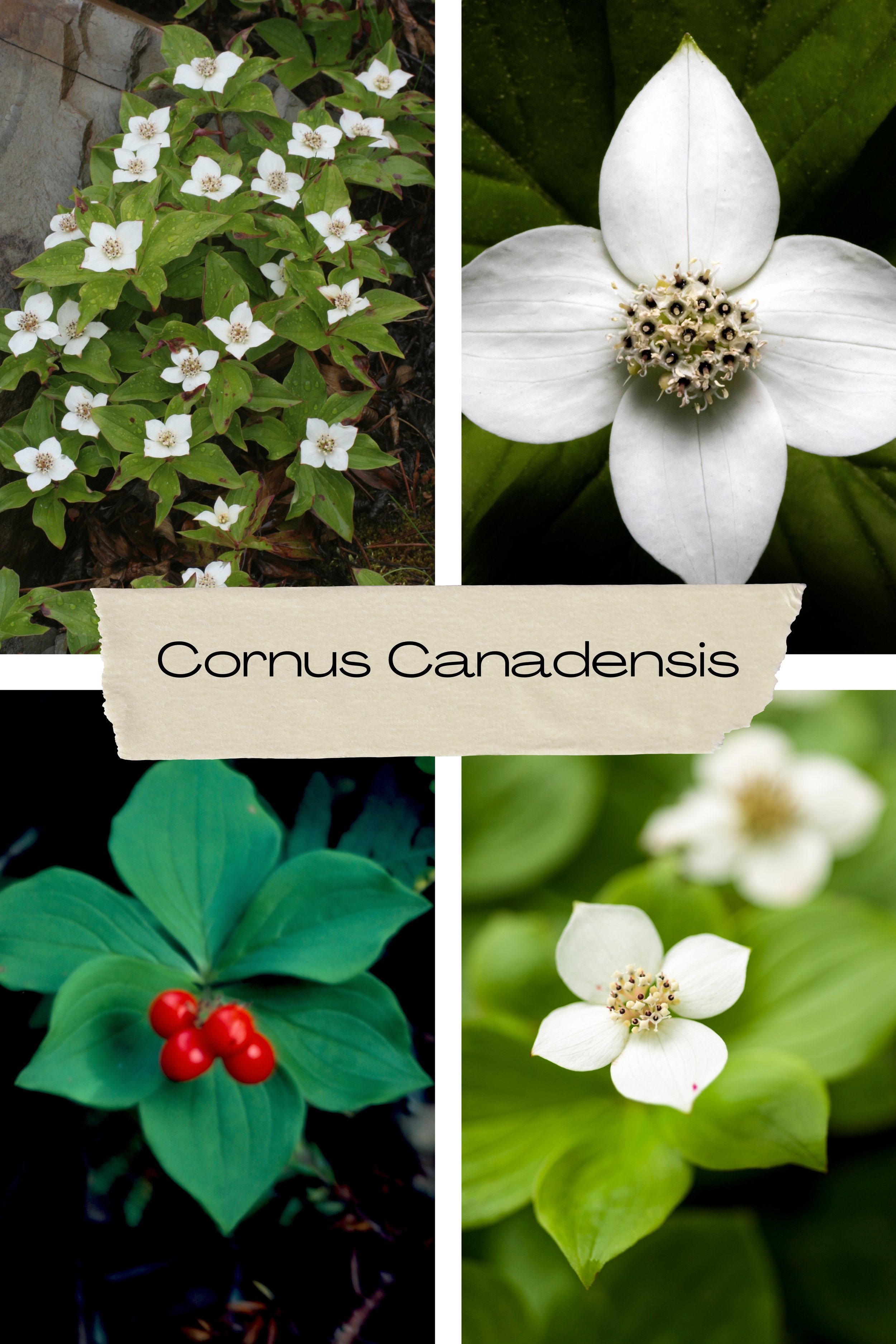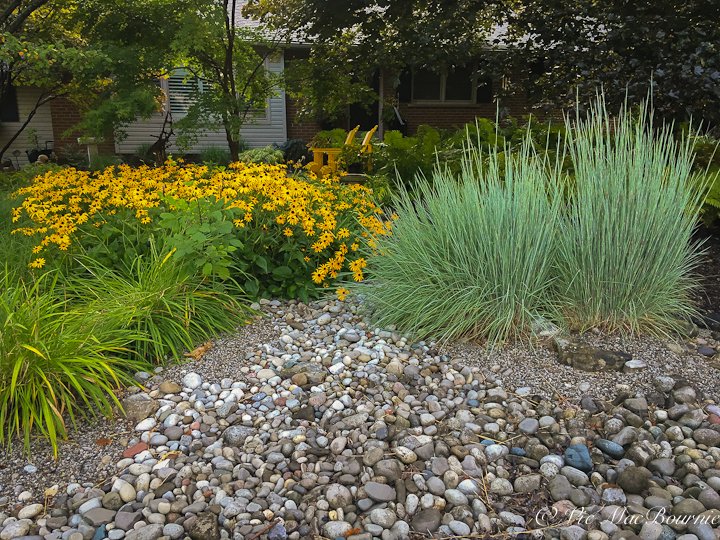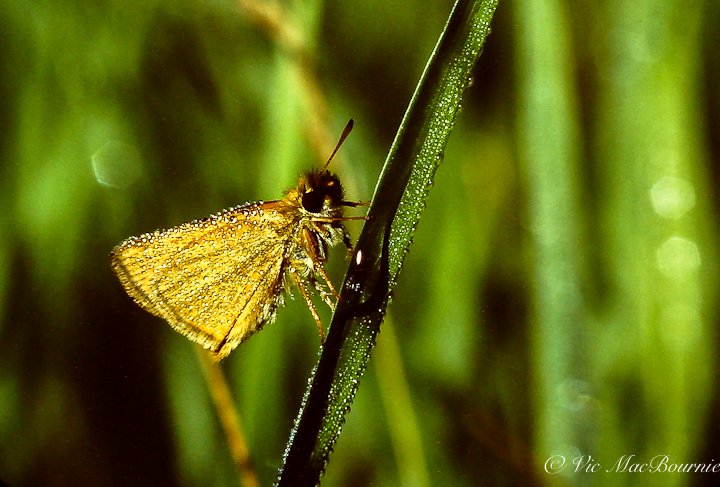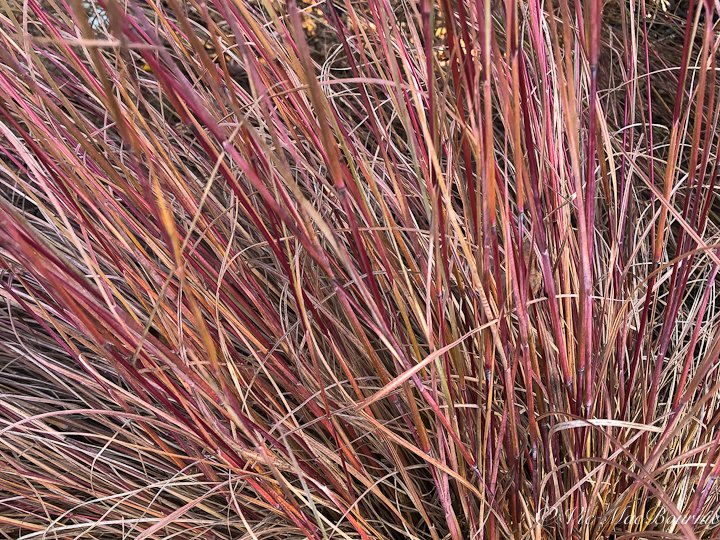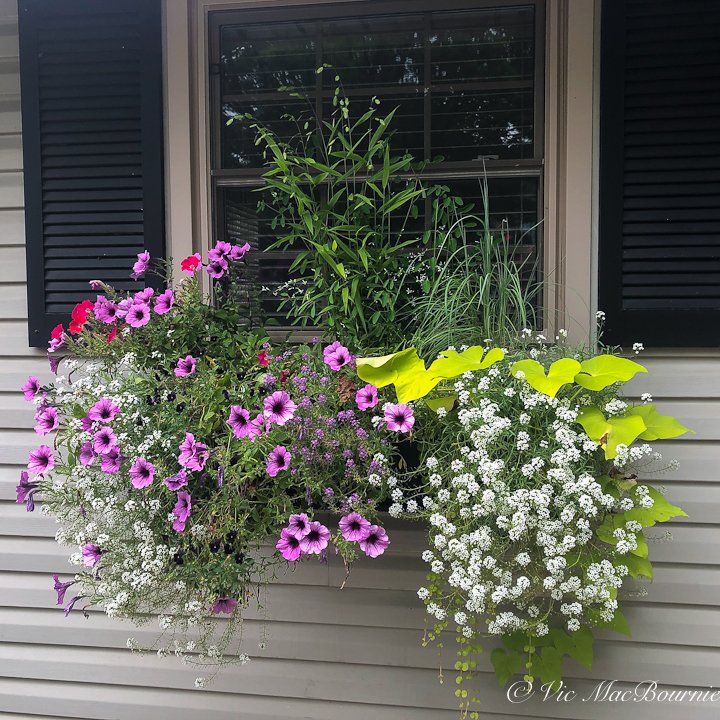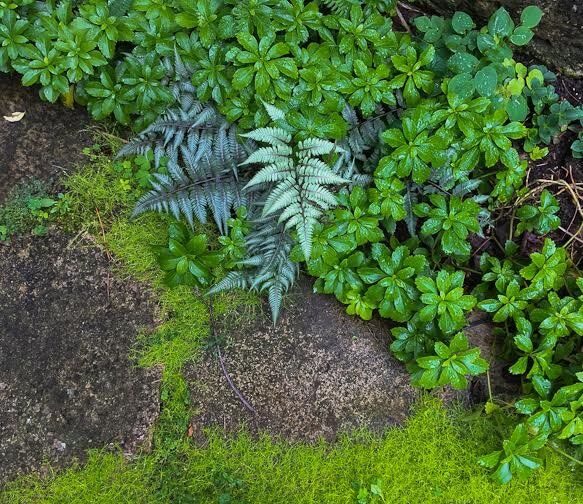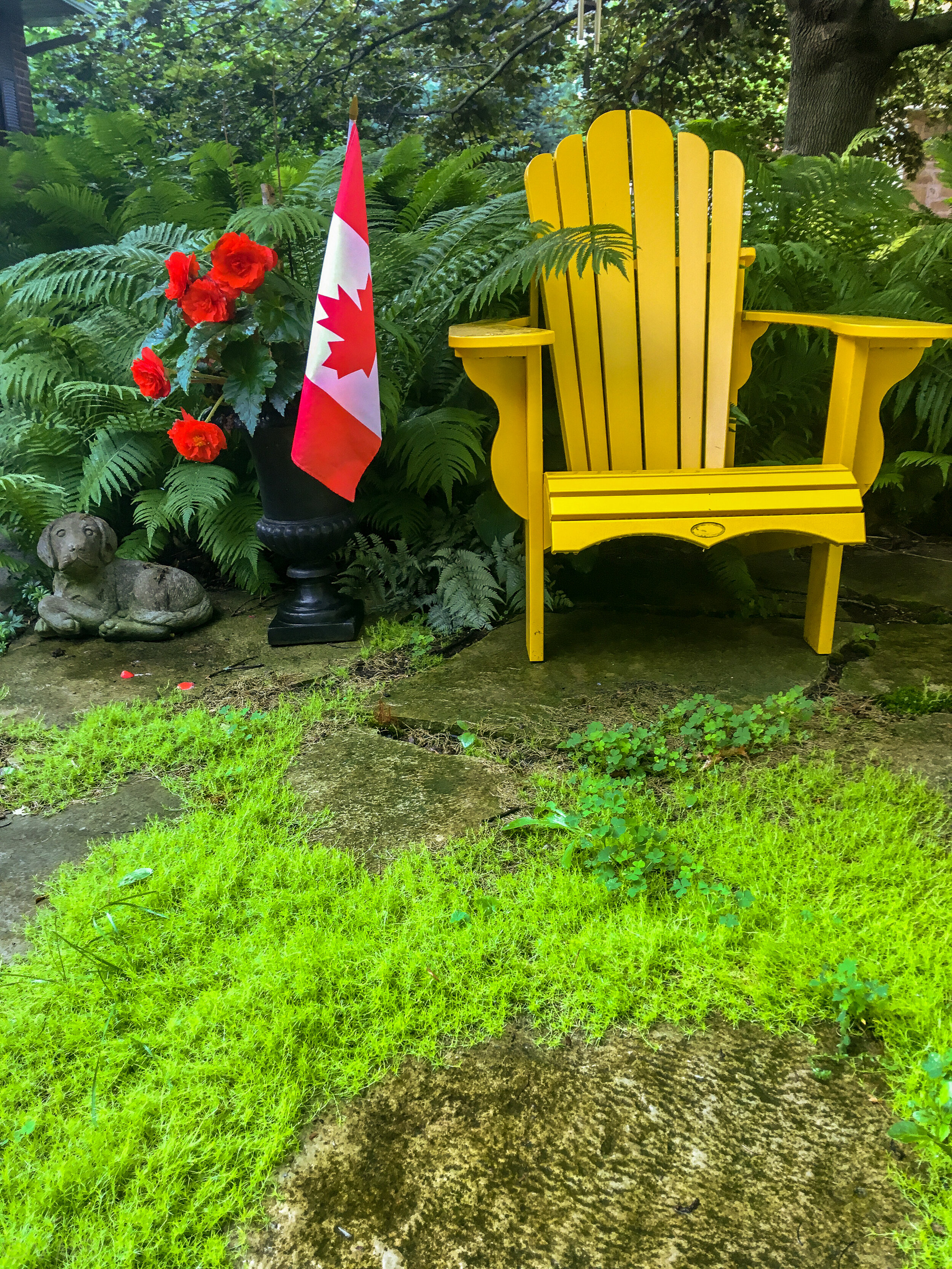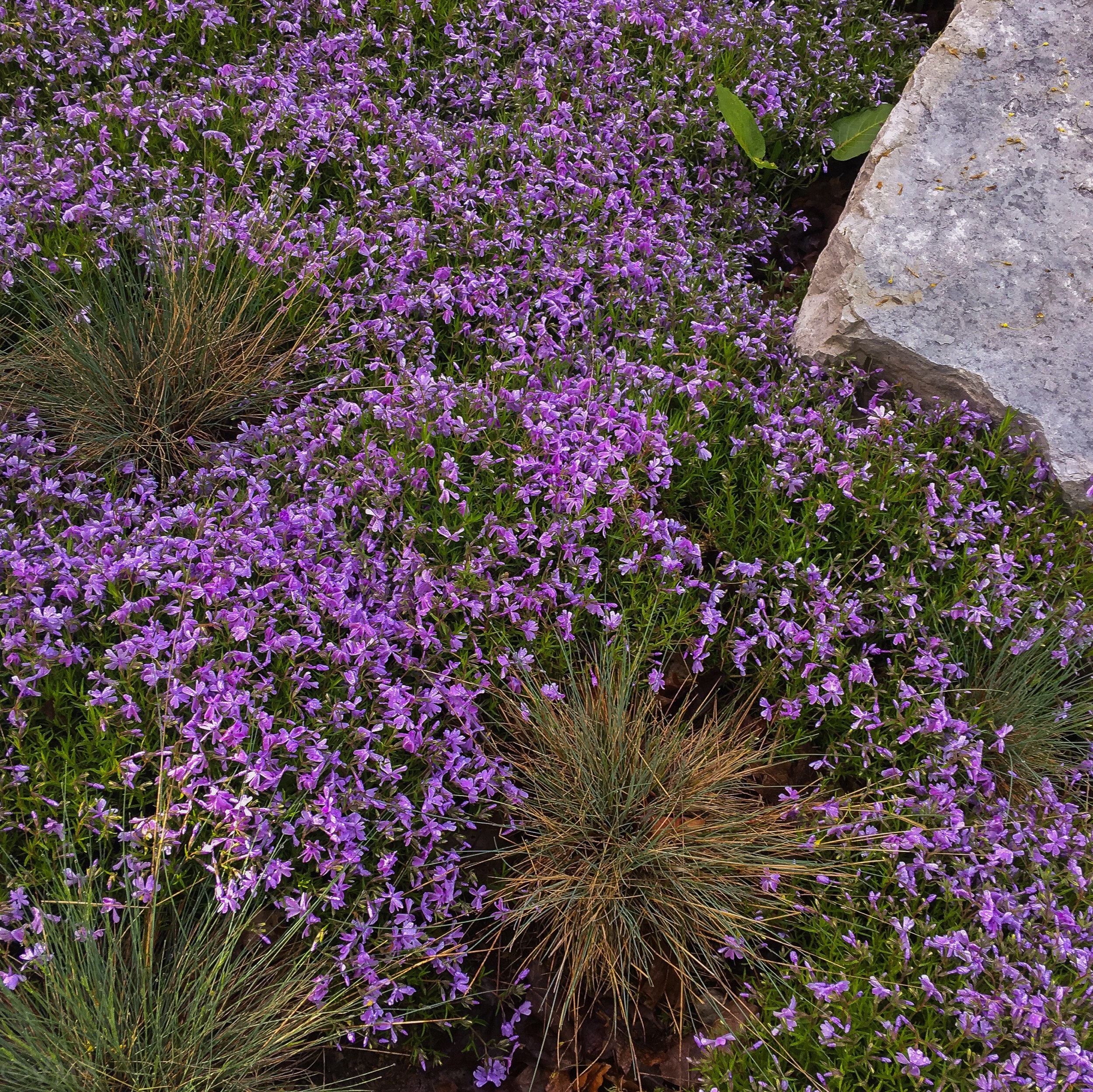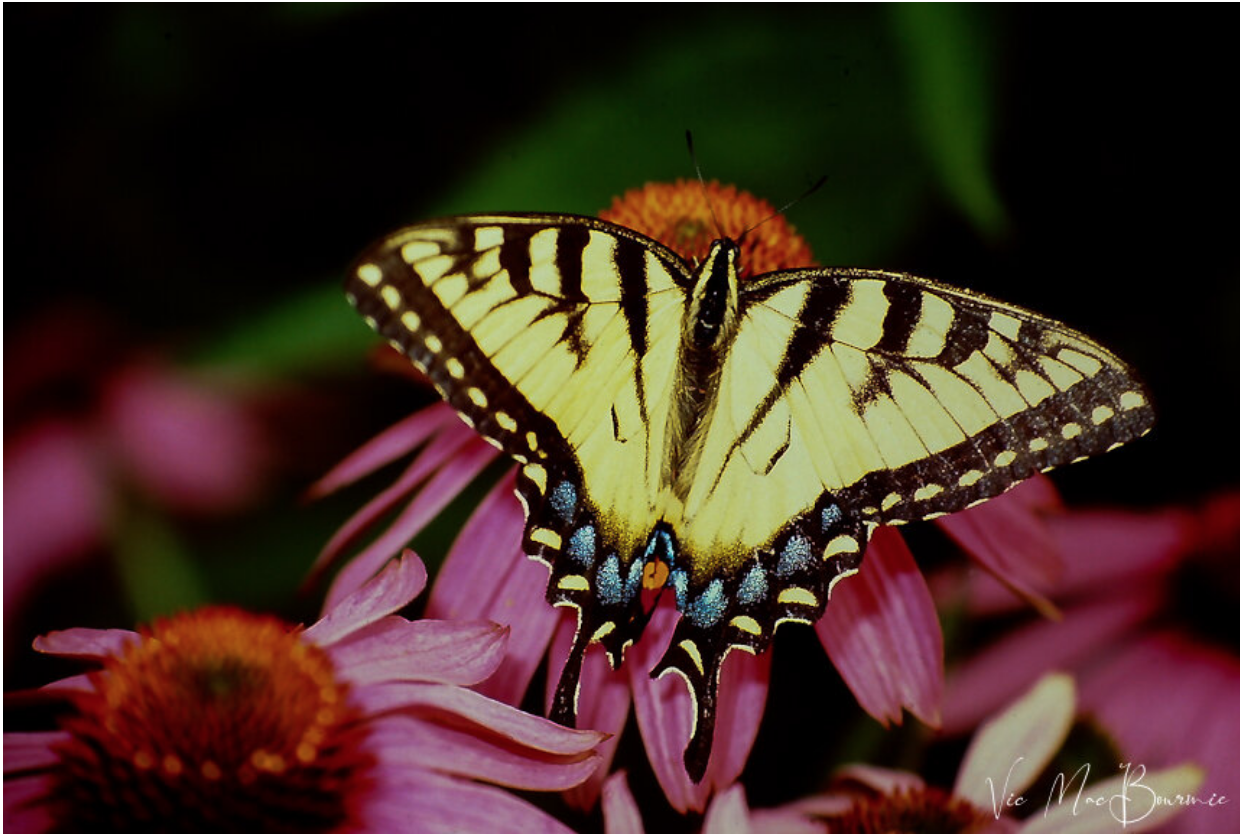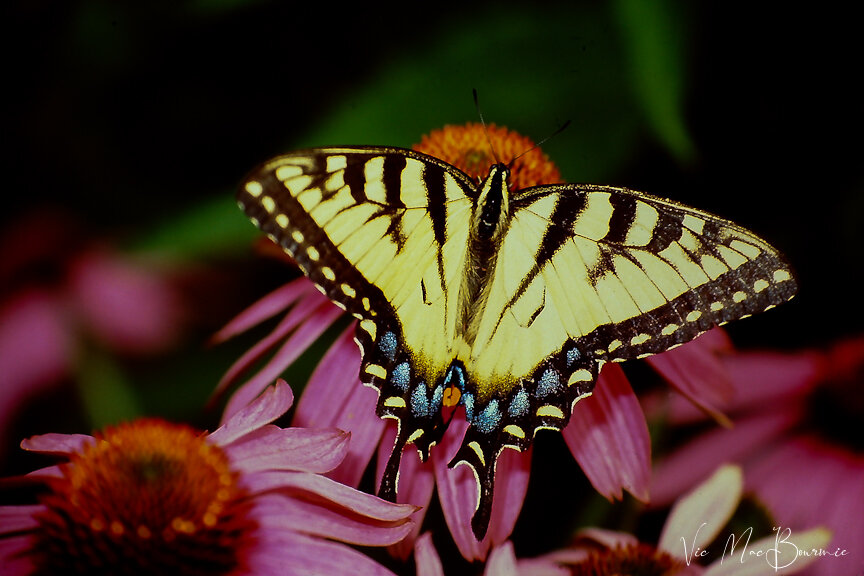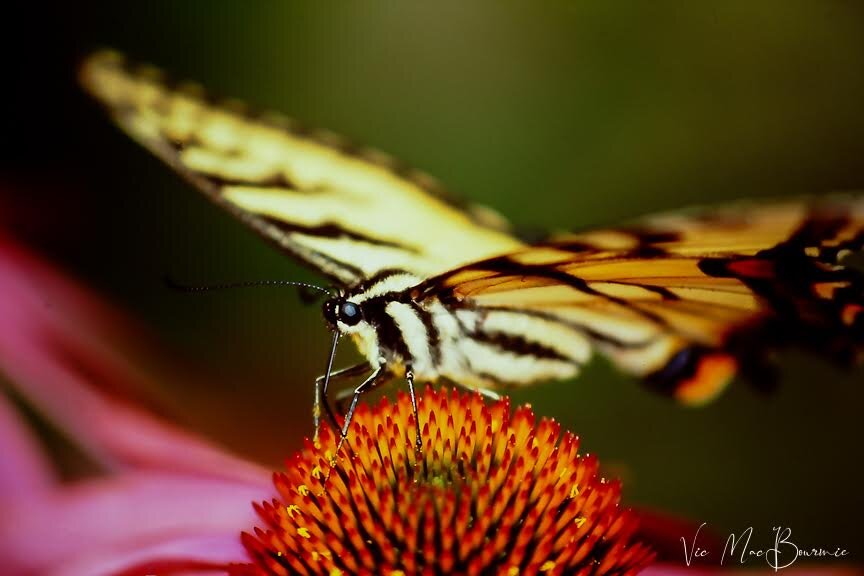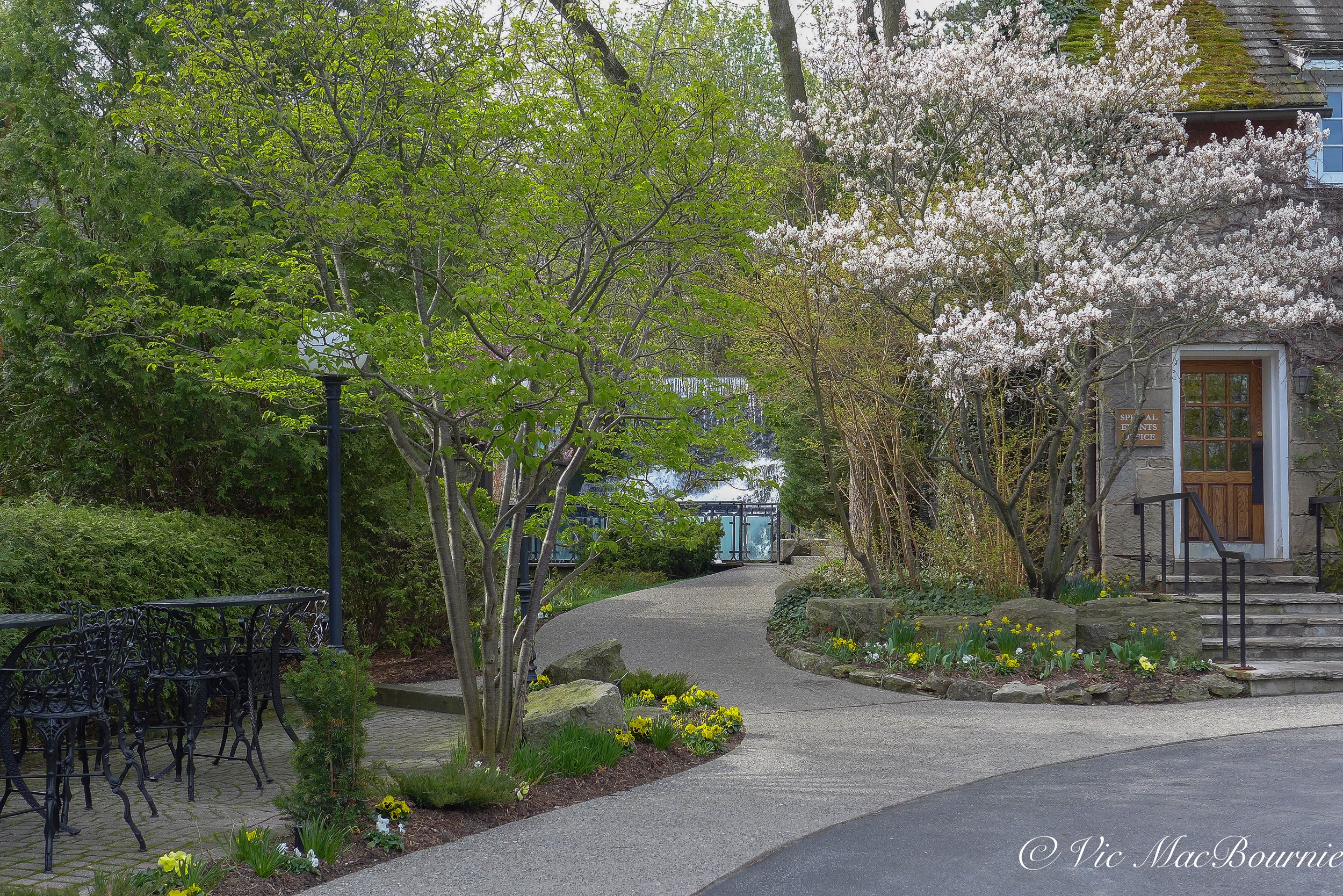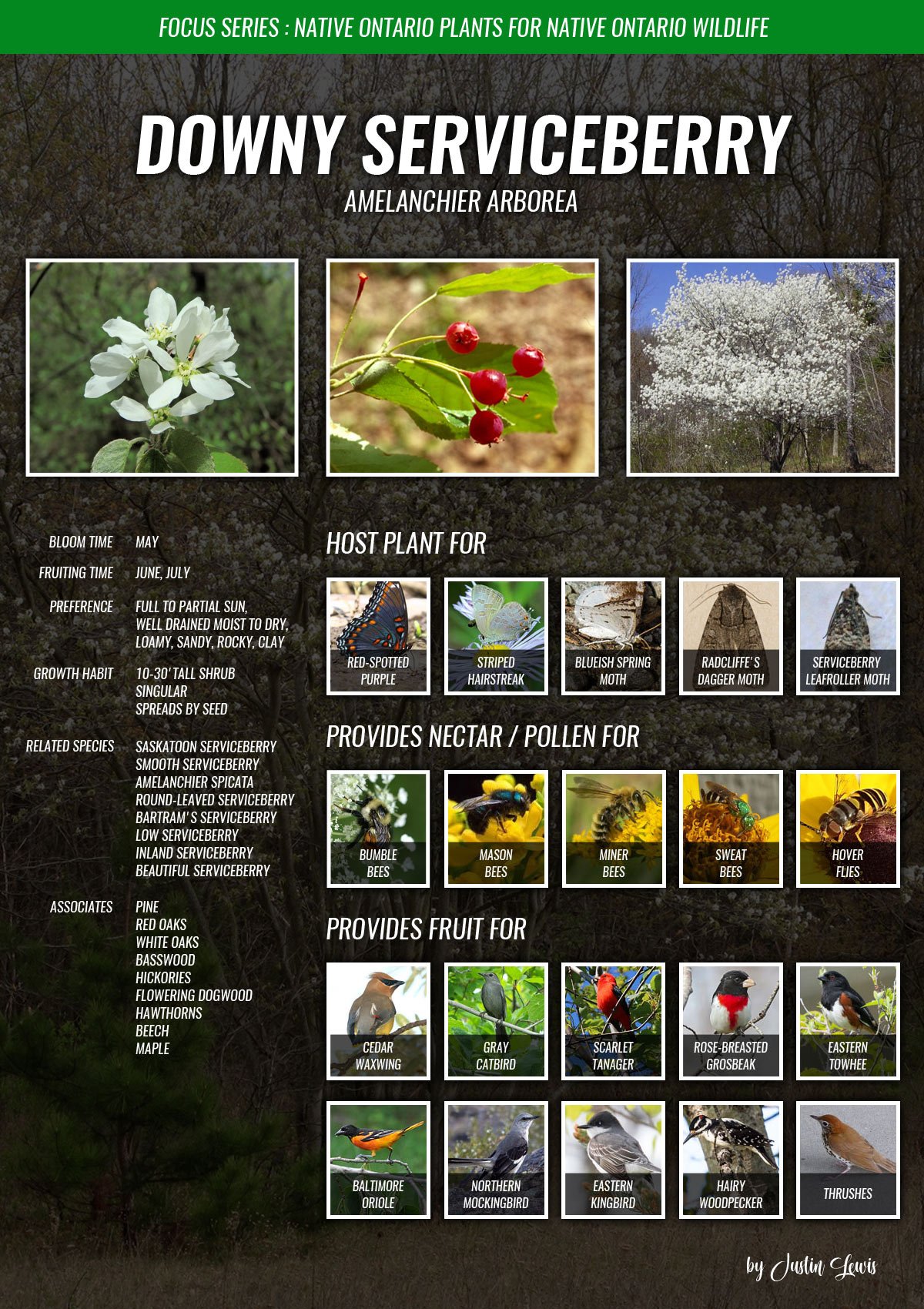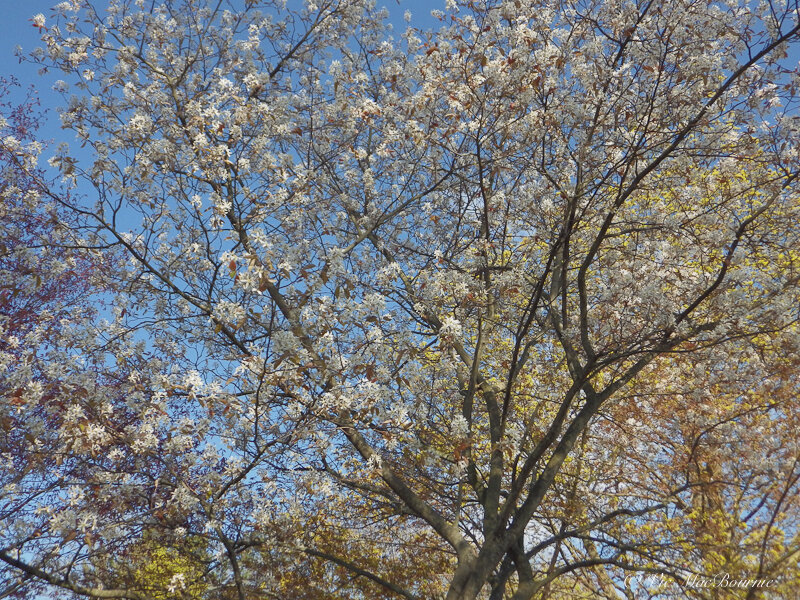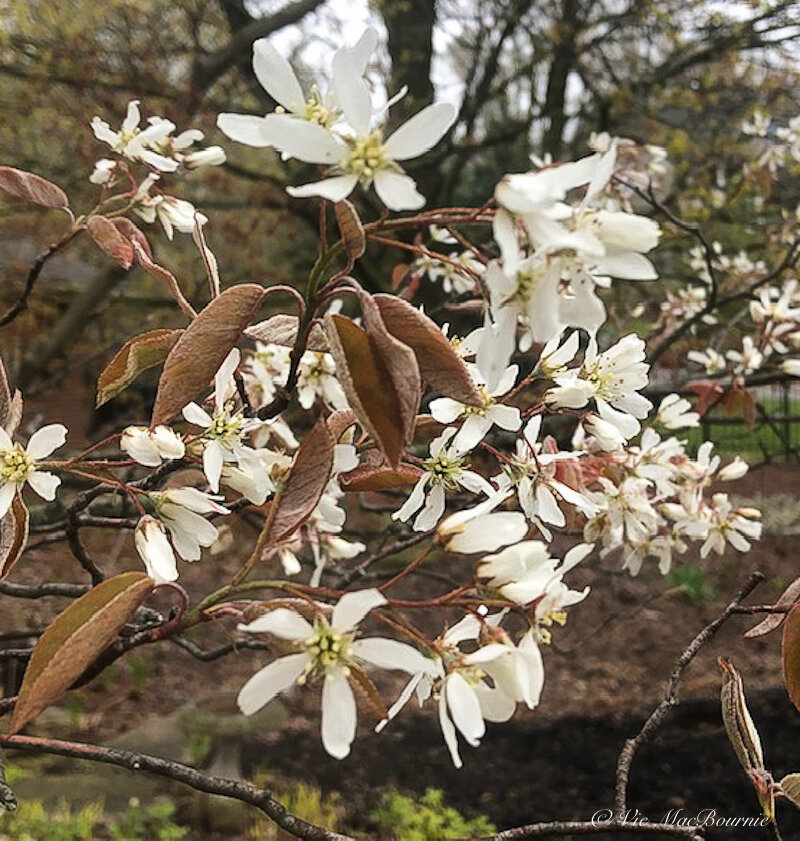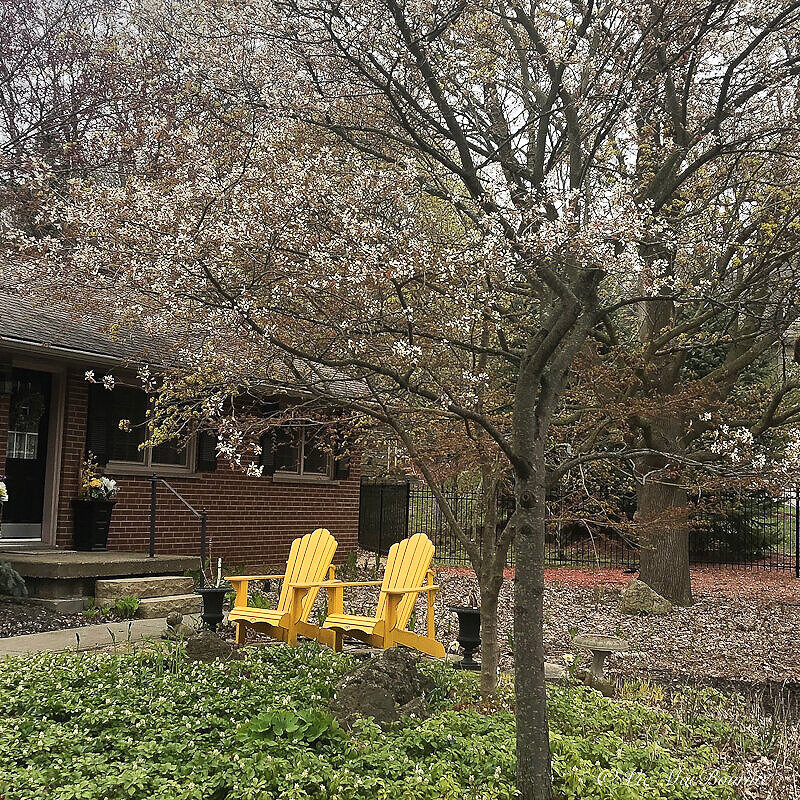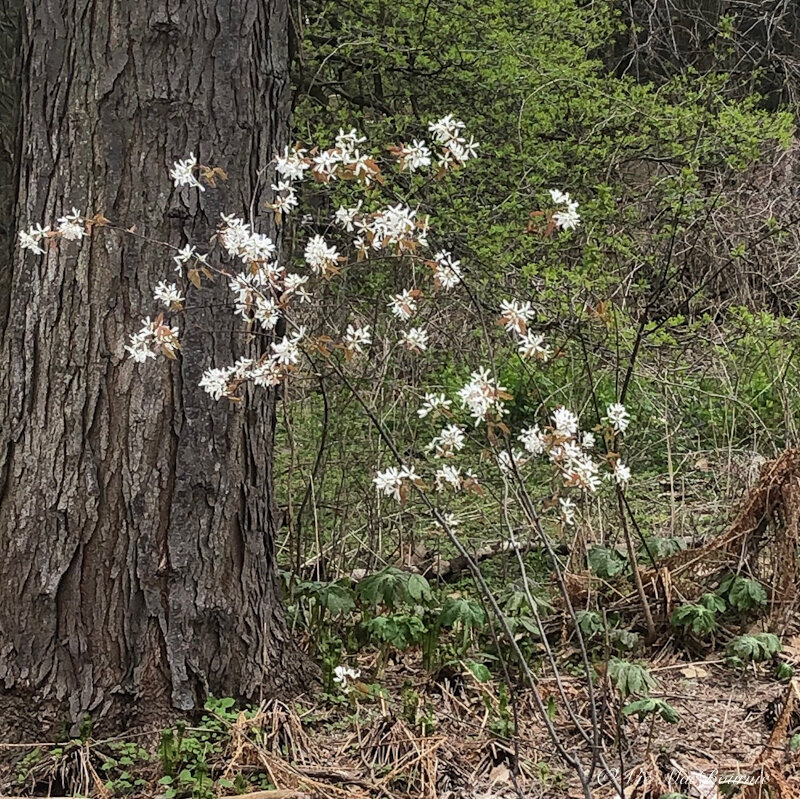Columnar Oak: Keystone plant perfect for today’s small yards
Columnar Oaks are the ideal compromise for today’s smaller front and backyards that might be overwhelmed by massive, native Red and White oaks.
Oak trees are critical to the survival of insects, birds and other fauna
It’s no secret how important Oak trees are for a healthy, natural environment, but not everyone has space in their yard to dedicate to such massive trees.
That’s where the columnar oaks (Quercus robur ‘Fastigiata’) come into their own. These trees are smaller, more narrow and able to fit into the smallest of yards, but still pack many of the benefits that our full-size, native oaks provide.
Columnar oaks or English Oak is an Asian and European native tree. It prefers average well-drained soils in full sun, but adapts to a wide range of soil types and conditions.
These oaks can take 20-30 years before they can bear acorns – an important food source for many mammals. In the wild, it is found in northern USA and Canada.
Five reasons to plant a columnar oak tree
They are a perfect tree for small, narrow spaces in both front and backyards.
They can be used to screen out views, even on second storeys, when ground space is limited. Their branches grow low to the ground providing screening from the ground up.
Oaks are attractive to wildlife and considered a vital food source for birds as well as insects and caterpillars.
Columnar oaks are low-maintenance, trees that can withstand drought, salt and other urban issues that can stress out other, less vigorous trees.
Columnar oaks actually boast four season interest from the dark green leaves of summer, to the rusty/brown leaves of fall and beige leaves that cling to the branches throughout winter.
‘Fastigiata’ or Upright English Oak is an upright, columnar, deciduous tree that matures into a dense elongated oval shape with a short trunk. They can work as a landscape specimen or in a group to form a very tall privacy hedge.
If you are trying to decide whether or not to plant an Oak tree in your yard, The Nature of Oaks will certainly help you make that decision. This valuable book highlights the incredible benefits of these important trees.
They do best planted in full sun in well-drained acidic or slightly alkaline soil. If you live near the ocean or plant it in an area that is heavily salted in winter, these trees can continue to perform well. As an added bonus, especially during these times of climate change, the columnar oaks are also drought tolerant and can survive in more severe urban conditions. (For more on problems faced by urban trees see my articles on The Internet of Nature or How Trees Communicate.)
For more on the importance of oak trees in our garden and natural landscapes take a few moments to check out my other posts on Oak trees:
Propagation for the Columnar Oak is from seed, but don’t be surprised if the seed doesn’t always grow true.
What are the benefits of oak trees?
Doug Tallamy, renowned entomologist, advocate for native gardening and author of the book Bringing Nature Home, and the Nature of Oaks as well as a number of other highly acclaimed books on the subject, calls oak trees a “keystone plant” in our environment. This rating goes only to a select few native plants that provide food and habitat for an enormous number of insects, caterpillars and fauna that, in turn, are critical as a food source for birds and other wildlife.
In fact, oaks top the list of Tallamy’s “keystone plants.”
Tallamy cites a 2003 study that found a “single white oak tree can provide food and shelter for as many as 22 species of tiny leaf-tying and leaf folding caterpillars.” And that is just a tiny fraction of the fauna that depend on a single oak tree. In fact, the mighty oak supports 534 species of fauna, more than any other tree we can plant in our gardens.
There are about 400 species of Oak worldwide. North America boasts 90 different species with 75-80 in the United States and 10 in Canada.
Unfortunately, the emergence of smaller and smaller lots in today’s subdivisions makes planting a full-size white or red oak tree difficult for most homeowners. Although the trees are relatively slow growers and beautiful specimens in the landscape, they eventually grow to become massive trees that, if not planted with plenty of room to grow around them, might have to be removed or, at the very least, severely pruned as they mature.
How to use Columnar oaks in the landscape
This is where the columnar oak comes into its own. These trees grow tall (up to about 60 feet (18 m), but the spread is only about 15 feet (4.5m) making them the perfect tree to tuck into a narrow space say along a driveway or in a corner of the yard to provide privacy.
Our neighbour actually uses a trio of columnar oaks grouped together anchoring two blue spruce trees to provide privacy. In this instance, these trees perform more like a dense, high hedge. The combination can be stunning at different times of the year, but especially in fall when the oak leaves begin to turn a rusty brownish/red while the remaining leaves hold on to their dark green leaves into the late fall and even into winter. In the dead of winter, many of the leaves remain on the plant, not falling off until the new spring growth pushes them to the ground.
In a perfect example of a shared landscape, we benefit from the trees’ architectural interest and, most importantly, their environmental benefits as a food source for so many woodland and backyard birds. The grouping of trees provide the perfect safe habitat for a variety of song birds looking for dense cover among the deciduous oaks and the evergreen branches of the blue spruce.
Can columnar oaks be used as a privacy hedge?
Another neighbour on the street has used three of the trees down the edge of their driveway to form a narrow, but very tall and effective screen. Again, the result is a dense, natural screen that is attractive to birds throughout the summer, including winter where the remaining leaves provide a safe escape out of the cold wind and an effective roosting spot.
These columnar trees may not provide all of the benefits of our native oaks, but they are far superior to many other non-native trees that offer little to no benefits to birds and other wildlife.
If you are interested in planting one of these trees, there are a number hybridized columnar oaks available for homeowners. A search on a high-end plant nursery near me shows a total of seven varieties available.
These hybridized columnar oaks include the following: Green Pillar Pin Oak (Quercus Palustris Pringreen), Crimson Spire English Oak (Quercus Robur Crimschmidt), Pyramidal English Oak (Quercus Robur Fastigiata), Skyrocket English Oak, Kindrid Spirit Oak, Chimney Rire Hybrid Oak, Regal Prince Pyramidal Oak.
You can check out these columnar oaks, including access to detailed information on growth habits, by going to Connon Nurseries’ informative website or a website of a nursery in your location.
Sumac: First signs of fall in the garden
Staghorn Sumac is an excellent addition to the garden both to add architectural interest and provide a food source for birds and animals.
Important food source for birds and other wildlife
It’s early October and the native Sumac is already lighting up the roadsides and welcoming the first signs of fall in the woodland garden.
Along roadsides and escarpments, where this fast-growing native shrub or small tree (grows to about 30-feet high) gets plenty of sun, Sumac lights up with brilliant oranges, yellows and reds.
It’s often the first plant nature photographers focus on when in search of early colour in the fall landscape, and it’s a perfect addition to the woodland garden. Sumac has compound, serrated leaves that are a bright green in summer before taking on its fall cloak.
How did Sumac get its name?
There is no missing the velvety bark on the branches that cover Staghorn Sumac. This velvet resembles the velvet that covers the antlers of male deer (stags) throughout the summer, earning Sumac the name “Staghorn”.
There are more than 30 varieties of Sumac in North America with more native varieties in Europe, Africa and Asia.
Is Sumac a food source for birds and other wildlife?
Not only is Staghorn Sumac (Rhus typhina) an incredibly colourful addition to the woodland, its fall berries, that grow in large clusters atop the shrub’s branches, are also a very important source of high-value food for birds especially migrating birds.
Staghorn Sumac puts out small greenish-yellow flowers that attract pollinators. They grow in the shape of a cone in spring and become the reddish-haired fruit clusters as summer turns to fall.
These hearty fruit clusters, that often remain on the plant well into winter, are vital resources for hundreds of bird species including our backyard favourites like Cardinals, Gray Catbird and a host of woodpeckers ranging from the impressive Pileated to the small Downy and larger Hairy woodpeckers. Add to that list the American Robin together with other thrush species. In a more wooded natural area, don’t be surprised if it attracts Ruffed Grouse and wild Turkeys.
As an added bonus these plants are deer resistant.
Staghorn sumac is dioecious, meaning that it has individually male and female plants.
These shrubs/small trees are extremely hardy, and are both drought and salt tolerant. They prefer a sunny location and dry to moist soil and will not tolerate shade or wet soil. Use these fast growers as an erosion control plant if you have problematic areas.
Where I live, The Niagara Escarpment is the dominant geological feature that cuts through the landscape. The Staghorn Sumac lights up the many cuts through the escarpment and turns the roadsides into sparkling jewels at certain times of day.
Staghorn Sumac is native to the more southern half of Ontario, and eastward to the Maritimes.
Sumac species include both evergreen and deciduous types. They generally spread by suckering, which allows them to quickly form small thickets, but can also make the plants overly aggressive in some circumstances.
There are usually several varieties available at nurseries, but this attractive native is probably all you will need.
Other forms of Sumac
At one of my local nurseries there are three Sumacs listed including the Staghorn Sumac. The others are Fragrant Sumac, and a dwarf variety of fragrant sumac called fragrant gro low Sumac as well as Cutleaf Smooth Sumac.
Cutleaf Smooth Sumac (Rhus glabra Laciniata) is a smaller hardy shrub (hardiness zone: 2B) with finely cut tropical-looking leaves that add texture to the garden. Grown primarily for its ornamental fruit, and its open multi-stemmed upright spreading habit. It lends an extremely fine and delicate texture to the landscape and can be used as a effective accent feature. Click on the link for more information on the Cutleaf Smooth Sumac.
Gro Low Sumac is described as low growing and compact shrub with interesting foliage turning brilliant colors in fall and bright yellow flowers in spring. Makes an excellent ground cover as it tends to sucker, filling in areas quickly. Does well in shade. Click on the link for images and more information on the Gro Low Sumac.
Fragrant Sumac is described as a rugged and durable medium-sized shrub with interesting foliage turning brilliant colors in fall and bright yellow flowers in spring. Tends to sucker, forming a dense spreading mass, attractive for a garden background or for naturalizing, good in shade.
How to grow and care for native Asters
Three native asters for the natural garden that provide late-season resources for pollinators and add a beautiful textural feel into the fall.
Three native asters: Ideal plants for our natural gardens
Our native asters are stealing the show in the meadows and open woodlands around our home reminding us that, if we are not already growing them in our gardens, its time to plant them for next fall.
In our garden the wood asters have made an appearance along with the Woodland Sunflowers, goldenrod and Black-eyed Susans across the back area of our garden.
Do Wood Asters attract pollinators?
The White Wood Asters (Eurybia divaricata), also known as Heart-Leaved Aster, are delicate whitish-blue flowers that add an airy feel to the garden and the perfect excuse for the small pollinators – native sweat bees and small butterflies as well as other insects – to stop by and enjoy a late summer harvest.
New England Asters growing in a naturalistic setting. What some people may think of as a weed, are actually beautiful native wildflowers that are vital to native bees and wildlife.
Embrace these plants and the somewhat messy look they sometimes bring to your garden and focus on the wildlife that find your garden aesthetics just perfect – because it is perfect – for them.
These perennial plants grow between 30 to 90 centimetres (12-35 inches) tall, with heart shaped leaves on the lower parts of the plant and changing to more elongated and deeply serrated on the upper reaches of the plant.
For more information on native plants, check out my earlier articles: 35 native wildflowers and Why we need to grow native plants.
If you are thinking about growing your own meadow garden, be sure to check out garden designer Angela den Hoed’s meadow garden and her five favourite plants for the meadow garden.
White wood asters, New England asters combine beautifully with goldenrod.
How to grow Wood Asters
These are a form of shade-loving asters that can be found growing naturally in dry, organic-rich woodlands and on the edges of forest areas in part shade.
Ours are growing happily on the edge of our ancient crabapple trees, where conditions seem almost ideal for them.
Although these asters will tolerate full shade or sun, they are happiest in part shade. Their beautiful, yet delicate branching clusters of pale blue flowers give a nice airy feel to the garden as well as providing a good source of nectar and pollination for both bees and butterflies.
Hardiness Zone: 3-7
Light: Part shade to full sun
Moisture: Tolerates dry soil, shade to part shade neutral to slightly acidic conditions.
Soil: clay loam to sandy loam, organic
Mature Height: 3-feet-high
Growth: Vigorous or aggressive, even in dry shade.
Propagation: Can be started from seed (seeds mature in late fall), by dividing clumps in early spring or allowed to spread entirely on its own.
This informative infographic designed by Justin Lewis shows the value of the New England Aster.
Are Wood Asters a threatened species?
The Wood Asters’ range is quite broad despite its extremely limited range in Canada where it is confined to a small number of sites in the Niagara region and in more southern areas as well as a few woodlots in southwestern Quebec.
In the United States the Wood Aster ranges from New England south into Georgia and Alabama.
In Ontario, according to the government’s website, the Wood Aster has been considered a threatened species since before 2008, meaning that the plants are not yet endangered but are on that path if action is not taken.
All the more reason to plant some of these delicate little flowers in your garden.
The government website adds these quick facts about the Wood Aster:
White wood aster seeds are dispersed by the wind but are generally not carried for long distances; this may account for its low colonization rate and restricted range
White wood aster is also known as the Heart-leaved aster because of the shape of its lower leaves
The flowers of White wood aster are attractive to butterflies and it is the host plant for Pearly crescents, a common North American butterfly
Right on cue our plants began to flower in mid September with their yellow and purple florets surrounded by the white petals.
The White Wood Aster likes to grow in colonies where it spreads via underground roots.
The plant’s decline in Ontario and Quebec is attributed to a number of factors, including habitat loss as well as competition from increased recreational activities ie: trampling by hikers, bikers and ATVs. Deer grazing and competition from invasive garlic mustard are also putting stresses on the plant in natural settings.
New England Asters in a naturalized setting growing among native grasses.
New England Aster: Dominant flower along roadsides and open fields
New England Asters are happy growing in part shade to full sun in our gardens and naturalized areas along our roadside and open meadows.
Plant them in sandy loam and these late summer/fall bloomers will reach heights of 5 feet with impressive, purple blooms sporting orange centres.
By cutting back the plant in mid-summer (Chelsea Chop: Link to Fine Gardening article), it’s possible to keep the plant a little more manageable throughout the fall.
New England Aster, like all late-blooming perennials, is a critical source of late-season nourishment for pollinators. If you have ever observed the plant in late summer, its attraction to native bees, butterflies and other insects is noteworthy.
New England Aster is distinguished from Smooth Blue Aster by its hairy stem.
Good companions plantings for New England Aster
If you have a meadow garden, consider pairing this aster with Goldenrod, Oxeye daisy, Woodland sunflower and late-season grasses.
Large Leaved Aster is another winner in the woodland
Large Leaved Aster (Eurybia macrophylla) grows in part shade to full sun in zones 3 to 9. It prefers a sandy loam with medium moisture and will grow to about 4 feet tall.
This is another shade-tolerant aster that can work in a woodland-style garden. Consider planting them on the edges or in small clearings where they can benefit from some sunny periods.
The plant’s pale blue blooms are secondary to the 4-8 inch heart-shaped basal leaves that form almost a ground-cover-like carpet.
In conclusion: Asters are important in our landscapes and natural areas
It’s easy to disregard the importance of Asters in our landscapes. Many gardeners focused on aesthetic, non-native gardens would consider the plants weeds and eliminate them as soon as they seem these perennials encroaching on their gardens.
This approach is one of the main reasons asters are disappearing in gardens and open meadows throughout North America and Europe.
In turn, our native bees, butterflies, caterpillars and other insect numbers are falling and threatening the health of our birds that depend on these insects to survive and feed their young.
As woodland or naturalistic gardeners, it is rewarding to know that we are doing our small part to restore the ecosystem and protect plants that are either threatened or spiralling downward.
Embrace these plants and the somewhat messy look they sometimes bring to your garden and focus on the wildlife that find your garden aesthetics just perfect – because they are perfect.
Plant Native Sunflowers for the bees, butterflies and the birds
Our native woodland sunflowers are not only beautiful but important plants for native bees, birds, butterflies and other insects.
A grouping of Woodland sunflowers in their prime light up the edge of a forested area. The sunflowers are a magnet for native bees and butterflies and their hollow stems provide winter nesting habitat for native bees.
Woodland sunflowers are native to Ontario and parts of the United States
It’s not just good looks that make our native sunflowers a must for the woodland garden. Their popularity among butterflies, native bees, birds and other insects makes these tall shrubby plants a popular choice for wildlife gardeners.
In our garden, the multi-flowering, bright yellow Woodland sunflowers (Helianthus divaricatus) grow at the back of the property alongside other meadow-style plants such as Black-eyed susans, New England and Wood Asters. They seem happy to grow beneath our crabapples where they receive mostly dappled afternoon and late afternoon sun.
If you are looking for more information on growing native flowers, you might be interested in reading my comprehensive article: Why we should use native plants in our gardens.
The Woodland sunflower is native to the eastern United States and Canada and can be found along roadsides and on the edge of woodlands and forested areas.
A large grouping of Woodland Sunflowers looking their best backlit against a dark background.
Hardy in zones 3 to 7, they work beautifully planted along woodland edges together with Black-Eyed Susan, Scarlett and Spotted Bee-Balms, and goldenrods. They will thrive and spread quickly in full sun but also do well in partial shade.
Generally these prolific bloomers, that can grow up to 6-feet tall, can be found growing naturally in dry, open woodlands, making them perfect for our woodland gardens.
The tall stems support the 2-inch (5cm) yellow flowers that sport 8-15 petals and a darker yellow centre disk. The flowers bloom from early summer to fall. The self-seeding sunflowers spread by rhizomes accounting for the large colonies often seen growing along forest edges and roadsides.
Besides dividing the clumps every 3-4 years to control spread and maintain the plants’ vigour, these Sunflowers are generally low-maintenance with no pest or disease issues.
A single woodland sunflower growing in our garden. You can see the buds of more sunflowers preparing to bloom.
Our deer have no interest in the woodland sunflowers probably because of the plant’s tough stems and rough leaves that make them less desirable.
Even Walnut trees are no match for the woodland sunflowers.
Without a doubt, they are a favourite of bees and butterflies where they act as a host plant for more than 73 varieties of butterflies and moths as well as a number of other insects that depend on the plant.
In turn, the caterpillars and insects that use the sunflowers as host plants, attract birds that depend on the insects as a source of food.
The Painted Lady, silvery Checkerspot and Gorgone Checkerspot are just three butterflies that use native sunflowers as a host plant for their larvae.
Birds and small mammals can often be seen eating the seeds right off the fading flowers.
Our native sunflowers are also an important plant for native bees that use the plants’ hollow stems for nesting. It’s important not to cut down the plants after flowering to give native cavity nesting bees a safe, warm place to overwinter their larvae. Leave the long stems in place at least until late into spring.
More native sunflowers
• Pale-leaved Sunflower (Helianthus Stromosus) grows to just 4 feet, in sun to part sun conditions in average to dry sandy loam.
• Other native sunflowers include Giant Sunflower (Helianthus giganteus) that grows up to 10 feet in sun to partioal shade in sandy loam.
If you are on the lookout for high quality, non-GMO seed for the Pacific North West consider West Coast Seeds. The company, based in Vancouver BC says that “part of our mission to help repair the world, we place a high priority on education and community outreach. Our intent is to encourage sustainable, organic growing practices through knowledge and support. We believe in the principles of eating locally produced food whenever possible, sharing gardening wisdom, and teaching people how to grow from seed.”
Native Goldenrod: Fall’s golden gift to wildlife gardeners and photographers
Goldenrod blooming in our gardens and along roadsides is a sure sign that fall is not far off. These are important native plants for a host of bees and butterflies that depend on the plants for late summer, early fall food sources.
Goldenrod might be the best addition to your fall garden
It might be common in your area along highways and open fields, but don’t underestimate the benefits of goldenrod in your garden.
This structural plant is not for the weak of heart. Mine stands more than six feet high, stretching up to the sky and, like a neon sign along a deserted highway, announces to every monarch, swallowtail, bee and butterfly in the area to come on over for some good eats. And they are happy to oblige.
In fact, the National Wildlife Federation, pointing to the work of author and biologist Doug Tallamy states: “Tallamy’s studies show that goldenrods provide food and shelter for 115 butterfly and moth species in the U.S. Mid-Atlantic alone. More than 11 native bee species feed specifically on the plants, and in fall, monarch butterflies depend on them for nectar to fuel their long migrations. Even in winter, songbirds find nourishment from goldenrod seed heads long after the blossoms have faded.”
If you are looking for more information on growing native flowers, you might be interested in going to my comprehensive article: Why we should use native plants in our gardens.
Goldenrod growing along the edge of a field bringing its fall early fall colour to the landscape and garden.
Does Goldenrod cause hay fever?
Let’s get this straight right off the bat – goldenrod does not cause hay fever – that would be ragweed. Goldenrod’s pollen is too heavy to be blown in the wind, while ragweed pollen takes to the air at the mere hint of a slight breeze.
It’s also important to note that not all Goldenrod is aggressive in the garden. It’s also probably a good time to note that Goldenrod is available in many forms – all beneficial to local pollinators.
We’ll get into all the different types and which ones might be good for your garden later, for now let’s just admire this native plant for what it is – a pretty, yellow magnet for bees, butterflies and other insects.
I just let it grow in my front and back gardens, not really worrying too much about its aggressive tendencies. But that’s just me.
Flower photographers love Goldenrod in the garden
I find it perfect for photography because, not only do the yellow masses of flowers form a great backdrop for the butterflies, the plants are so tall that I really don’t even have to bend over to get shots of the butterflies, insects and birds. Now, that’s a real bonus.
For more on photographing flowers in your garden, please check out my comprehensive post on Photographing flowers in your garden.
A native bumblebee works the goldenrod in our backyard as it comes into bloom.
Let’s take a closer look at this fall performer.
Goldenrod is actually a common name for a number of plants in the sunflower family within the genus Solidago. In fact, there are around 120 species of goldenrods native to the Americas, northern Africa, Europe and Asia.
In North America, about eight of these species are used as garden plants where they happily set roots in full sun to partial sunny areas in almost any average to below-average, well-drained soil. These herbaceous perennials, that are pretty much pest free, can grow from about 1.5-6 feet tall with a spread of 1-3 feet.
In very fertile soil, you may have to stake them to stop them from falling over when their heavily flowering tops get too heavy to stand on their own.
Although there are a number of hybrids that have a more compact size or flower more heavily, don’t bother with them. Stick to the native varieties and you will likely have fewer problems, help native wildlife more and sleep easier at night knowing you’re not introducing some weird, aggressive new plant to our already compromised natural environment struggling to fend off all the cultivars we have introduced over the years.
Goldenrod fills many roadsides in late summer and fall creating a tapestry of subtle fall colours.
Some native varieties to consider include:
Blue-stemmed goldenrod (Solidago caesia) is one of the more rare Goldenrod species and sports the common latesummer and fall bright yellow flowers. The plant gets its name from its arching purplish stems. This particular Goldenrod is noted because it not an aggressive spreader and produces good cut flowers. Plant it along with Smooth Blue Aster and New England Aster for some spectacular fall colour and pollinator action. Blue Stemmed Goldenrod is hardy from zone 4 through 7.
Autumn Goldenrod (Solidago sphecelata), is the native plant that horticulturalists like to use to make various cultivars from primarily because of its compact size. Autumn Goldenrod tends to stay to within a foot or two with its arching stems and plumes of yellow flowers.
Showy Goldenrod (Solidago speciosa) lives up to its name with its dense clusters of small yellow flowers that grow in a pyramidal- or club-shaped column, sitting atop the 1-5-foot tall reddish stems. It is considered one of the showiest of Goldenrods.
Sweet Goldenrod (Solidago odora) This is a more compact native variety that reaches two- to four-feet. You’ll find it growing naturally in dry, sandy, open wooded areas thickets and ravines. It’s distinguishing feature is its anise-scented leaves and the fact that it is another goldenrod that is considered less aggressive in a garden environment. It is a clump-forming, easy to grow, low maintenance plant that reaches up to 4-feet high and attracts birds, bees butterflies and hummingbirds. It’s found growing naturally in meadows or open woodlands.
White Goldenrod (Solidago bicolor) you guessed it, rather than sporting the typical yellow flowers, this goldenrod likes to show off white blooms.
Wrinklelfeaf or Rough Goldenrod (Solidago rugosa) if you have a moist area in the garden, this three- to five-foot goldenrod is the one to use. It’s distinctive narrow, toothed, rough-surfaced leaves and rough, hairy stems earned the plant its name.
Even as cut flowers the Goldenrod looks great in the garden but be careful, they’ll still be attracting the bees.
It’s time for a little gold in the garden
Just about the time the Black-eyed Susans get into full swing, the Goldenrods come along and add even more gold to our landscapes. They ride that gold right into late fall and are still adding to the beauty of the garden when the snow falls and forms a little blanket atop the browning flower clusters.
Throughout fall, the goldenrod and asters form a perfect combination of warm golds and cool blues along our roads and in meadows creating incredibly textured landscapes throughout Ontario and into the north-eastern parts of the United States.
The activity these plants create among the remaining bees, butterflies, hummingbirds and other backyard wildlife is reason enough to grow our own patches of these lovely native plants. We let ours grow wild where the seeds land, but these plants can be tamed and grown in the back of gardens with great success.
If you don’t already have them in your woodland/meadow garden, put them on your list for next year.
You won’t be disappointed.
Our native Obedient plant (False Dragonhead) is important late-summer bloomer
Obedient plant is quick to find a home in the sandy soil in our garden. This native plant is a favourite for bees, butterflies and hummingbirds in the late summer when it begins to bloom.
Late summer is the time for our Obedient plant to go into full gear in the garden bringing in the bees, butterflies and hummingbirds with its soft lavender spikes of flowers on three-four-foot stalks.
Some people are quick to call these fall performers aggressive and invasive, I prefer to call them what they are – great plants that are happy to fill in any open spaces in the garden but are super easy to remove if they get into areas where you really don’t want them. They can be important late-summer bloomers for bees, butterflies and hummingbirds looking for the last sources of nectar before the cold weather hits.
If you are looking for more information on growing native flowers, you might be interested in going to my comprehensive article: Why we should use native plants in our gardens.
For more on photographing flowers in your garden, check out my comprehensive post on Flower Photography in Your Garden.
A bumble bee works the Obedient plant in late summer.
Why are they called Obedient Plant?
With what we already know about this plant’s behaviours, “obedient” seems the perfect description of this native plant.
However, the plants earned that name, not for any of the reasons described above, but for the uncanny ability the blossoms have of remaining in place after being turned in any direction. Great fun for kids but of little value in the garden accept maybe to turn them in the direction of the light to photograph them.
The plant (Physostegia virginiana), is actually a member of the Lamiaceae (Mint Family) and goes by a number of given names including: False Dragonhead and Virginia Lions-heart. Obedient plant, being a member of the mint family, sports the square stems common to the plant family.
Is Obedient plant easy to get established?
Like many native plants, this perennial is easy to establish and maintain.
In our garden, Obedient plant grows with abandon in a sunny area beside our patio. Although it spreads aggressively by stolons, it’s important to remember that it is also easy to keep in check. Its shallow roots are especially easy to pull out by hand in our sandy soil.
I tend to let plants find their own way and compete for their own space, not unlike the ground covers in our garden. Needless to say, Obedient plant often wins out, growing right up through the ground covers.
For most of the summer they go unnoticed, but by mid-August the 4-6 in. terminal spikes of lavender, tubular flowers – similar to snap dragons – begin showing the first signs of flowers. By the end of August they are in bloom and being visited by a host of native bees, butterflies and hummingbirds.
Light Requirement: Sun, Part Shade, Shade
Soil Moisture: Moist
Soil Description: Moist, humus-rich soils.
When does Obedient plant bloom?
Depending on where they are growing, they bloom in August, September, October and, in warmer climates, through to November.
Our flowers are lavender, but white and pink varieties are also available.
Where does Obedient plant grow?
These plants are found throughout the United States and parts of Canada growing naturally from Quebec to Minnesota and south to Florida and Texas into northern Mexico.
In the wild, they can be found growing along river banks, in lowland wet thickets and swamps. These tough perennials will grow in sand, clay and limestone and are at home in areas of poor drainage.
Are Obedient plants easy to propogate?
These plants are easy to propopagate by division of roots or by seed. If you already have plants growing, I would definitely use the division method to increase your numbers and spread the clump forming plants around the sunny areas or your garden.
If you choose to plant seeds, you can sow them in fall or spring after a period of damp stratification (3 months at 40 degrees).
Blue Lobelia: A native plant perfect for late summer colour
Great Blue Lobelia is a native plant that is at home in both full sun or part shade in the woodland garden. Grow them with Black-Eyed-Susan and Bee Balm for a terrific tapestry in the garden.
What plant combinations work well with Blue Lobelia?
The tapestry created by Black-Eyed-Susans, Blue Lobelia and Bee Balm is beautiful to look at but even better for the bees, butterflies and hummingbirds.
The combination of our native Great Blue Lobelia (Lobelia siphilitica L.), Black-Eyed-Susans and Monarda is a match made in heaven in my garden.
I love the natural look the plant combination creates, but no matter how much I enjoy looking at this combination, it’s the native bees (especially bumblebees), butterflies and hummingbirds that really reap the rewards of this trio of native wildflowers growing together and creating the most lovely tapestry.
Create a pollinator paradise with Blue Lobelia
Add to this trio, four or five Cardinal flower stems shooting up just a foot or two away and you have a perfect pollinator paradise.
And, keeping the entire group happy and thriving is not too difficult.
Our native Blue Lobelia is a low maintenance, moisture-loving plant that does well in shade or full sun. It flowers late in summer into the early fall along with the tough, hard-working Black-Eyed-Susans that are happy in most situations including part-sun to full sun.
It’s not hard to fall in love with the Blue Lobelia. I planted it for the first time in our woodland this year and without a doubt, it has become one of the stalwarts of our garden in just its first year.
This bumble bee was caught climbing into the lobelia to feed.
The Blue Lobelia’s stems produce lavender-blue, tubular flowers that grow close together on the upper parts of the stems. The showy, bright blue flowers grow in the axils of the plant’s leafy bracts forming an elongated cluster on each stem. The flowers have two lips – an upper lip sporting two segments and the lower lip, three.
If you are looking for more information on growing native flowers, you might be interested in going to my comprehensive article: Why we should use native plants in our gardens.
Blue Lobelia’s love of moisture also makes them a nice companion with the Cardinal flower. I have them growing in a part-sun, part-shade area beside our patio where I can keep them well watered along with Cardinal flower and native Bee Balm.
For more on photographing flowers in your garden, check out my comprehensive post on Flower Photography.
Great Blue Lobelia is a tough perennial for the woodland
Let’s take a closer look at this often-overlooked native perennial wildflower that’s at home in hardiness zones 3-7.
The Blue Lobelia is part of the Campanulaceae (Bellflower Family), and is a highly desirable plant for woodland gardens.
It grows from 1-3 feet tall and blooms from July through to October depending on where it is planted. In nature, you are likely to find it growing wild in open, wet woods where sun is able to penetrate to the forest floor. It also grows along stream banks, marshes and open meadows.
Lobelia growing conditions
Light Requirement: Sun , Part Shade , Shade
Soil Moisture: Moist , Wet
Drought Tolerance: Low
Soil Description: Clay, Loam, Sand
Conditions Comments: Keep the soil moist around it by watering it regularly if necessary.
How to propagate Blue Lobelia
The best way to propagate this attractive plant is to divide the clumps in the spring. It’s also possible to plant the stratified seed lightly on the soil surface. Seeds need to be cold stratified (less than 40 degrees) in a moist environment for about two months. A cold winter in Ontario or north-eastern U.S. would get the job done.
Great blue plants for your garden
Blue plants are not easy to find. In fact, only about 10 per cent of the flowering plants worldwide are blue. So finding one that is native to our area and brings with it so much value to native wildlife makes this plant a real bonus and one that needs to find a place in all our gardens.
Five blue flowers to add to your garden
If you are looking for a few more blue flowers to add to your landscape, consider the following:
Delphiniums: a popular wildflower that grow tall on hardy spikes and add a lovely soft blue to the landscape.
Love-in-a-Mist: A spring bloomer that will be at home in a variety of soil types is a generally sunny location.
New England Aster: Another native plant that is a favourite for butterflies, native bees and birds.
Forget Me Not: These charming, little early spring wildflowers are at home in damp, shady areas of your woodland garden. Easy to grow and quick to spread when they are happy.
Blue Columbine: Native columbine tend to be red-yellow combination but the blue columbines are exquisite and still a favourite of hummingbirds.
Something old, something new, something borrowed, something Blue
It’s not hard to fall in love with the Blue Lobelia. I planted it for the first time in our woodland this year and without a doubt, it has become one of the stalwarts of our garden in just its first year.
The tall spikes of blue flowers are not only a beautiful addition to the garden, they are also a favourite plant of our native bumble bees.
Teamed up with an older drift of Black-Eyed-Susans, these new blue flowers cool down the colours and create a lovely tapestry along with the reds of the bee balm.
If you know someone with a clump of these native flowers, be sure to borrow some either by asking for a clump via division or getting some seed.
You too will soon be wedded to these native blues.
Purple pearl-like berries make Beautyberry a showstopper in native gardens
The American Beautyberry is a fall standout in the woodland garden with it pearl-like magenta berries. The native plant attracts bees and butterflies with its late summer bloom of delicate pink and white flowers, followed by spectacular late summer fruit that persists through winter.
The bright berries that look more like clusters of elegant purple pearls are the prize at the end of summer that makes the American beautyberry bush a must for native gardeners.
The fact that these stunning, glossy, iridescent-magenta fruit, which hug the branches at leaf axils throughout fall and winter, are favourite food sources for migrating birds makes these shrubs among the most prized of plants for gardeners looking for a native plant that turns the sad end of summer into a celebration.
This bumblebee became covered in pollen after working the beautyberry flowers. The flowers will eventually turn into the beautful pearl-like purple berries.
Beautyberries attract bees and butterflies
In mid summer, when the flowers are in bloom, the shrubs also attract native bees and butterflies.
What more can a native gardener ask for?
How about an attractive, arching shrub at home in a woodland understory or at the edge of a forest where it gets full sun to part sun,
Where can you grow Beautyberries?
American beautyberries (Callicarpa americana) are found in warmer parts of Canada and throughout the United States from Virginia to Arkansas and south to Florida and into Texas. They are generally hardy from Zones 6-1.
If you are looking for it growing naturally, look in woodlands, moist thickets and other wet areas including low rich bottomlands, swamp edges and pine woods.
If you are looking for more information on growing native flowers, you might be interested in going to my comprehensive article: Why we should use native plants in our gardens.
Other shrubs known for their berry production include a long list of viburnums. If you are looking to add more berry producers to your garden, check out my comprehensive post on Seven Viburnums that attract birds to your garden. In addition to Viburnums there are many plants, shrubs and small trees to consider. My post Best plants and shrubs to feed birds naturally and save money will help get you thinking about using plants and shrubs as natural bird feeders.
Are Beautyberries low maintenance?
If you are growing Beautyberry in your garden, you’ll be happy to know it is a low-maintenance shrub that is happy enough in moderately moist soil in part shade. Beautyberries grow in moist, rich soils as well as sandy soils, sandy loam and even clay-based soil.
Beautyberries boast spectacular, magenta fruit born in clusters on arching branches that can remain on the shrub into winter.
Is my Beautyberry dead?
Don’t be surprised in late spring if there is no sign of life in your Beautyberry. These shrubs are slow to bud out in the spring, but the American beautyberry can reach an average of 3-5 feet tall and often about the same width. In good soil, don’t be surprised if it reaches up to 9 feet high with a similar width. it can be cut down regularly to keep it in check if necessary.
During the summer, the shrub with its arching branches and ovate to elliptic, leaves. that grow in pairs or in threes up to nine inches long, are fairly inconspicuous blending in with other shrubs in the garden border or filling in under larger mid-canopy trees.
If used as a specimen, it can be an elegant understory shrub with a naturally loose and graceful arching form.
Plant it as a mid-size understory shrub at the edge of the landscape where it can get partial sunlight during the day, preferably in morning or late afternoon.
In late summer – mid august in our area – small, pink flowers appear in dense clusters at the base of the leaves. These delicate clusters of flowers are easily overlooked.
Gardeners familiar with the shrub know however, that the more flowers they have on their beautyberries the more berries they can look forward to in late summer into fall.
Flower buds on a Beautyberry bush getting set to emerge and eventually turn into the purple pearl-like fruit that is attractive to a variety of birds including robins, cardinals and mockingbirds.
The fruit or berries can be rose pink or lavender pink and about 1/4 inch long. The extremely showy clusters cling to the branches through the fall and into winter if the birds and garden mammals don’t get to them first.
Do Beautyberries have good fall colour?
Fall is really the time the shrub comes into its own as the leaves slowly turn yellow revealing the incredibly showy clusters of glossy fruit. The combination of the yellow leaves and magenta fruit is a combination that you will want to ensure is front and centre in the garden.
What birds eat the fruit of Beautyberry?
You can count on American robins, cardinals, finches, towhees and even mockingbirds visiting your shrub in search of the pearlescent, purple fruit. Foxes, raccoons, chipmunks and squirrels will also be lining up for the fruit.
Unfortunately, if you live in deer country, don’t be surprised if deer have a little nibble on the shrubs. Our deer have more or less left the plants alone, although there is so much more in the garden they obviously seem to prefer.
Although American Beautyberry shrubs are commercially available, (you may have to look for Callicarpa americana on the tag ) they are relatively easy to propagate from seeds, root cuttings and softwood tip cuttings. If you have a friend with one, take a cutting and get a couple for your garden.
Sophisticated elegance makes Beautyberry a late summer standout
The American Beautyberry shrub is another example of a native plant that is often overlooked by gardeners focusing on massive, showy blooms that dominate the landscape but often fall short once the blooms are spent.
This is not what the Beautyberry is all about. Although these understory shrubs have a certain elegance in the woodland garden with their arching stems, don’t expect them to steal the show during the spring and summer months.
But that’s okay.
There are plenty of flowers, shrubs and flowering trees that can do the heavy lifting in May and June. Gardens need colour and interest in late summer into fall and that’s when the American Beautyberry really delivers. As already discussed, the berries/fruit are the showstoppers, but don’t underestimate the fall foliage. The green and almost lemon-yellow foliage of the Beauty-berry is the perfect contrast to all the reds and burnt orange that tends to dominate the landscape at this time of year.
Not only do Beautyberry carry their weight in fall, but they add much needed winter interest to the landscape with their purple berries popping out of the drab landscape. Imagine watching a cardinal feeding on the colourful fruit and you will know why native woodland gardeners have a special place in their hearts for Callicarpa americana.
Monarda and Cardinal flowers: Native reds Hummingbirds can’t resist
Monarda and Cardinal flower are two native reds Hummingbirds can’t resist. Both have similar tube-like flowers that are perfect for hummingbirds and other pollinators.
A female Ruby-throated Hummingbird works the bright red Bee Balm.
Add these two fine reds to your garden and enjoy the pollinator party
Hummingbirds love reds and the combination of Monarda and Cardinal flowers prove just too irrisistable for them.
You could almost say these native red flowers combine the natural sweet flavours that keep our hummingbirds, bees and butterflies drunk with excitement over the natural abundance of their favourite food. But, that might be pushing the whole red wine thing a little too far.
In our garden, the Monarda begins to bloom in early July and the hummingbirds quickly add them to their daily feeding rounds. I notice, however, that the Cardinal flowers – growing just a few feet away – are not far behind the Monarda. Within weeks the area beside our patio will be a haven for hummingbirds looking to fill up on the sweet natural nectar that these two native reds provide.
If you are looking for more information on growing native flowers, you might be interested in going to my comprehensive article: Why we should use native plants in our gardens.
Our feeders, too, are nearby but given the choice, Hummers will prefer to visit the more natural nectar sources. It’s a good idea to keep this in mind when you are trying to attract hummingbirds and other garden pollinators. Provide their natural food and chances are they’ll visit more often and stay longer.
If using native plants to feed birds and pollinators in your garden interests you, you might want to check out this post on feeding birds on a budget.
Create a natural stage for Garden photography
In addition, the more natural stage for the hummingbirds and butterflies will turn you into a master when in comes to garden photography. There’s nothing like the male Ruby-throated Hummingbird, with its red throat, working the bright red Monarda and scarlet Cardinal flowers. Set up your camera and telephoto lens nearby, grab a glass of your own favourite “red” and just wait for the hummingbirds to arrive. It shouldn’t take long before you are rewarded with some great photographs.
How to grow Bee Balm (Monarda)
Monarda (Monarda didyma) often referred to as Bee Balm is a member of the mint family (Lamiaceae). It joins Wild Bergamot (Monarda fistulosa), that features light lavender to pinkish-white flowers, in the Lamiaceae family that counts 16 species native to North America.
(Go here for my full story on Wild Bergamot )
Monarda can really put on a show. Blooming for up to 6 weeks through mid summer to early fall on tall (up to 4 feet), sturdy square and hollow stems, these attractive perennials have deep roots with shallow rhizomes that account for its spreading habit. It can form large drifts in your garden creating a magnet for hummingbirds and other pollinators including those cool Clearwing hummingbird moths, native bees including bumblebees and, of course, Ruby-throated Hummingbirds.
Like it’s sister, Wild Bergamot, the Monarda flower is actually a cluster of 20 or more flowers (fistulosa) arranged in a round head. The fistulosa (tubular or pipe shapes) make them ideal for long-tongued insects, bees, moths and butterflies to feed on. The plants’ nectar is so sought after by insects that you may notice holes carved out of the flower stems where “tongue-challenged” insects have bore through to get at the nectar.
The plants easily take to a garden and are at home growing along other garden plants, in a sunny meadow-style planting or as specimens in sun, part-shade. Bee balm actually prefers average soil (too rich and you are liable to have tall, lanky plants that don’t hold up well on their own.) Powdery mildew can be a problem if the plants are grown in a wet, humid area without good airflow.
Keep the plants watered but not wet and you’ll be blessed with a great show all summer.
• If you are considering creating a meadow in your front or backyard, be sure to check out The Making of a Meadow post for a landscape designer’s take on making a meadow in her own front yard.
How to grow Cardinal flowers
Cardinal flowers prefer a more wet environment than Monarda so growing them side-by-side will be difficult. Ours grow several feet apart and through hand watering I am able to keep the Cardinal flowers’ feet in more moist soil. Our Cardinal flowers have found a home on the outside edge of a yellow magnolia so also get get less sun than the Monarda plants.
Take a moment to check out my full feature on growing the native Cardinal flower.
Cardinal flowers are considered short-lived perennial but by spreading the seed in your garden, you can enjoy the flowers for years to come. Try placing the spent flower heads atop the soil in a moist part of the garden and you should be blessed with more and more flowers each year. They grow on long spires that can reach up to 4 feet. The flowers bloom as they make their way up the stalk.
In conclusion: Two reds can make a right
Planning your patio should involve more than where the best seating options are, unless, of course, you’re planning the seating options around the best wildlife viewing spots. By making an effort to plant attractive native plants such as Cardinal flower and Bee balm that attract hummingbirds, butterflies and birds, your patio or deck transforms from just a place to sit and entertain, into a place to be entertained.
As summer heats up, I can’t imagine a better time than being outdoors on the patio or deck with my favourite red and a couple of feathered friends dropping by on regular visits.
Solomon’s seal is solid choice for the woodland or shade garden
Solomon’s seal’s arching branches reveal the dangling cream flowers that highlight the spring woodland garden.
Is Solomon’s seal a native North American wildflower?
Solomon’s Seal (Polygonatum), with its elegant arching stems that rise up in clumps through the forest floor, deserves a prominent place in any woodland garden.
This unassuming, eastern North American native plant is completely at home in the woodland or shade/semi-shade garden where it forms patches of attractive plants that spread – always under control – through underground rhizones.
The Graceful arches of the Solomon’s seal reveal the drooping creamy flowers dangling from beneath the leaves.
Like a lovely hosta, Solomon’s Seal is more of a textural plant that might not steal the show with colourful flowers in early spring or even striking berries. Instead, this native wildflower quietly reveals itself in early spring as individual, zig-zag arching stalks that will eventually stretch out to 1-5 ft. long, begin to emerge from the soil. Solomon’s seal has alternate, smooth leaves that grow up to six inches long and about three inches wide with parallel veins. A waxy coating on the round, smooth stems creates a blue-green colour.
How to use Solomon’s seal in the landscape
In the landscape, the Solomon’s seal are best used as an understory plant that helps create height with its arching stems and attractive leaves.
Eventually, clusters of up to one to four white or off-white tubular-shaped flowers dangle beneath the lance-shaped leaves. The flowers grow to about half-inch to 1-inch long.
A variegated form is available that adds a little more interest to the plant if the all-green variety just doesn’t cut it for you.
Although the plant is attractive throughout the spring and summer, its fall foliage really shines in the woodland garden. The arching stems turn a bright yellow as they age and become tattered over time.
For more on using Solomon’s seal in the garden, take a moment to read my article on using textural plants in the landscape.
How to grow Solomon’s seal
Like many native woodland flowers, Solomon’s seal will grow best in moist, loamy, woodsy soil in light shade. Don’t be afraid to cover them in late fall with fallen leaves to protect the clumps during freezing temperatures and eventually build up the soil around the plants.
Solomon’s seal arching branches show off the cream flowers following a spring rain.
In our landscape
We have had both the more common green native plant as well as the variegated form in our front woodland garden for several years where it happily grows through the ground covers creating interesting form for visitors walking up our garden path.
Do Solomon’s seal attract pollinators?
Because it is another early spring bloomer, Solomon’s Seal is an important plant for pollinators ranging from a variety of native bees, including (Bumble bees, digger bees) that gather nectar and pollen from the white or creamy flowers.
Do Solomon’s seal attract hummingbirds?
In addition, Ruby-throated hummingbirds take advantage of the early flowering plants as a source of nectar flying beneath the leaves to sip from the druping, tubular flowers.
Solomon’s seal shows its early fall colours in this image. The native plant is a highlight in the fall garden as yellow slowly envelops the entire plant.
What birds eat the berries from Solomon’s seal?
In late summer, woodland birds will zero in on the resulting blue berries providing nourishment to the birds that help to spread the seeds throughout the garden. The berries are eaten by Eastern Bluebirds, Hermit Thrush, American Robins, Veery and Wood Thrush. In addition the native wildflower attracts insects, which, in turn, help to attract insectivorous birds looking for a quick meal.
I would like to say that the native plants are deer resistant, but they are not. Don’t be surprised if you go out in the morning to find many of the plants munched by our four-legged friends. Deer predation is no reason not to grow these native plants. Instead, think of them as a little natural food for our forest friends.
How to grow sunflowers
Looking to grow sunflowers this season? Here is a guide to growing them in your landscape as well as in containers, including growing tips on the massive, single-flowered variety as well as the smaller, multi-flowered varieties.
Are sunflowers difficult to grow?
Everyone loves sunflowers and growing them is generally simple.
The majority of annual sunflowers (Helianthus annuus) ask for nothing more than lots of sun and water combined with average soil. Generally speaking, the more sun they get the larger the flower will be and the stronger the stems will grow to hold up the large flowers. Fertilizer is unnecessary – maybe some added compost – but mulching will help to hold moisture in the soil. Sunflowers have a very deep tap root that is more than capable of finding water several feet (up to four feet) below ground.
Woodland gardeners, however, may find that their gardens’ lack of sun requires a little more effort and planning to ensure success. Adding to a lack of sunny areas, if deer are regular guests in your garden, there’s a good chance you will also have to take extra steps to get the plants to adulthood.
The rewards of planting sunflowers are many: Fun cheery flowers from summer into the fall and even longer if planted in succession; a tap root that helps to bring nourishment from deep in the soil to the surface; and, especially a natural food source for birds and other backyard wildlife that put sunflower seeds very high on their nutritional needs. (Check out my complete story on providing birds with natural food sources.)
Growing your own sunflowers is great for the birds, bees and butterflies, but don’t overlook the fun you will have photographing them as they brighten up your garden when they begin to bloom. For my comprehensive post on taking a creative approach to photographing sunflowers and ten tips to capture them go here.
A dwarf sunflower in early May grows in one of our new containers.
In this article, I’ll take readers step by step – over the course of a spring and summer – through the process of growing sunflowers and bringing them to maturity both in containers and in the landscape. I’ll be starting some early under lights in our Click and Grow (link to my article) complete with its automatically timed grow lights and self watering system.
We will also be growing sunflowers in small peat containers that will later be transplanted into the landscape. Other seeds will get their start later in spring in our outdoor raised planters away from hungry deer and still others will be directly sown in our large outdoor planters. Finally, I’ll plant a number of seeds directly into our garden and do my best to get them to maturity despite an abundance of deer and other fauna that visit the garden.
For more on the value of sunflowers in our gardens, check out Fields of Gold: Sunflowers and Goldfinches.
Do deer eat sunflowers?
Let’s start with our number one question: Do deer like to eat sunflowers? Anyone with a bird feeder knows that deer love sunflower seeds, but we are more concerned with them eating the plants rather than the flower head and seeds when it matures.
Deer love the tender shoots of sunflower when they first emerge and will nip them off until the stems begin to get more robust and they thicken and grow too tough to be appetizing. If we can get the plants to this stage, the deer tend to leave them alone for the remainder of the growing season.
I’m sad to say that I did not have much luck getting the plants to this stage before squirrels, deer and rabbits decided to dine on them. (I think part of the reason for this is that I started to grow the plants inside too early and the green plants stood out in the otherwise brown landscape just a little too much. This spring I’ll wait another couple of weeks to put them out into the garden when there is more for the wildlife to dine on.)
Sunflowers offer perfect opportunities for garden photography looking as good death as they do in bloom.
(Early June Edit) It’s early June and so far we have had mixed success. The dwarf sunflowers that were grown in the Click and Grow lighting system did well. They grew fast and I was able to get them into several containers by mid May where they continued to grow. Three of these dwarf varieties have bloomed, but it wasn’t long before chipmunks and squirrels went in for the kill and decided the flowers were there for their lunch.
Two small sunflowers (dwarf varieties) growing in a new large container were attacked by squirrels and decapitated but luckily I was able to get a flower from it. (See second and third images above.)
• I planted a multi-flowered variety in a large container in the front garden that was doing very well until a squirrel or chipmunk decided to use it as a swing. The plant was healthy and about 3-4 feet tall with a large bud forming getting ready to flower before it was broken off. I thought growing it up through a trellis should provide a little protection and give it support. But in the end it was broken off before flowering.
If a sunflower bud is broken off will it regrow a new one?
Unfortunately it is unlikely that a sunflower will regrow a bud once the main one has been broken off. Even if the stem is alive and appears to be doing well, once the bud has been broken off or removed, the chance of flowering is unlikely. If it is a clean break, and you get it early, or if the bud is broken but still hanging on, you may be able to save it by taping it up with a gardener’s tape.
July Edit: Forget everything I wrote directly above about regrowth after the stem has been broken. Our multi-flowering sunflower suffered several bud-stem breaks from squirrels or chipmunks, but it now has 7-10 sunflower buds on it. So, to answer the question “If a sunflower bud is broken off will it regrow a new one?” the answer is YES they can. Sunflowers, especially multi-flowering varieties, can regrow buds after the main leader has been broken off. The image above is an example of the plant in flower.
What are the best sunflowers to grow?
There are many different sunflowers we can grow including a perennial native wildflower and an assortment of annuals. When it comes to annuals, there are basically two types – single and multi-flowering. The single-flowering sunflower sports a large (sometimes greater than 12 inches) flower on a tall, stout stem that can easily reach 8-16 feet tall.
The multi-flowering form combine several flowers usually consisting of a main flower with smaller secondary ones on a stem that can reach 6-8 feet high but is more often 4-6 ft.
One annual cultivar that is popular is the everblooming sunflower from Proven Winners called Suncredible Yellow that flowers on a heavily-branched plant with blooms that are about 4 inches across and do not need deadheading to continue blooming. The plant grows to about 3 feet tall and blooms longer than similar sunflowers lasting well into the fall.
A lovely stand of native perennial sunflowers growing wild in a nearby field.
The native perennial (zones 3-7), Woodland Sunflower (Helianthus divaricatus) is a lovely multi-flowering wildflower that will attract bees and many butterfly species including Checkerspot and Painted Lady. The flower is much smaller than the traditional annual variety. It can be planted along woodland edges in full sun or partial shade along side Black-Eyed Susan for example and, unlike the annual plants, is deer resistant. (Check out my post on why we should be using native plants in our garden and how they help birds and other predators.
Our woodland sunflowers are beginning to show buds and I expect flowers to begin emerging in the near future. This will be the second year the woodland sunflowers will be in the garden, so I am hoping for a good show this year.
Large sunflowers planted in large clumps can be impressive and extremely important for both pollinators and birds.
Last spring, I planted the native perennial woodland sunflowers in a back part of our garden and am looking forward to seeing how they perform this year.
But, we are here to talk about the wide assortment of annual flowers ranging from the massive flowering types, to the medium ones good for both containers and in the landscape, as well as smaller dwarf varieties that are ideal for containers.
All are excellent choices, but consider how best to use them in your landscape.
A Click and Grow kit that includes an experimental kit to allow gardeners to grow whatever plants they like including native widflowers as well as sunflowers.
What are the best sunflowers for containers
If you are planning to use the sunflowers in containers, use a dwarf variety for best results, unless the container is quite large. Remember that the root systems of sunflowers are extensive and include a large and aggressive tap root. (There is a list below of some of the better multi-stem and dwarf varieties.)
The dwarf variety that I started in the Click and Grow have done well and made it into the garden containers in mid May. Most flowered quickly before the beginning of June and are now providing our chipmunks and squirrels with early snacks.
The big boys are probably best at the back of the garden or used as a large windbreak or privacy screen in a long line of plants. If you are planting them in this way, it’s always a good idea to stagger the plants to give them room to grow and air around them to circulate to prevent mildew and fungus problems. Leave at least six inches between plants (more is probably better) and make sure they get all-day sun or close to all-day sun.
The mid-size sunflowers are an excellent choice providing the sunny cheerfulness that only sunflowers can provide, but in a more manageable size coming in at 5-6 feet in height.
Here is a short list of some of the better sunflowers.
A closeup view of a sunflower.
Tall single-flower sunflowers
Skyscraper: Sunflowers can reach heights of up to 12 feet and produce 14-inch petals.
Sunforest Mix: Rises from 10-15 feet.
American Giant: This sunflower can reach up to 15 feet and a flower face that grows up to a foot tall
Russian Mammoth: Expect heights of 9 to 12 feet with a huge flower face.
Sunflower seeds placed inside the soil from the Experimental kit and ready to be grown through the systems automatic timed grow lights and self watering system.
Smaller, dwarf sunflowers include:
Sundance Kid: This bicolour red and yellow flower grows from between one to two feet tall.
Little Becka: Is a pollenless sunflower that sports red and yellow petals and grows between one to two feet tall
Pacino: This muti-flowered plant has a bright yellow face and grows to between 12-16 inches.
Sunny Smile: Another plant in the 12-15 inch range with bright yellow petals and a dark-brown centre.
Coloured sunflowers include such show stoppers as Moulin Rouge with its solid red petals, Terracotta sporting cream and orange petals, and Chianti: dark purple petals and dark centre.
If you are on the lookout for high quality, non-GMO seed for the Pacific North West consider West Coast Seeds. The company, based in Vancouver BC says that “part of our mission to help repair the world, we place a high priority on education and community outreach. Our intent is to encourage sustainable, organic growing practices through knowledge and support. We believe in the principles of eating locally produced food whenever possible, sharing gardening wisdom, and teaching people how to grow from seed.”
Canada Anemone: A native ground cover for woodland garden
Canada Anemone is native ground cover that is ideal for the woodland garden that enjoys a little sun and would benefit from a fast-spreading ground cover with a lovely flower.
Native bees zero in on Canada Anemone
The Canada Anemone (Anemone canadensis) is an ideal choice for a native ground cover that will not only light up the woodland garden in spring when it is in flower, but will also create a lovely textural cover throughout the summer.
I started my little patch from a single plant purchased at the local horticultural society’s annual plant sale. In a few short years, that single plant quickly spread into a good-sized size drift that greets spring with their clear white flowers and yellow centres that can stretch out to be over an inch wide with five sepals held up on long stalks. The flowers stand above the foliage that resembles that of Wild Geranium. New foliage growth emerges a light green giving the plant a fresh look.
The drifts of flowers spread through rhizomes and depending on the soil they either spread quickly in rich, mesic to wet soils, but slower in drier, more well-drained soils. Our soil is definitely dry, but they still spread with great vigour. They can often be seen near sandy dry lakes as well as meadows.
The wildlflower is native to most of eastern North America and is common in the upper midwest and Great Lakes area where I live.
An aerial view shows the flower in both its open and un-open stages as well as the ferny foliage that resembles the foliage of Wild Geranium.
It is a favourite of the early native bees and other pollinators, but our resident rabbits and deer never seem to touch the plants. That could be because they are smart enough to know that all of the parts of the plant are considered toxic.
Making room in our gardens for more and more native plants is vital for the survival of our native fauna, from insects and caterpillars that have developed a relationship with these native plants over centuries, to our native birds that depend on the insects and caterpillars to feed themselves and, even more importantly, their young in the spring when insects are often difficult to find.
They flower about the same time as non-native Epimediums, which enjoy a more shady location. I can see some large drifts of these Canada Anemones growing together with clumps of Epimedium in a part-sun, part shade environment. The ferny foliage would work well with the larger, and more colourful foliage of some Epimedium throughout the summer months, once flowering has ended.
Our little drift will be contributing to more drifts throughout our garden when I transplant some of these original plants to different parts of the garden later this year when the flowering has dried up.
Looking for more information on ground covers? Please check out my other posts on ground covers I use in the woodland garden.
• Bunchberry perfect ground cover for woodland garden
• What is the easiest ground cover to grow?
• Three great ground covers for the woodland garden.
• Creeping thyme as a ground cover
Fall is a good time to transplant them but any time after flowering should be fine, especilly if you are transplanting them in shaded area and give them lots of water to help get them a good start.
These plants may look delicate, but don’t mistake their delicate beauty for weakness, these are a hardy, native ground cover.
Canada Anemones are perennials that grow well in zones 3-8 and reach about a foot tall when in flower.
Like any good ground cover, they are quick to spread and fill in those empty patches in your garden. Plant them in full sun to partial shade for best results and expect blooms from late May into June.
They prefer a wet to medium site but have done well in our dry sandy loam with a layer of mulch to keep the soil cool in the hot sun.
Growing Canada Anemone from seed
Growing these plants from seeds can be difficult.
The seeds actually need double stratification in a cold moist environment before germination and, therefore, could take up to two seasons before plants emerge if seeds are sown directly in the garden in fall.
Best to just get some plants from a friend or a good reputable native plant nursery.
What insects and pollinators are attracted to Canada Anemone
Any native flower that emerges early quickly attracts a host of insect pollinators and the Canada Anemone is no different. Watch for small Carpener Bees, Sweat Bees and Mining Bees visiting the flowers. A host of beetles are also attracted to the flowers, including long-horned and tumbling flower beetles just to name a few.
Obviously, backyard birds will also be checking out the early-blooming flowers for a quick meal of delicious insects.
Making room in our gardens for more and more native plants is vital for the survival of our native fauna, from insects and caterpillars that have developed a relationship with these native plants over centuries, to our native birds that depend on the insects and caterpillars to feed themselves and, even more importantly, their young in the spring when insects are often difficult to find.
Consider replacing non-native ground covers, such as Lilly of the Valley and Periwinkle, with native varieties that perform as well if not better than their non-native counterparts and provide important sources of food for native birds, mammals, reptiles and amphibians.
Another great flower for selective focus
When the Canada Anemone is blooming, it’s time to get out the camera and experiment with a little selective focus. Use a long lens and shoot through the flowers with your lens “opened up” to its widest opening. Now focus on a flower in the distance and let the foreground and background go out of focus.
You could get a similar effect with a macro lens by allowing the flowers in the foreground to go out of focus while focusing on a more distant flower or grouping of flowers.
Flowering Dogwood: The queen of the Woodland garden
The flowering dogwood is an icon of the American landscape with its spectacular spring flowers followed by red berries that birds cannot get enough of as they ripen.
The Flowering Dogwood (Cornus Florida) combines everything a gardener could want in a backyard tree.
If you are lucky enough to live in a region where you can grow this iconic native American flowering tree, whether it’s in your front as a specimen tree or as an understory tree in the backyard woodland or shade garden, you should waste no time sourcing one or even several for your front and back gardens.
In our backyard woodland garden, we have several that fill the garden with showy spring flowers followed by berries in summer and outstanding fall colour.
Its native range is New England south to northern Florida, west to the Mississippi and even beyond. In Canada it finds its range in Southern Ontario’s Carolinian zone.
In the cooler growing zones found in Northeastern U.S. and parts of Canada in zones 5-6 for example, Dogwoods can take more sun than the hotter zones farther south where they are best grown in light to partial shade.
Travelling through the Great Smokey Mountains and along the Blue Ridge Parkway in early spring is perhaps the ideal way to experience magnificent Flowering Dogwood and Redbuds both in full bloom along their still-bare branches.
The Flowering Dogwood grows to about 30-35-feet tall in the wild (often smaller in gardens) with a spread that is about two-thirds or almost equal to its height. It’s a wide spreading mounding tree with branches that can droop right to the ground if left to grow naturally. It likes to grow in partial shade to full sun and prefers moist to dry woodsy loam to a clay-loam.
Flowering Dogwoods flowers from March, April and May followed by clusters of 3-5 red berries (or drupes) from August through October – that are highly favoured by birds and other mammals. It is the queen of the Carolinian forest and and is at home growing in zones 2 through 9. Its mottled bark creates winter interest to the already elegant, horizontal branching of our native tree.
Be sure to check out my extensive article on the Six Best Dogwoods for the Woodland Garden.
More of my posts on Dogwoods
For more information on Dogwoods, please check out my other posts listed here:
Dogwoods: Find the perfect one for your yard
Cornus Kousa: Impressive non-native for the woodland garden
Bunchberry: The ideal native ground cover
Pagoda Dogwood: Small native tree ideal for any garden
Cornus Mas: An elegant addition to the Woodland Garden
The tree’s branching habit of stretching right to the ground suggests that it wants to protect its roots from harsh sun and other root-zone incursions, so it’s a good idea to provide some protection around the tree’s root zone.
A heavy mulch around the root zone will help to hold moisture as well as protect it from direct sun and the damage lawnmowers create when working closely to the tree’s trunk. Do not pile the mulch up around the trunk of the tree. Leave a well stretching several inches to a foot or two around the tree to limit disease and insects.
Our native dogwoods do suffer from disease including Anthracnose, which can take root after a long rainy, cool spring. Anthracnose can attack the flowers and leaves of the tree all summer long and, can eventually kill the tree if it persists for several seasons.
If planted in a location, preferably as an edge-of-the-woods tree, where it gets morning sun to burn off the moisture and dew from the flowers and leaves, Anthracnose is unlikely to be a problem. Ideally, the tree should be planted where it can get afternoon shade to help it escape the extreme heat.
The Flowering Dogwood has dark red to purple fall colour. In spring it makes a great companion for Witchhazel, Redbud and serviceberries as well as the non-native asian relative the Cornus Kousa.
Cherokee Chief is a particularly nice cultivar with a pinkish flowers colour. Some cultivars are available with a darker red colour but the native still stands out best with its white to cream-coloured flowers.
What’s the difference between Cornus Florida and Cornus Kousa?
It’s important to note that the native Flowering Dogwood is not the same as the non-native Cornus Kousa, which is a popular dogwood sold at many local nurseries.
Although the two understory trees share many similarities – including large white flowers followed by red fruit – their differences are so widespread that they are really not interchangeable in the landscape.
Where they do stand out in the landscape is when you can combine them for early spring flowering in the native dogwood, through summer and late summer flowering by the non-native Cornus Kousa. The combination brings the woodland to life in an elegant display of gorgeous dogwood blooms that last almost throughout the gardening season.
• Where the native dogwood flowers in spring into early summer, the Cornus Kousa flowers pick up where the native ones begin to die out and offers flowers into late summer.
• Where native dogwood flowers grow more or less on bare branches that really show off the flowering bracts, Cornus Kousa flowers later in summer after the leaves fill out on the tree providing a beautiful showing but not quite as impressive as that offered by the native Flowering Dogood.
•Where native dogwood’s fruit is more like a drupe in clusters of 3-5, Cornus Kousa tends to put out singular fruits that look like raspberries.
• Where native dogwoods grow in a mounding, horizontal habit, Cornus Kousa tends to grow in a vase shape that eventually sends out horizontal branching if left untrimmed.
• Where the native dogwood is susceptible to disease and deer predation, Cornus Kousa, is more or less free of these problems including Anthracnose.
• Where the native dogwood is a magnet for local wildlife both as a host plant for larvae and insects through to providing an excellent food source for birds and other mammals, Cornus Kousa is neither a host plant for native caterpillars and insects, nor are its berries a great source of food for birds. Some birds and mammals (Squirrels and chipmunks) will eat the fruit but its certainly not their first choice.
• Cornus Florida supports up to 117 moths and butterflies, whereas Cornus Kousa is not known to support any in the larval stage.
• Cornus Florida also supports close to 100 birds from caterpillars that use the tree as a food source, while Cornus Kousa is not known to support any birds as a larval host.
How to water a Dogwood tree
Since the dogwood grows in a very horizontal fashion it has a very wide “drip zone.” And, because this drip zone extends out so far from the trunk of the tree, it serves little to no purpose watering the tree close to its trunk.
Look up to establish how far the tree’s branches stretch out from the main trunk and use that as your watering zone for the tree. Slow, deep waterings are necessary to keep the soil around the tree’s roots cool and moist. An all-day drip being moved around a mature tree throughout the day would be ideal during hot, dry periods with low rainfall.
Smaller, or newly planted trees would need less watering, but be sure to water deeply around the entire perimeter of the tree.
How to prune a flowering dogwood
The dogwood is a slow growing tree that tends to self prune over time. Deadwood can be cut out as it appears, but it’s important to maintain the tree’s elegant horizontal branching habit rather than try to shape it into something it does not want to be.
If grass is growing under the tree (never a great idea, better to have either living, or bark mulch), it’s best to limb up the tree as it grows and then maintain it by pruning the trees outer branches lightly to reduce the weight of the branches laden with flowers.
Try not to heavily prune the tree by taking out large branches because you will be removing the best attributes of the tree – primarily its spring flowers. It is best to just remove the smaller outer branches to reduce the weight and thus help to keep the skirt of the tree high enough to walk under.
I always prefer, if possible, to plant the tree in an area where it can take on its natural shape and not be severely pruned up.
If you are unsure how to get the most out of your dogwood, it’s probably best to hire a well-respected pruning expert to maintain the shape of these trees. Ensure the tree company is familiar with pruning ornamental trees and not just one that specializes in removing trees or large dying branches.
Pagoda Dogwood: Shade-loving native tree for woodland, wildlife
The Pagoda Dogwood or Cornus Alternifolia is a small native tree or shrub that is perfect for a woodland garden and vital to native wildlife, including birds, caterpillars, insects and mammals. It’s also an elegant, multi-layered tree with a beautiful horizontal habit that works as well in a woodland garden as it does in a Japanese inspired garden.
My love affair with dogwoods actually had its roots not with the showy Flowering Dogwood, but with a lesser known native dogwood – Cornus Alternifolia.
You may know it as Pagoda Dogwood or Alternate-Leaved dagwood if you know it at all. Trust me, if you don’t already know about Cornus Alternifolia, you need to get to know this outstanding little gem of a dogwood. My first experience with it was in our previous home where I planted it outside the office window where I could admire it and its avian visitors spring, summer, fall and throughout the winter.
When we moved to our current home more than 23 years ago, the first tree/shrub I planted was another Pagoda Dogwood, and it continues to impress me to this day with its longevity and strong presence in the garden throughout the seasons.
Be sure to read my article on six of the best native dogwoods.
The native to the Carolinian forest is not always the showstopper, taking a back seat to the more showy Flowering Dogwood, but it’s like a younger sibling fighting hard to unseat Cornus Florida for top spot in the forest.
Cornus Alternifolia (Pagoda Dogwood) is a semi-colonizing 25-foot tall shrub or tree with a strong horizontal layering habit, that spreads by both seeds and layering. It grows in partial shade to full sun in moist, well-drained rich loamy, slightly acid soil.
This little chipmunk wasn’t waiting around for the birds to help themselves to the berries of the Pagoda Dogwood in the backyard. She searched out the ripened blackish berries as soon as they were ready for eating.
How big do Pagoda Dogwoods get?
Cornus Alternifolia or Pagoda Dogwood is a small tree or shrub reaching anywhere from 15-25 feet tall with an impressive spread of between 12 to about 32 feet.
Is the Pagoda native to areas of Ontario and the United States?
It’s native to Ontario and Northeastern United States and elsewhere including parts of the upper Midwest and even into parts of Minnesota.
How can you tell a Pagoda Dogwood?
In nature, you can spot a Cornus Alternifolia by its characteristic horizontal branching habit, creamy umbrel-style flowers, black berries and deeply veined, ovate leaves that turn a lovely shade of redish, orange in fall. Also, its Latin name is derived from the alternate position of the leaves on the stems.
Without a doubt, however, its most impressive feature is its truly elegant horizontal branching habit that gives the tree its beautiful shape in the woodland garden and makes it a valuable addition to a Japanese-style garden.
More of my posts on Dogwoods
For more information on Dogwoods, please check out my other posts listed here:
Dogwoods: Find the perfect one for your yard
Flowering Dogwood: Queen of the Woodland garden
Cornus Kousa: Impressive non-native for the woodland garden
Our Pagoda Dogwood in full bloom. Each of these florets will form berries that are particularly attractive to a host of birds from Bluebirds to Cardinals. The berries start off green and eventually turn a blackish-blue as they ripen.
When does the Pagoda Dogwood flower and produce berries
The Pagoda Dogwood’s creamy, umbrel-like flowers bloom from May through July depending on location, followed by clusters of black fruit in July that attract a host of birds from the Eastern Bluebird to Scarlet Tanagers just to name a few. Chipmunks and red squirrels are also regular visitors and will strip the berries as fast as they ripen.
Pagoda Dogwood berry clusters are loved by both birds and chipmunks in our yard.
What is a Pagoda Dogwood’s Lifespan?
Our original Cornus Alternifolia is still doing well after more than 23 years in the garden. It’s no surprise that it is still gracing our woodland considering the longevity of these tough little trees. Pagoda Dogwoods can live between 50 - 150 years old so there is a good chance it will still be around for a few years yet. A second Pagoda Dogwood was planted a few years ago in the understory of two very old crabapple trees located not too far from the original Pagoda.
What birds are attracted to the Pagoda Dogwood?
The list of avian visitors is almost endless and include the highly sought after Eastern Bluebird, a variety of Vireos and Thrushes as well as Cedar Waxwings, Gray Catbirds, Cardinals, Scarlet Tanagers, Eastern Kingbirds, Rose-Breasted Grossbeaks and Yellow-Bellied Sapsucker.
Our original 23-year-old Pagoda Dogwood in spring bloom showing off its multitude of blooms. The umbrel-type, creamy flowers are not the show stoppers of the more showy Flowering Dogwoods, but they hold their own in the woodland as a lovely understory tree.
The same 23-year-old Pagoda Dogwood in its fall coat.
Is Cornus Alternifolia a host plant?
The Pagoda, like most native plants, is a host plant to a number of Lepidoptera (caterpillars or larvae of moths and caterpillars) including: The Fragile Miner Bee, Summer Azure butterfly, the impressive Cecropia Moth, Fragile White Carpet Moth and Unicorn Caterpillar.
What Native bees does Cornus Alternifolia attract?
The spring and summer flowers provide nectar and pollen for a number of our native bees including: The bright flourescent Sweat Bees, Miner Bees, Masked Bees and Hover Flies.
What other species is the Pagoda Dogwood related to:
Dogwoods represent a large species ranging from the impressive and equally beautiful Flowering Dogwood (Cornus Florida) to the diminutive Bunchberry (Cornus Canadensis) with its familiar dogwood flowers in minature form growing in large swaths as a ground cover. Other related species include: Red-Osier Dogwood, Rough-leaved, Grey, silky and Round-Leaved.
What cultivars are available for the Pagoda Dogwood?
Using the native, non-cultivar or species tree/shrub is always a solid choice if you want to attract or provide food for the largest variety of wildlife in your garden. There are, however, popular cultivars of Cornus Alternifolia if you are looking for specific traits in the plant.
Golden Shadows: This brightly-coloured variety (zones 3-8) from Proven Winners sports variegated leaves that help the plant stand out in a shady area of the garden where it reaches heights of 10-12 feet with an equal spread. The highly successful company describes the plant as: “bright yellow with a splotch of emerald green in the cenre, taking on pink tones on the new growth in cool weather. Spring sees the plant graced with lacy white blooms. Beneath all this beauty lies a tough North American native that can grow in many difficult conditions; Golden Shadows Pagoda Dogwood is especially noteworthy for its ability to thrive in light shade, its bright foliage bringing colour and beauty to otherwise dim sites.”
C. alternifolia 'Argentea' is known as silver pagoda dogwood and is similar to Golden Shadows but sports a green and white variegation rather than the green and gold.
Cornus controversa: Sometimes called the Wedding Cake Tree, it is a spectacular, extremely showy giant pagoda dogwood with a mature height of 60 feet. When this tree is in flower it is simply a spectacular site. Grows in zones 6-9 and is the winner of the prestigious Award of Garden Merit from the Royal Horticultural Society.
Wild Bergamot: Easy-to-grow native wildflower and pollinator magnate
Wild Bergamot is a valuable native wildflower that should be in every garden, both for its beauty and its importance to wildlfe from native bees to moths and butterflies.
If anyone needs an example of a native wildflower that combines beauty, vigour and is a magnate for pollinators, they need look no farther than Wild Bergamot.
Add to that the fact, Wild Bergamot is one of the easiest wildflowers to grow, combining masses of beautiful purple blooms that last from mid to late summer.
Wild Bergamot, sometimes referred to as Bee balm, is a name that’s also given to the red species of bergamot in the eastern U.S.
The multi-branched, clump-forming perennial has flowers that are normally in 1 terminal cluster, subtended by many small leaves. Floral tubes are about 1.5 inches long and end in two lips – the lower broad and recurving, the upper arching upward with stamens prodruding in lavender, lilac, or rose.
Be sure to check out my complete article on the 35 best wildflowers for the woodland garden.
What to plant with Wild Bergamot
The plants, often called Horsemint, work nicely with yellow flowers like Black-Eyed Susans, tall tickseed, goldenrod and yarrow, as well as Smooth Oxeye daisies, Purple Coneflower, Joe Pye Weed, Whorled Milkweed, Michigan Lily, Culver’s root and Flowering Spurge. Tuck them in alongside both Little and Big Bluestem, where the purple flowers are striking against the bluish foliage of the native grasses.
How to grow Wild Bergamot
Monarda Fistulosa is an easy-to-grow, 2-4-foot tall colonizing shrub that is as happy spreading by seed as it is by underground rhizomes. Grow it in full or partial sun, in moist to slightly dry soil in sandy loam or even clay loam.
Native wild bergamot is an excellent plant to attract a host of pollinators from native bees to butterflies.
When does Wild Bergamot bloom
Depending on where you are located, Wild Bergamot’s soft mauve or purple flowers will provide multiple blooms in the summer months, as early as May in some areas but primarily June, July and August, just when butterflies, moths, hummingbirds and and native bees need them most.
What flowers are related to Wild Bergamot
Wild Bergamot is closely related to pollinator standouts Scarlet Beebalm, Spotted Beebalm and the hybrid Purple Beebalm
Wild Bergamot’s leaves and flowers have a sweet fragrance and are actually edible. The flowers can by used both as cut flowers and in bouquets.
Powdery mildew can be a problem so it’s best provide water at the root zone rather than using overhead watering systems that tend to leave water on the leaves.
What pollinators does bee balm attract?
Don’t be surprised to see Ruby-Throated Hummingbirds flocking to your Wild Bergamot for a never-ending supply of nectar.
The Hummingbirds will be joined by Sphinx moths (often mistaked for Hummingbirds) a host of butterflies including those in the swallowtail family, Cabbage whites and skippers, including the Silver-Spotted skippers.
Native bees – including the Dufourea Monardae, a North American species of sweat bee in the Halicidae family – the Bumble bees, Sweat bees, Leaf-Cutters and Miner Bees are also attracted to the plants, which are members of the mint family. Hover and Bee flies as well as Vespid Wasps are also regulars to the plants.
What eats Wild Bergamot
Don’t worry if you see some of the leaves being eaten. A number of moths, including the Raspberry Pyrausta, Hermit and Gray Marvel moths use the plant as a host plant in their larvae stage.
The Horsemint Tortoise Beetle is a regular at the dinner table where they eat bergamot and other members of the genus Monarda.
In conclusion: A native wildflower we all need to grow
Native Wild bergamot is one of the real winners in the world of wildflowers. Every garden needs to grow at least one clump of these valuable landscape plants that offer long-lasting beauty in combination with a benefit to wildlife that is hard to underestimate.
Bunchberry is the ideal woodland ground cover
Bunchberry or Cornus Canadensis is the perfect ground cover for the woodland garden. It is happy in a moist, acidic soil growing in a coniferous or mixed forest. The small, ground-hugging dogwood looks great in spring summer and fall complete with perfect little flowers and bunches of bright red berries.
Cornus Canadensis has a place in every woodland garden
I’m not sure when I fell in love with Dogwood, but one look at the garden in spring and there is no denying that dogwoods take centre stage in our woodland garden.
Several Flowering dogwoods (Cornus Florida), a couple of magnificent Kousa dogwoods (Cornus Kousa), and a lovely Cornus Mas or Cornelian Cherry bloom along with Redbuds and Serviceberry in a delicate display of pinks, reds and airy white-flowering trees.
There is one, however, critical dogwood species (members of the Cornaceae family) that has been missing in action in our garden and that is Bunchberry.
Bunchberry is a stunning native Woodland ground cover
Bunchberry (Cornus Canadensis) is the perfect ground cover in the moist woodland garden, whether in late spring to early summer when its attractive white bracts and greenish to purplish flowers are in full bloom against shiny green leaves, or later in summer and fall with its stark red cluster of berries and more muted purple to red leaf colour brings the woodland floor to life in a riot of colour and texture.
We know that most dogwoods are small trees or shrubs, but this plant is a low, creeping perennial that grows mostly in moist coniferous to mixed forests, clearings and boggy areas. Bunchberry can have 4 to 7 leaves, though it typically sports six in a terminal whorl with one to two leafy bracts below those leaves.
The semi-evergreen, 2-8 centimetre long leaves, like most dogwoods, have prominent parallel veins. The white flowers are, in reality, a set of four white bracts surrounding a tight pincushion of tiny greenish-white to purplish flowerlets in an umbel cluster.
Looking for more information on ground covers? Please check out my other posts on ground covers I use in the woodland garden.
• What is the easiest ground cover to grow?
• Three great ground covers for the woodland garden.
• Creeping thyme as a ground cover
• Snow in summer ideal for hot dry areas
• Moss and moss-like ground covers
When do Bunchberry flower and set fruit?
If you have never seen this often over looked native ground cover, think of the beauty of a flowering dogwood tree growing just a couple of inches off the ground in large, spreading flowering mats complete with its showy flowering bracts that bloom in late spring through early summer depending on growing conditions.
The impressive bracts and flowers are followed by bright red bunches of fruit in late summer and fall, which is where Bunchberry obviously got its name.
That’s, in essence, what the bunchberry provides gardeners. Not to mention its inherent benefits to local wildlife, including birds, mammals, butterflies, insects and bees.
Can you ask for more in a native ground cover?
For more on using Bunchberry as a groundcover, check out this Pacific Northwest landscaping plan that uses bunchberry.
In fact, according to the highly informative site Tale of the Dogwood: “The flowering shoots (of Bunchberry) often cover large areas with up to 300 flowering shoots per square meter. With an average of 22 flowers per shoot, bunchberry often has 6,600 flowers in one square meter. (10-11 square feet).”
More of my posts on Dogwoods
For more information on Dogwoods, please check out my other posts listed here:
Dogwoods: Find the perfect one for your yard
Flowering Dogwood: Queen of the Woodland garden
Cornus Kousa: Impressive non-native for the woodland garden
Pagoda Dogwood: Small native tree ideal for any garden
Cornus Mas: An elegant addition to the Woodland Garden
Why do Bunchberry flowers explode?
And if that’s not exciting enough, the flowers have been known to “explode” when a certain size insect lands on them.
Tale of the Dogwood explains that: “Exploding flowers may enhance insect pollination in two ways. First, exploding flowers limits pollinators to those insects that are heavy enough to trigger open the flowers. Large insects readily move between inflorescences whereas smaller insects (e.g., ants and small flies) are ineffective pollinators because they rarely move between inflorescences. Second, most of the large insects are voracious pollen eaters. The explosive flowering disperses the pollen over the body of the insects and imbeds it deep in their hairs where it is hard for them to gather it to eat.”
Even if a full understanding of the whole explosive nature of the flowers is of little interest, You have to admit that it’s pretty cool to have thousands of exploding flowers in your backyard!
I’m proud to say that this impressive ground cover is no longer absent in my garden. Thanks to Ontario Native Plants, I purchased a number of Bunchberry plugs late last summer and got them into the ground in time to get them started.
The plugs of this lovely woodland ground cover were planted in our shady side yard on a slight slope among the wild violets, and I am looking forward to seeing how they come through our difficult winter and begin putting down roots this growing season.
How to plant bunchberries
I planted the bunchberries in a shady area of the yard near some young pines a spruce tree and under a maple. I added a little acidifier to the planting holes and topped them with some pine needles. In spring I’ll sprinkle a little more acidifier on the soil and add more pine and spruce needles to help maintain a slightly acid growing medium.
They will be growing amid wild violets and I’m hoping to add some maindenhair ferns to complement the low-growing ground cover.
A couple years back, I tried to get three clumps of bunchberry started, but after moving them to different parts of the garden, (I must stop movng plants around every spring) the plants just disappeared. I’m not sure if they died as a result of my moving them around or improper growing conditions. Although these plants are farely common in nature, they do require specific growing conditions to be their best.
I have no plans to move these new plants, and hope that they will feel at home in the mostly shady, damp soil.
These slow-growing herbaceous perennials grow to between 10-20 cm (3-8 inches) in height as they form large clonal colonies in carpet-like mats of green leaves that, in the fall, turn a beautiful shade of red to compliment their red-tinted veins.
When does Bunchberry fruit and is it edible
Flowers appear in late spring from May through to July followed by fruit that can appear from late July into October. The berries are edible but are best left for the birds and other garden wildlife that depend on the berries to help get them through tough winters.
The drupes (fruit) start off green, turning a bright red as the clusters mature throughout the summer. Each fruit is about 5mm in diameter and contain one or two ellipsoid-ovoid shaped stones which can be planted as a method of propagation.
Where does Bunchberry grow?
Given that Bunchberry is a tough perennial ground cover found in low, almost sub- to sub-alpine areas, in most parts of Canada and the northern United States including Colorado and New Mexico all the way to Greenland, I’m confident these young plants will come through winter raring to set roots come spring.
Bunchberry’s vigour is also evident considering it’s native to Japan, North Korea, northeastern China and parts of Russia. Those countries offer pretty extreme conditions for this lovely little ground cover to call home.
Soil conditions for growing Bunchberry
They grow in poor to medium soil that can be moderately-dry to wet, but they prefer a moist, acidic soil.
Cornus canadensis likes cool, moist soils to prosper. It grows in montane and boreal coniferous forests, where it is often found growing along the margins of moist woods, preferably among cedars and on old tree stumps, in mossy areas, and among other open and moist habitats.
Try growing Bunchberry in an old tree stump
Here is an idea readers might want to trying this summer. I plan to get an old hollowed out tree stump, fill it with a rich, acidic soil and plant a bunchberry into the rotting tree stump. I’m hoping to possibly use it as a small breeding ground for additional plants that spread by rhizone.
Are Bunchberries edible or poisonous?
You may be wondering if the bright red berries of the Bunchberry are poisonous – they are not poisonous. In fact, because they are hard and a little bitter they are best left for birds and other wildlife.
The showy red, fleshy fruit turns bright red in summer and enjoyed by a host of birds and other wildlife. The seeds are mostly dispersed by birds who are often found feeding on the fruit during their fall migration. But it is also a food source for deer and moose, bears and hares as well as smaller garden wildlife species.
According to the website Adirondacks Forever Wild: Bunchberry is also used by some song and game birds. The fruits are eaten by Veeries, Ruffed Grouse, Partridge, Philadelphia and solitary Vireos, Warbling Vireos and White-throated Sparrows.”
Bunchberry flowers also attract butterflies but do not attract deer or rabbits. Deer will eat Bunchberry foliage but it is not one of their preferred food sources.
Bunchberry fruits are eaten by black bears (if they are part of your garden guests) and small mammals including chipmunks, cottontails, martens and Snowshoe Hares.
Western or Alaskan bunchberry is also a showstopper
Often mistaken for Cornus Canadensis, Cornus Unalaschkensis (western cordileran bunchberry or Alaskan bunchberry) is another stunning carpeting woodlander.
In the the informative, Gardening with Native Plants of the Pacific Northwest, authors Arthur R. Kruckeberg, and Linda Chalker-Scott describes Western buncherry as “a 6-inch-high circle of broad leaves supports a single dogwood “bloom,” a singular pattern often repeated in great swaths on the forest floor.”
They go on to explain that the “English rock gardener Reginald Farrer speaks highly of the North American species calling it much superior in showiness to the European C. suecica.”
What to plant along with the bunchberry
The authors advise that the: “dwarf dogwood should be given preeminent placing in shaded portions of the garden, under azaleas or vine maple. They like an acid, gritty soil, somewhat damp for most of the year.”
In conclusion
Woodland gardeners who are lucky enough to be able to grow dogwoods, know that you can never have enough of these important family of shrubs and understory trees. Add to this, the magnificent, carpeting qualities of the Cornus Canadensis and its western and european counterparts. These are a must for any woodland gardener.
Plant them in already-growing mats or clumps and let the rhizomes run, or get some seed and plant them in acidic damp soil to establish your own patch of this perfect, woodland ground cover.
Little Bluestem is BIG winner in 2022
The native perennial Little Bluestem is an outstanding, little-used prairie tallgrass that has its place in naturalized gardens as well as more formal beds. It’s an important grass for native wildlife including butterflies and insects and provides a food source for our native songbirds.
Why native Little Bluestem was picked best perennial
Little Bluestem has been picked as the top perennial for 2022 by the Perennial Plant Association, finally getting the respect it deserves as an all-round performer combining a rugged toughness that shines in both dry average and wet soils, in sun and part shade and, above all else, is native in zones 3-9 throughout Canada and most of the United States as far south as Mexico.
What does winning top perennial mean to gardeners?
Being a native grass not only means Little Bluestem (Schizachyrium scoparium) will grow well in most locations, local wildlife will depend on the plant for a number of factors, including providing a food source and habitat for insects, butterflies, pollinators and small mammals.
Two elegant, upright clumps of Little Bluestem in our front garden shows the flowering part just beginning to emerge across the top of the grasses growing on the edge of a dry river bed and blending nicely with the large drift of Black-eyed Susans.
In fact, Little Bluestem acts as a larval host for as many as nine skipper species of butterflies including the common wood nymph (Cercyonis pegala), Dakota skipper (Hesperia dacotae), Leonard’s skipper (Hesparia leonardus), and a host of others. And, if it’s home to these skipper larva, it is also a good source of food for birds, especially in spring when they are feeding their nestlings the tiny caterpillars.
Grasshoppers are also attracted to the grassy foliage providing a late summer source of food for backyard songbirds.
A dew-covered skipper on a grass blade in early morning.
Native bunch grasses, like Little Bluestem, are also valuable in the wildlife garden because they provide winter habitat for insects and wildlife including female bumble bee queens that nest at the base of the grasses where they find much needed protection from heavy snow and freezing temperatures until they can once again emerge in spring.
Gardeners will also appreciate this mid-sized plant’s extremely low-maintenance characteristics, its drought-tolerance and ability to perform well in poor soil. Maintaining this grass could not be easier. In late spring I just cut the remaining grasses down and put them into the open compost where nesting birds have the opportunity to use the soft grasses for nesting material.
Unlike some grasses that grow strong, thick stems, Little Bluestem is extremely easy to cut down.
• If you are considering creating a meadow in your front or backyard, be sure to check out The Making of a Meadow post for a landscape designer’s take on making a meadow in her own front yard.
• Looking for some low-growing ornamental grass ideas? Check out my post on Five low-growing ornamental grasses.
How deep do Little Bluestem roots grow?
Little Bluestem’s drought tolerance comes from its extensive and extremely deep root system that makes it perfect to use in a xeriscape application. Traditional grass has a root system that may reach anywhere from an inch or two to three or four inches into the ground. Little Bluestem’s fibrous root system digs down to 5½ feet deep in search of a water source, making it not only drought resistant in even the driest of areas but also an important plant to use on slopes to reduce erosion.
The importance of using native plants in your garden cannot be underestimated. This article digs deeper into why everyone should be using more native plants in their garden.
These plants can be grown from seed but is best grown from divisions. There are several popular cultivars available bred for more intense colours but native gardeners know that sticking with the native species plant is always a wise choice.
Little Bluestem’s coppery-bronze grasses shown in the fall.
My clumps of Little Bluestem have been growing in poor sandy soil on the edge of our dry river bed for more than ten years on the edge of the garden where it gets buried every winter in snow and residual salt from the road, and it continues to perform.
And if that’s not enough, the changing colours of the grasses throughout the seasons provides year-round interest. Emerging as a soft, blue-green elegant grass with a lovely upright habit, the grasses take on a deeper bronze-rusty tone in late summer that persists for most of the winter.
In late summer, usually in about August, small, whispy purplish-bronze flowers emerge an branched stems that stand above the grass foliage. These fluffy, silvery seed heads are pollinated by the wind but often persist into winter where they add to the attractiveness of the plants and provide a food source for birds.
Little Bluestem is shown here in its late-summer, fall flowering stage.
Little Bluestem is pest free and deer resistant
And did I say it’s relatively pest and disease-free. It certainly is not at all enticing to our local herd of deer that I can say have never nibbled on our two large clumps of Little Bluestem that’s lived in our front garden for as long as I can remember.
The blue summer foliage works well as a medium-sized backdrop in both formal and native meadow gardens and combines nicely with Black-eyed Susans, coneflowers and grey-toned foliage where its elegant, fine-textured foliage forms dense, upright mounds that will eventually reach about a foot in diameter and never dominates the landscape.
This is a dominant, warm-season grass in the tallgrass prairie region that is adapted to hot, dry conditions that grows mostly from June through September reaching four to five feet tall in late summer.
Native grasses Little Bluestem sits alongside Northern Sea Oats in our window box acting like thrillers by providing vertical elegance.
Can I use Little Bluestem in containers
I have experimented with using divisions from my Little Bluestem plants to use as thrillers and fillers in my container gardens for a year or two before eventually transplanting them into the garden.
I’ve even used them in our window boxes to add an elegant, low-cost thriller. The plant’s slender grass blades add an elegant touch to the planters and can be easily transplanted to the meadow garden in the fall where their winter interest can be further appreciated.
Little Bluestem growing in our front garden in a rocky dry river bed alongside common milkweed and drifts of Black-eyed-Susans.
In conclusion
Little Bluestem deserves a spot in everyone’s garden, whether it’s a more formal design or an expansive native tallgrass prairie meadow. It should not matter that it is the perennial of the year, but earning this distinction should go a long way to introduce this useful grass to the masses.
Go ahead and try one of the many cultivars available, but make sure you plant the native species to ensure your garden and the wildlife that live in it gets the most benefits from this impressive native plant.
Check out these links below for more information on cultivars of the native plant.
Standing Ovation Little Bluestem
Links for other best plant, shrub and tree choices for 2022
• At this Proven Winners link you will find the company’s “new for 2022“ plants, shrubs etc as well as downloadable Brochures for both the United States and Canada. The page includes downloadable PDFs of New Shrubs varieties, new annuals and new perennials. In addition, There are photo libraries, and regional garden trials to check out. Proven Winners have great products but they are not natives so consider the potential negative affects that planting an abundance of these flowers and shrubs might have on your garden’s wildlife. Many are good for wildlife but likely fall short compared to the native variety.
• If indoor plants are your thing, here is a link from Architectural Digest of the best plants for 2022.
• Check out this informative article from Pennsylvania Garden Writer George Weigel for the best new shrubs for 2022.
More links to my articles on native plants
Why picking native wildflowers is wrong
Serviceberry the perfect native tree for the garden
The Mayapple: Native plant worth exploring
Three spring native wildflowers for the garden
A western source for native plants
Native plants source in Ontario
The Eastern columbine native plant for spring
Three native understory trees for Carolinian zone gardeners
Ecological gardening and native plants
Eastern White Pine is for the birds
Native viburnums are ideal to attract birds
The Carolinian Zone in Canada and the United States
Dogwoods for the woodland wildlife garden
Native Moss and Moss-like ground covers for a Woodland, wildlife garden
Moss is quickly becoming a favourite ground cover for Woodland gardeners and those looking to create a Japanese-inspired garden. These top three ground covers are great alternatives to moss when native moss is not an option.
Three moss alternatives for a woodland garden
Maybe it’s just me, but is the gardening world finally embracing native moss as the ultimate ground cover?
The Japanese have worshipped moss for centuries.
Entire gardens centered around the perfect patch of moss, a single boulder and an ancient maple can be all one needs to create a stunning, tranquil and peaceful place.
More of us are looking for those qualities in our gardens, whether it’s a small Japanese-inspired garden or a more intimate area within a larger Woodland Wildlife garden.
The difficulty for most gardeners who love moss comes with growing and maintaining the perfect patch of moss.
The good news, however, is that we have alternatives to moss as a ground cover.
For my article on the importance of using native plants in the garden go here.
Here are three great alternatives if you are looking to create that tranquil, peaceful feeling in your woodland garden. Irish and Scottish moss are obvious choices but don’t overlook the beauty of creeping moss or the numerous Stonecrops available for hot sunny areas in your garden. These alternatives will never replace the true beauty of our native moss, but for many woodland gardeners they will provide the perfect alternative.
A Japanese painted fern creeps out over the flagstones in our front garden with ground covers Scottish moss, Japanese Spurge and Cornus Canadensis (top right).
Irish and Scottish moss as the perfect alternative ground cover
By far, the closest ground cover to real moss is either Irish or Scottish moss (Sagina subulata verna and aurea)(pictured above).
Both are perennials you can buy at most good garden centres, and both deserve prominent spots in our Woodland gardens.
The Irish moss is a more dark green whereas the Scottish moss is golden or chartreuse.
Both have delicate flowers that emerge in late spring, early summer in Zones 6-8.
They can take full sun to partial shade and some foot traffic.
I have used both types to fill the space between flagstone pavers in our front garden. But, because we are blessed with plenty of native moss growing on the property, the real moss is slowly taking over from these moss alternatives.
Once the natural mosses begin to grow in these areas, it’s probably a good time to move the Irish and Scottish moss to a more sunny area where they can spread their soft cushiony perfection elsewhere in the garden.
They are quite shallow rooted and easy to move by simply taking small clumps of it with a little soil and packing it in other areas of the garden.
It can also be used in containers to cover the soil. Put a little in a container and let it spread throughout the summer.
Looking for more information on ground covers? Please check out my other posts on ground covers I use in the woodland garden.
• Three great ground covers for the woodland garden.
Scottish moss growing between the flagstones in our front woodland garden.
Creeping Phlox is a glorious ground cover in all seasons
Creeping phlox is a real favourite in hot, sunny locations.
It really shines in early spring when the normally dark green prostrate plant bursts with lavender flowers.
It’s a real show-stopper in our front garden as it creeps among the grasses and onto the stones of the dry river bed and bumping up against large boulders on one side and blending in nicely with another mossy alternative Creeping thyme.
Creeping Phlox (Phlox subulate) spreads rapidly and, while it puts on quite the display in the spring, it takes a back seat for the remainder of the year forming a perfect dark green backdrop for our blue-green grasses that emerge through the ground cover in this hot sunny, dry area of our garden.
Creeping phlox among the rocks and grasses in our front garden.
This herbaceous perennial grows in zones 3 to 9 in a rich, well-drained soil and comes in pink, red, white, blue rose and lavender.
It’s a tidy plant that grows up to about 6 inches high with a spread of up to 2 feet for a single plant. It forms a thick mat and for Woodland gardeners it’s deer resistant. That alone should put it high on our list of plants.
Creeping phlox likes full sun but tolerates some shade. An added bonus is that it also attracts butterflies and provides an early food source for insects in the spring where it is one of the first to bloom.
This image shows the stonecrop beginning to bloom with its yellow flowers growing behind and around the container planting.
Best sedum/stonecrop plants as ground covers
Many of us are familiar with Sedum Autumn Joy. It’s a wonderful plant that provides year-round interest and is one of only a handful of plants recommended for the New American Garden. Just to make it clear, we are not talking about that popular type of Sedum here.
There are up to 500 individual species in the Sedum genus, often called stonecrops, some of which are native to zones 5-6 and beyond.
When it comes to ground covers in hot, dry areas, these ground cover Sedums are tough to beat. Of particular note is Mossy Stonecrop (Sedum acre), which is a non-native that has a lovely yellow flower in summer and grows well in hot, sunny locations.
I use them in an area of the garden that forms a pathway across the back of our home. It’s covered in pea gravel with a dry-river bed and blue square-cut flagstone.
The sedum ground covers spill over the edges of the garden into the pea gravel softening the edges with a moss-like texture that has the added benefit of lovely yellow flowers in the summer that the bees and butterflies flock to in large numbers.
The sedum mats are easy to control and thrive in the hot, dry soil. There is just too much to say about sedum as a ground cover in this blog. I encourage you to talk to your local garden nursery experts for advice.
For more information, check out Ontario Wildflowers.
This page may contain affiliate links. If you purchase a product through one of them, I will receive a commission (at no additional cost to you) I try to only endorse products I have either used, have complete confidence in, or have experience with the manufacturer. Thank you for your support.
Purple coneflower: Great native plant to attract butterflies and birds
Perfect for building a wildflower meadow
Few flowers light up a garden with bees and butterflies quite like Purple Coneflower.
Plant the native species of purple coneflower, spread the seeds around your garden and enjoy the benefits of these strong, upright native prairie-based plants that are truly magnets for swallowtails, painted ladies, monarchs, and an assortment of fritillaries.
Birds like them too, including hummingbirds that are attracted to the plant while it is in bloom and goldfinches, blue jays and cardinals who depend on the plants for its abundance of seed throughout the winter.
Stick with the Native coneflowers
More recently, coneflowers have become so popular that they are now available in a variety of colours including white, yellow, orange, red and even green. Plant them if you wish, but make sure the native species of coneflower (Echinacea purpurea) has a prominent spot in the garden.
The yellow coneflower (Ratibida pinnata) and thin-leaved purple coneflower are perfect companion plants to the more traditional purple cousin. They are also easy to grow, do well in a variety of soil types and are hardy from zones 3-7.
This beautiful yellow swallowtail stops at our purple coneflower to drink in its rich nectar.
A prairie meadow in your backyard for the bees, butterflies and birds
Most of us in southwestern Ontario stretching up into northeastern United States define our living and gardening area as the deciduous forest zone.
While this holds true for the most part, Lorraine Johnson writes in Grow Wild! Native Plant Gardening in Canada, parts of our gardening zones fall in “the most easterly range of the tallgrass prairie ecosystem.”
She writes: “For the gardeners whose lots are treeless and, for whatever reason, have no plans to plant trees, this sunny-meadow model can form the basis of a native-plant garden.”
What better opportunity to experiment with the Coneflower family along with black-eyed Susans and meadow grasses. Even a large sunny area in your woodland garden would be the ideal spot to create a native wildflower meadow garden.
The importance of these gardens cannot be underestimated.
In her book Our Native Bees, (see my article here) Paige Embry explores the concept of turning turf, or at least a portion of the lawn, into a prairie meadow to attract native bees and butterflies. She points to efforts made in the United States by golf courses to take advantage of great swaths of high-maintenance lawn and turn them into low-maintenance native prairie meadow.
“If the idea of flowers growing in the grassy lawn isn’t quite achievable yet, there’s always the golf course route. Take out some of that lawn and convert it into a home and dining hall for bees. It’s all a matter of rethinking normal,” she writes.
As one researcher at the University of Minnesota explains: “the hardest part of getting a bee lawn into use isn’t developing the seed mix; it’s dealing with people’s vision of what a lawn should be….”
If you are interested in creating a naturalized border or mini meadow, be sure to check out my post Fields of Gold: Sunflowers and Goldfinches.
Yellow Swallowtail sips from a purple coneflower.
Plant coneflowers from seed to save money
Don’t be surprised if your plant dies out after a time. In some situations, purple coneflower can be considered a short-lived perennial. Although your main plant may die off, by sprinkling the seed about the garden you should have a nice regular supply of the plants.
The good news is that they are great plants for those looking to save money and don’t mind growing them from seed. (For more ways to save money gardening, check out my earlier story here.)
They are easy to grow from seed. Collect the seed from your own plants, or from a neighbour’s plants (after asking them of course) or you can purchase them at your local nursery.
The seeds benefit from a cold-moist stratification method to break down the hard seed coat and ensure that it germinates at the proper time, however, coneflowers are not dependent on this for germination.
Germination is improved if the coneflower seeds are placed in a container of damp sand and placed in a refrigerator for about two months. In spring plant them directly in the garden or get a head start by using grow lights.
If all that sounds too complicated, just sprinkle them throughout the garden in the fall in areas you would like to grow a clump of them and exercise some patience. Nature will take care of th stratification process and the seeds should germinate in spring provided critters, including birds did not find them first.
Learn to know what the seedlings look like so you don’t mistake them as weed seedlings.
Are Purple Coneflowers easy to grow?
The plants are easy to grow in most soils, are not bothered by pests, require little to know fertilizer and can take some shade. For best performance, a sunny location is best.
The coneflower is hardy from zones 3-9, and native to Eastern and Central United States from Canada into more southern areas.
How large do coneflowers grow?
It grows to about 4-feet high, but can get to 5-feet under the right conditions. Flowering begins in about mid-summer and continues to flower through to the fall. Like Black-eyed Susans, definitely leave the flowers on throughout the winter months not only for their aesthetic value but, more importantly, as a valuable food source for birds.
The coneflowers’ strong stems and spent flowers stand high above even heavy snow accumulation to provide perfect landing spots for birds to feed on the abundance of seeds.
Plants grown from seed, either manually or naturally spread around the garden, can bloom in the first year, but expect to wait a full growing season before you see blooms on the plants.
Serviceberry: Ideal choice for attracting birds
More native plant gardeners are discovering the incredible value of the Serviceberry tree or shrub. A flush of delicate white flowers that cover the native trees and shrubs in early spring, followed by a profusion of deep red/purple berries creates a magnet for birds, bees and other wildlife. It’s the perfect understory tree for any woodland wildlife garden.
A beautiful multi-stem serviceberry in full bloom in early May. The lovely white flowers will be replace by juicy dark fruits that wildlife, especially berry-eating birds and chipmunks.
A magnet for Robins, Orioles and Cardinals
Looking for the perfect small native tree for your yard? Look no further than the Serviceberry tree.
In my garden these understory trees are a staple, together with dogwoods. My first was a single stem small tree that I planted in the front of the house close to 20 years ago. Since then I have planted several in the backyard, including multi-stem versions and a hybrid columnar form.
Amelanchier species can be grown as an understory tree or in shrub form and is hardy from zones 4 -9. Its delicate white sprays of flowers cover the trees in early spring (usually the first week of May where I live) and soon give way to massive amounts of juicy deep red/purple pome berries in June that are magnets to a host of birds, squirrels and chipmunks.
For my article on why native plants, shrubs and trees are important, go here.
Also known as juneberries, shad-blow, shadbush and Saskatoon berries, Amelanchier Canadensis is a member of the rose family. Both A. Canadensis and A. arborea are native to eastern North America ranging from Newfoundland west to southern Ontario and in the United States from Maine to the Carolinas.
Most of the trees and shrubs stay compact from about 6 feet in shrub form to about 25 feet tall in tree form, and are among the first to bloom in the spring woodlands providing important nectar and food sources for early emerging insects and pollinators including many native bees.
In the United States, the common serviceberry tree which is native to to the midwestern and eastern U.S. can grow to an impressive 40 feet tall in moist soil. It is a a wildlife favourite with more than 40 species of birds consuming the fruit including the cedar waxwing, eastern towhee and Baltimore oriole.
5 reasons to plant a serviceberry
• They are tough, adaptable small trees or shrubs that do well in most conditions
• Their spring flowers are among the earliest making them important native plants for early pollinators, including native bees
• Their fruit attracts a range of birds including robins, cardinals and orioles.
• They are native to Canada and the United States and an important addition to any woodland wildlife garden
• They are a host plant to butterflies and a food source for mammals
Poster created by Justin Lewis. Best viewed on tablet or desktop.
The spring bloom of the amelanchier is followed by the multitude of berries (similar to blueberries in size and flavour but sweeter) just in time to feed young birds that have fledged the nest and are looking for a good meal. Robins are often among the first to find the berries followed by orioles, thrushes, woodpeckers and cedar waxwings just to name a few.
Don’t be surprised if robins and cardinals decide to nest in the thick branches of the serviceberry.
Serviceberries trees are also important plants of the larvae of some of our favourite butterflies including tiger butterflies, viceroys and admirals.
Serviceberry flowers in full bloom from our 20-year-old tree in our front yard lights up the landscape for a few weeks in early May. The abundance of flowers will soon become berries to feed birds and other fauna.
If you garden in more remote areas, you can expect moose, deer, and other animals to browse on the leaves and twigs of the plant. The berries are also a favourite of chipmunks, squirrels and even the wily fox.
In Canada alone there are 24 species of Amelanchier that includes some varieties and some hybrids that are common in the wild. In fact Canada is a hot spot for Amelanchier diversity, potentially sporting the greatest variety in the world. Canada’s east coast boasts several including some that are quite rare (A. gaspensis and A nantuckitensis) and do not grow wild in Ontario.
The flowers of our Serviceberry in early spring. Notice that the flowers have emerged before the leaves are fully out.
The U.S. also has a few more species that are not in Ontario. All of the species share similar attributes including white flowers, gray bark and red/purple berries.
Most of these species are not grown in nurseries. In fact, most of the serviceberries seen at garden centres focus on four species – A. canadensis, A. alnifolia, A laevis and A. grandiflora.
Autumn Brilliance, a very popular nursery-grown hybrid serviceberry, is from the grandiflora species.
The many forms of wild serviceberry (Amelanchier) help illustrate their importance to native wildlife. Each flower has five long bright white petals. The flowers that bloom anywhere from March to June, depending on the species, usually grow in clusters at the end of new growth.
In Canada alone there are several forms from Amelanchier alnifolia that is native to parts of Ontario, British Columbia, Yukon and North West Territories. It grows up to three metres and can form large thickets. The flowers often precede the leaves and the fruit of this Saskatoonberry or western serviceberry is said to be the sweetest and juiciest of all the Canadian Amelanchiers.
A serviceberry in full bloom is the perfect understory tree in a woodland wildlife garden.
Amelancheir Arborea, (Link to Lady Bird Johnson Wildflower centre) also known as the Downy serviceberry or juneberry or common serviceberry is native to southern Ontario and southern Quebec where it is easily identified in spring bloom growing along forest edges and clearings often in dry soil, rocky or sandy areas. Downies grow most often as a small tree with leaves that are tapered to a point and are hairy when they are opening – which is where they pick up the name Downy.
A shrub form of the serviceberry shows off its incredible blooms that will later become a profusion of delicious berries that birds flock will likely get before you do.
Amelanchier laevis (Link to Lady Bird Johnson Wildflower centre) or often called smooth serviceberry or allegheny serviceberry are native to Western Ontario through to Newfoundland and are found in moist woodlands, clearing and roadsides.
Amelanchier stolonifera (Link to Lady Bird Johnson Wildflower centre) is a suckering shrub that grows to only about two metres tall and spreads to form thickets. It is found in the wild along sandy and rocky areas in dry woodlands, along cliffs and dunes.
Serviceberries are not picky about soil conditions and do well in sun or part-shade conditions. In the wild it is most often found growing in wet areas but, some species can be found growing in harsh areas along granite and limestone cliffs.
If all of these highlights still has not go you convinced that a serviceberry is a must for your woodland garden, consider that its fall colours are spectacular with blazing foliage in reds oranges and yellows.
Serviceberries in our garden
In our garden we are blessed with both the tree form and a small shrub that I was lucky enough to score at our annual local horticultural society sale. I planted that a few years ago, and just this year it is really putting on a nice show in the woodland garden.
Our tree form is more than 20 years old and has matured into a beautiful specimen that puts on a magnificent show every year during the first week of May. It throws the perfect light shade on the wildflower garden below and coexists nicely with a Japanese maple. Both trees have begun to merge branches forming a lovely open canopy over the native plants below, including solomon’s seal, columbine, bloodroot, wild geranium and foamflower, and non-natives that include epimedium.
Propagating from cuttings and seed
Serviceberries are easily propagated and can be rooted from early spring hardwood cutting or softwood cuttings taken during the summer months. If you want to plant them from seeds, you are going to have to collect some berries when they begin ripening and turning red to purple. Give the seeds a quick cleaning and plant them in the fall. If you plan to grow them in trays, you will have to stratify the seeds and store them in the fridge for at least three months.
More links to my articles on native plants
Why picking native wildflowers is wrong
The Mayapple: Native plant worth exploring
Three spring native wildflowers for the garden
A western source for native plants
Native plants source in Ontario
The Eastern columbine native plant for spring
Three native understory trees for Carolinian zone gardeners
Ecological gardening and native plants
Eastern White Pine is for the birds
Native viburnums are ideal to attract birds
The Carolinian Zone in Canada and the United States
Dogwoods for the woodland wildlife garden
Bringing Nature Home by Douglas Tellamy
A little Love for the Black-Eyed Susan
Native moss in our gardens
As an affiliate marketer with Amazon or other marketing companies, I earn money from qualifying purchases.


